An increase in the hours of daylight and reported sightings of sunshine could only mean one thing. Time to don the de-rigueur Fifty-Textures-of-Tweed country casual combo and put my best brown-brogue’d foot forward to attend the Goodwood 77th MM.
Just to flat-cap it all – mustn’t forget the tweed titfer-tat!
MM
As some of you will know, the MM is a refrigerated version of the Goodwood Revival with less frilly frocks and military uniforms and more Hunter wellies, thermals and Barbour Jackets. The two events book-end the start and end of the core classic car racing season in the dis-United Kingdom.
As the earliest of the big events – the MM can also be regarded as something of a pagan ritual expelling the dark, dank, racing-devoid days of Winter and celebrating the move to brighter, sunnier and noisier days of Spring, Summer and Autumn at the numerous circuits dotted around these sceptred isles.
As with all good pagan rituals – there has to be a sacrifice and at the MM – the sacrifice takes the form of hundreds of gallons of high octane fuel, burned in mobile precious-metal receptacles flung enthusiastically around the asphalt. Just for good measure a few delicate eardrums and the odd victim of hypothermia normally contribute to the sacrifice at this high decibel/low-temperature automotive Le Sacre du Printemps celebration.
The Yellow Peril Goes “Sarf”
The Yellow Peril obligingly fired-up first time (well almost) for the early doors drive “darn sarf” to Sussex. The weather was a stark contrast to last year’s “Beast From The East” blighted journey which provided Alpine driving experiences over the snowbound South Downs that even my trusty Honda Civic Oldgitmobile could barely contend with.
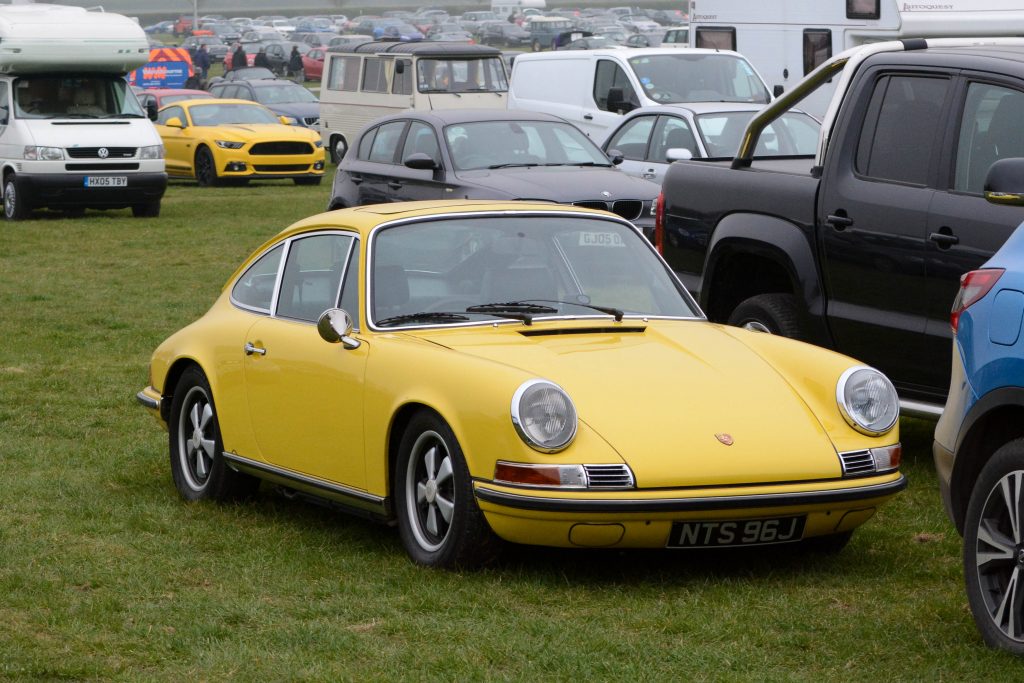
Once parked-up in the field opposite the circuit, I joined the the thronging crowd of fellow car nerds milling around gates like a bunch of alcoholics waiting for opening time.

As the gates opened promptly at 07:30, it was great to be able to walk across the deserted start/finish straight and pit lane, then wander past the spookily quiet food halls to reach the hallowed paddock in order to inspect the dormant automotive delights secreted in the famous Goodwood Sheds.

And so to the cars ……….. in alphanumeric order of course:-
Allard
Allards tick a lot of boxes for me – a great 1950’s creation (like me), powered by big American V8 engines, with solid racing pedigree and all wrapped up in some rather stylish bodywork.
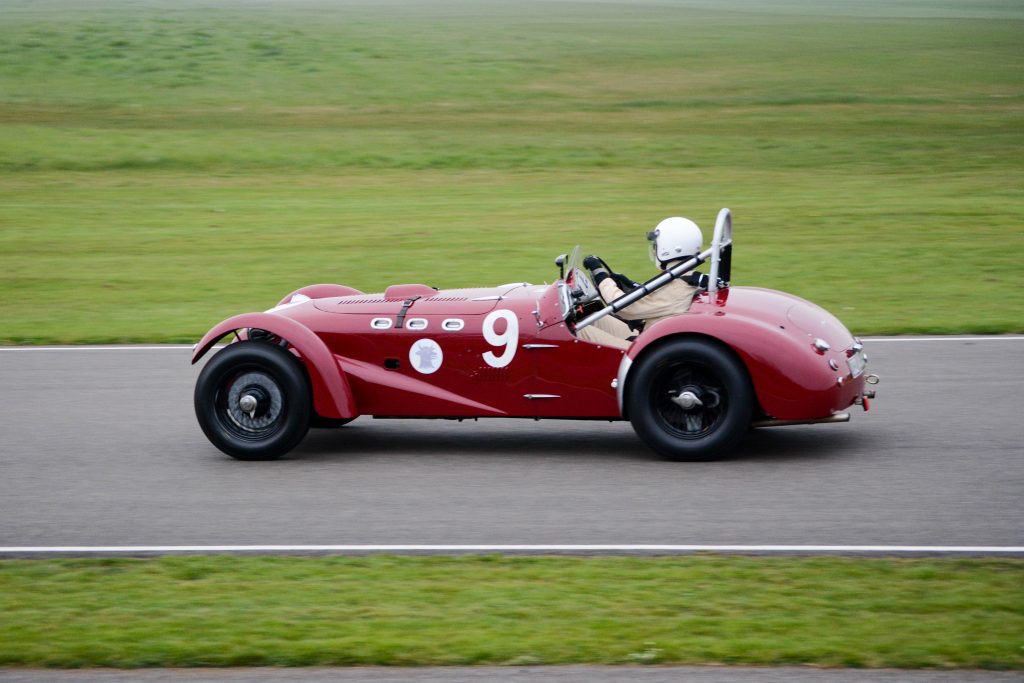
Sydney Allard was a great British innovator who decided to build the cars the way he wanted in order to compete in trials, rallies, track racing and even drag-racing. Along the way – he rubbed shoulders with and influenced a number of people who became automotive legends.
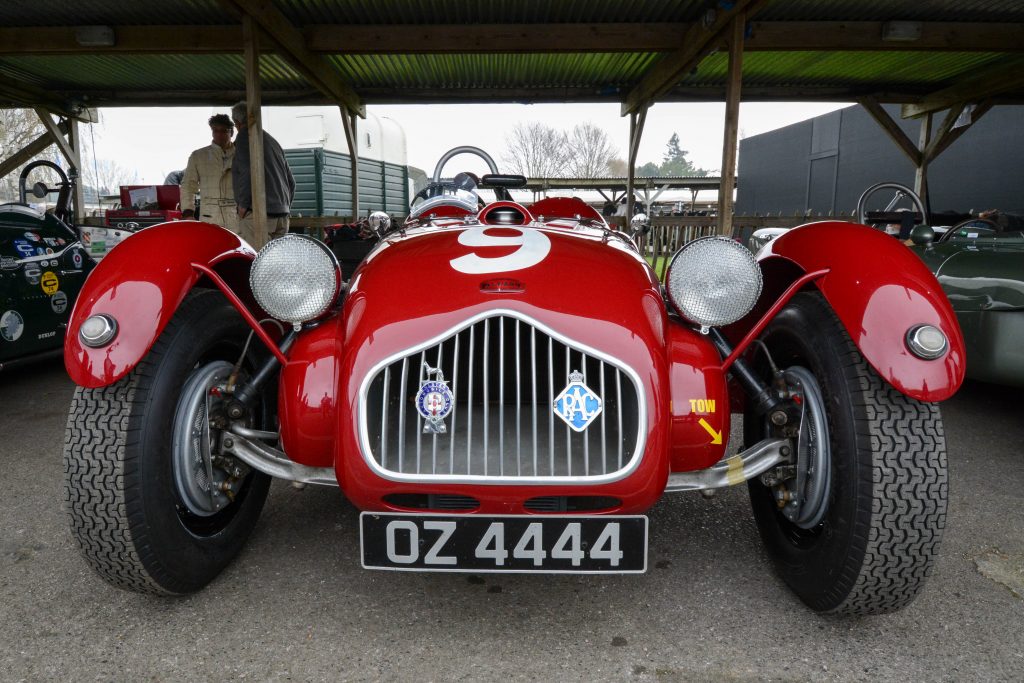
Both Carroll Shelby (creator of the Shelby Mustang and Shelby Cobra) and Zora Arkus-Duntov (creator of the Corvette Stingray) raced Allard J2 cars early-on in their automotive careers and both were undoubtedly influenced by Sydney Allard’s design philosophy.
The cars on show at Goodwood all dated from 1952 and comprised a J2 (the red car), a J2X (the dark green car) and the more streamlined J2X Le Mans (the light green car). Apparently the red J2 had been rescued from India and it arrived on UK shores as a collection of boxed bits. Whoever restored and reassembled this car did a great job. It looks and sounds fabulous.




See more about Euro/US Hybrids here:- A-Z of Car Stuff: H is for Hybrids (the Euro/US Variety)
Bizzarrini/Iso
I’m a big fan of Giotto Bizzarrini and his creations so it was great to see a Bizzarrini GT Strada and an Iso Grifo A3 Corsa in the Goodwood sheds and out on track.
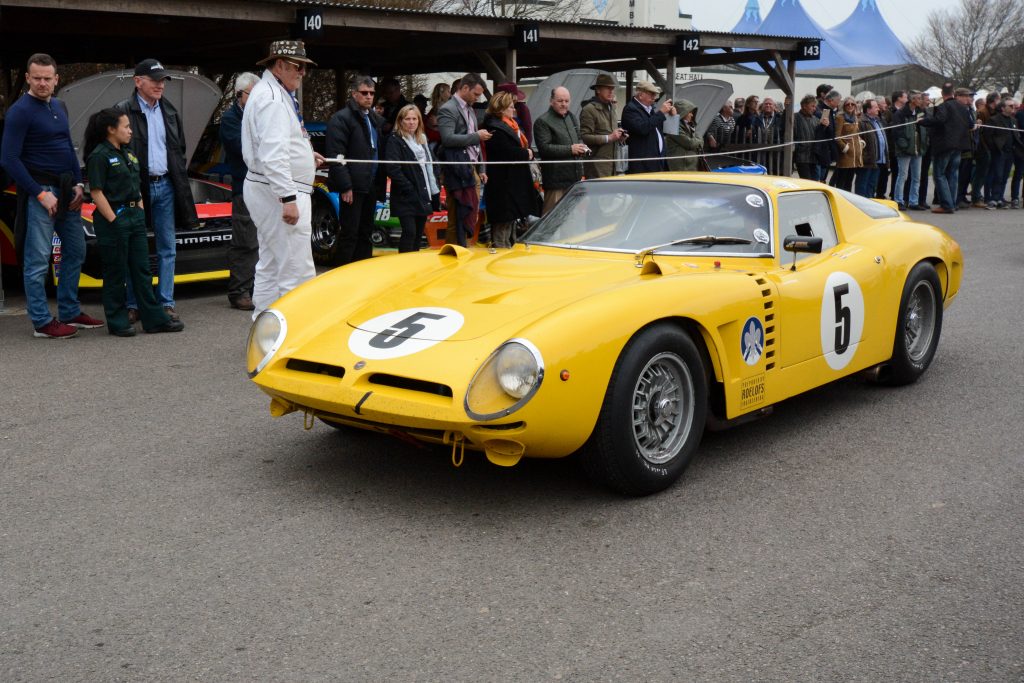
As you can see , these are essentially the same car and they happen to highlight Bizzarrini’s rather odd transition from creating cars under the Iso badge (for Renzo Rivolta) to ones bearing his own Bizzarrini badge. Iso somewhat unusually allowed Bizzarrini to take his Grifo A3 Corsa design with him and perpetuate it as Bizzarrini badged and Livorno built Strada and Corsa models.
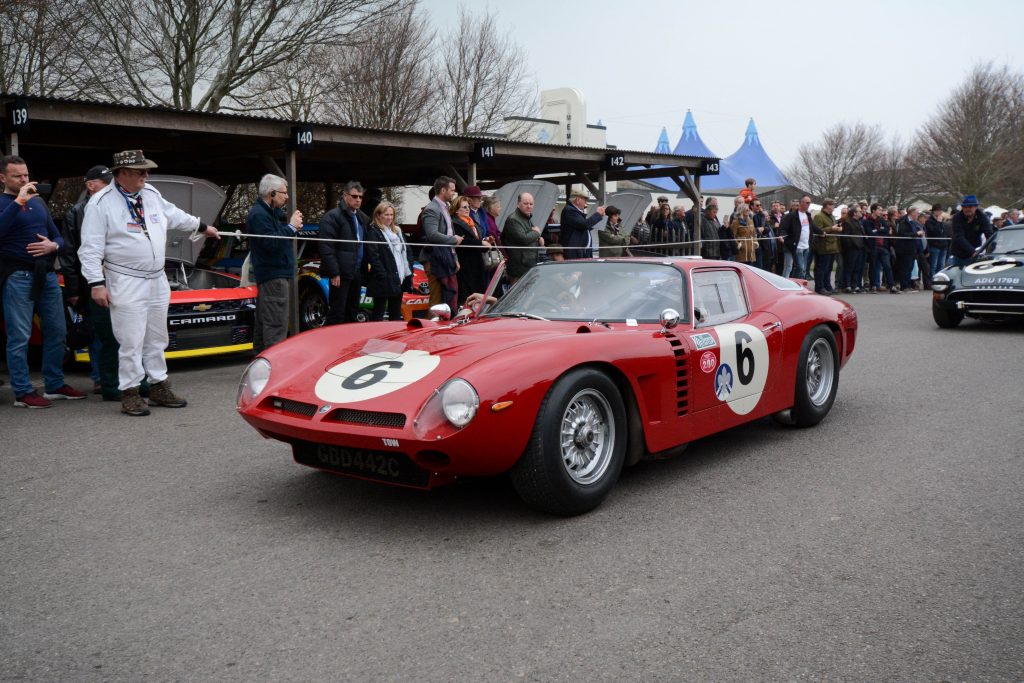
These two cars featured in Sunday’s Graham Hill Trophy race in which they locked horns with contemporary cars such as the Corvette Stringray, TVR Griffith, E-Type Jag, Porsche 904, Ferrari 275 GTB, Shelby Mustang, AC Cobra and Lotus Elan 26R. All great cars but if I had to pick one for my dream garage – it would without a shadow of a doubt be a Bizzarrini …….. or is that an Iso?
See more about Bizzarrini and his creations here:- A-Z of Car Stuff: Bis for Bizzarrini
Fiat S76 – The Beast of Turin
It’s always a delight to see the mighty Beast of Turin at events such as this. Having tracked down all of the globally scattered components of only two S76 cars ever built and then having spent spent eleven years restoring this priceless behemoth to fully working order, normal mortals would have settled on displaying it in a museum.
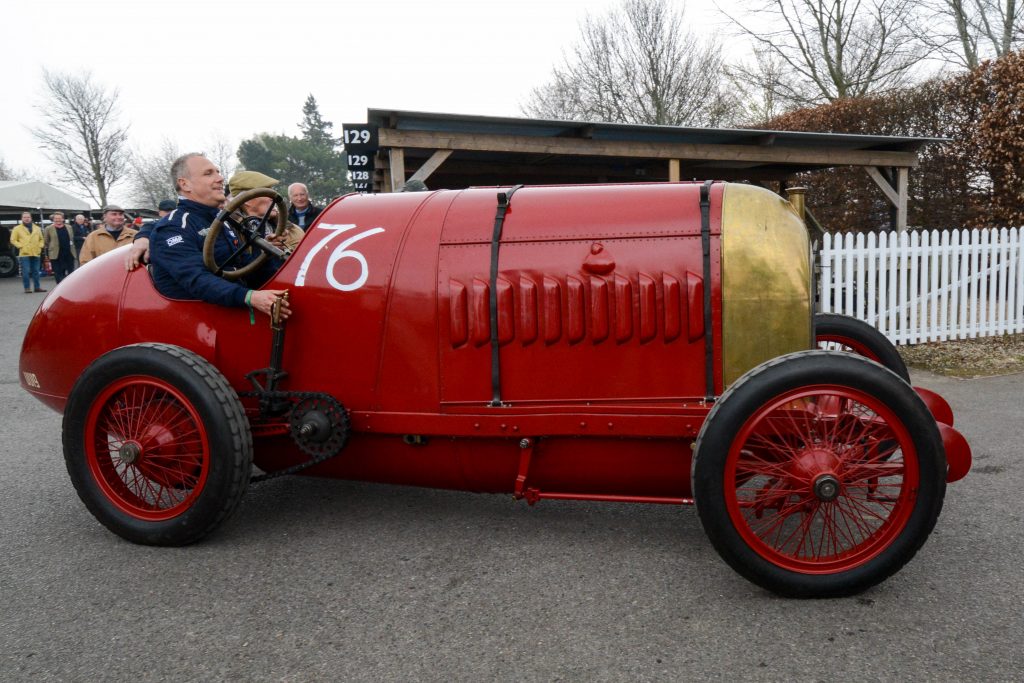
This was not to be the way for Duncan Pittaway. The owner, restorer and driver of this car takes it out for a drive at every possible opportunity. He’s driven it to Goodwood on public roads, then raced it around the track and I’ve even seen him rather insanely drive this straight-line land speed record car up the twisting and turning circuit at Prescott Hill Climb.
Barmey but brilliant in equal measure – Duncan I salute you! By the selfless approach that you’ve taken – a much larger proportion of the automotively interested population has been able to see, feel and hear the beast close up although some might have been ever so slightly singed due to overly close proximity to those those flaming exhausts!
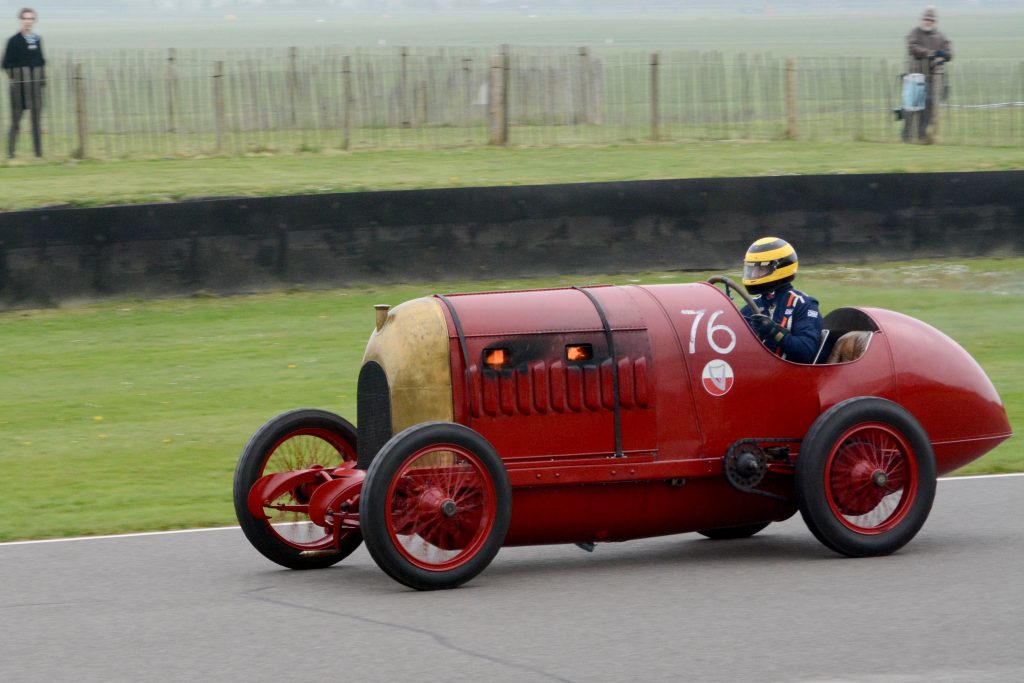
Unfortunately the Beast wasn’t fully on-song during Sunday’s S.F. Edge Trophy Race as was obvious by the amount of smoke emanating from the twin exhaust outlets high-up on the side of the bonnet. These somewhat rudimentary exhaust are normally belching flames as if the car was the personal transport of Hades!
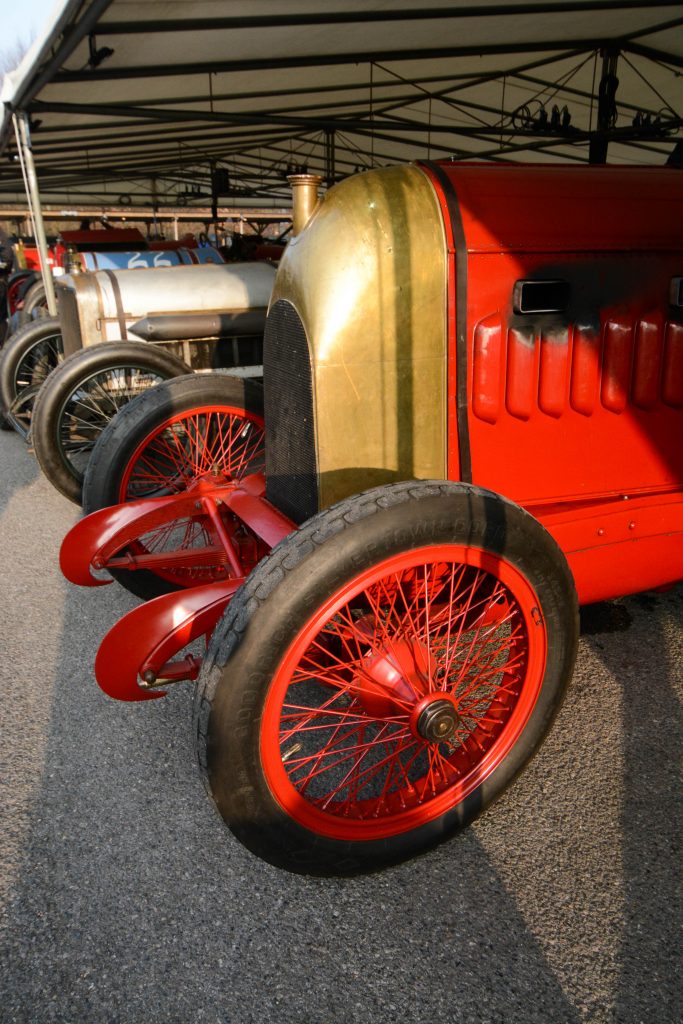
The Beast towering over neighbouring cars 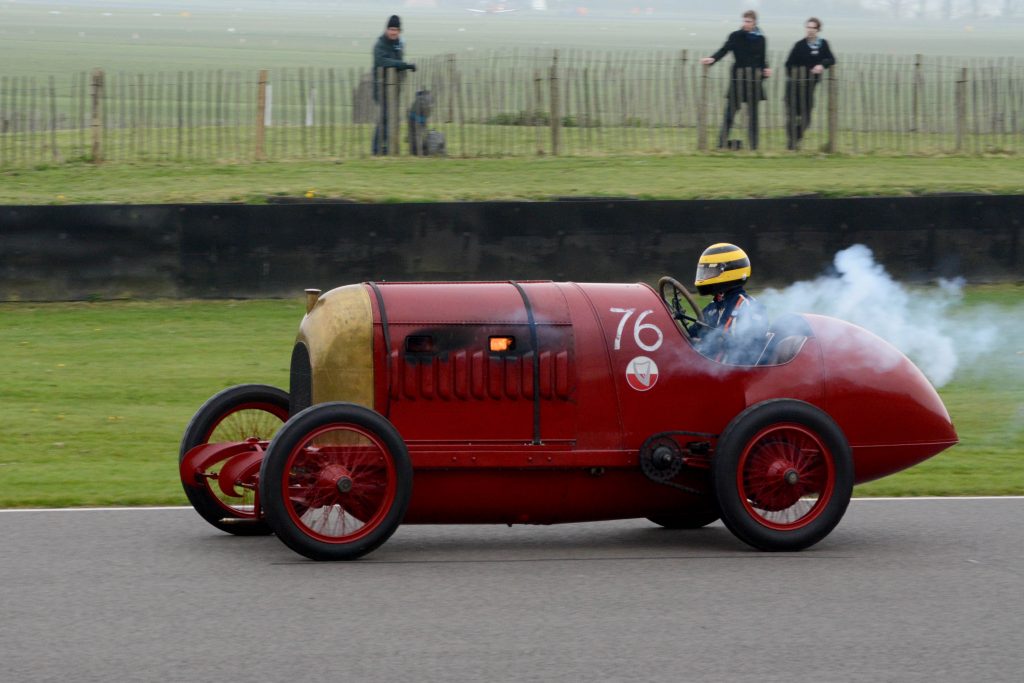
There’s no smoke without fire 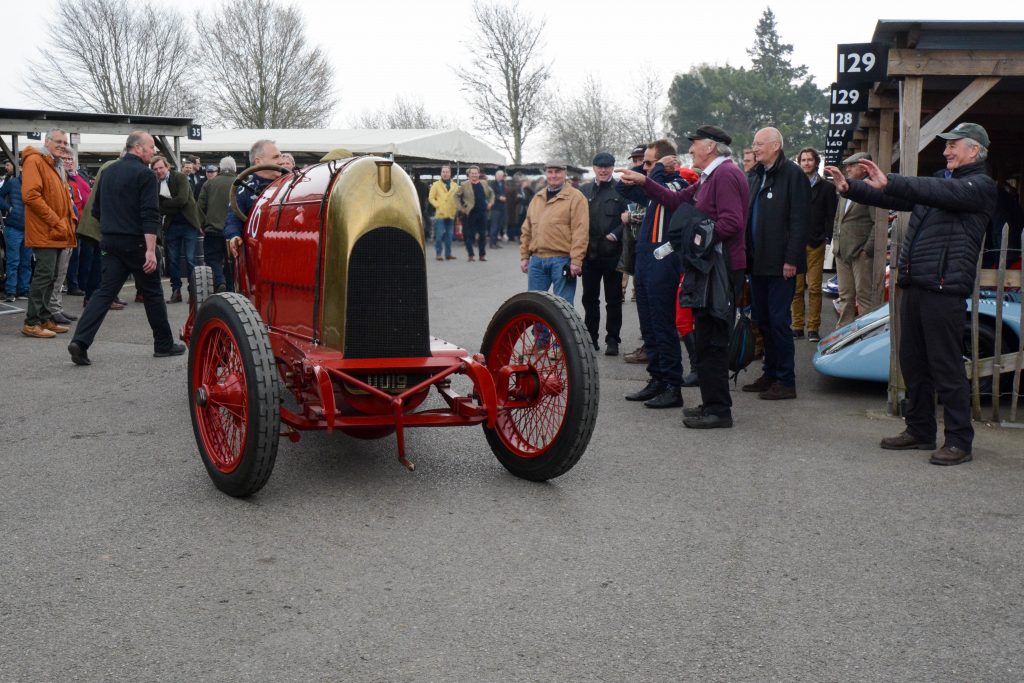
The Beast surrounded by admirers 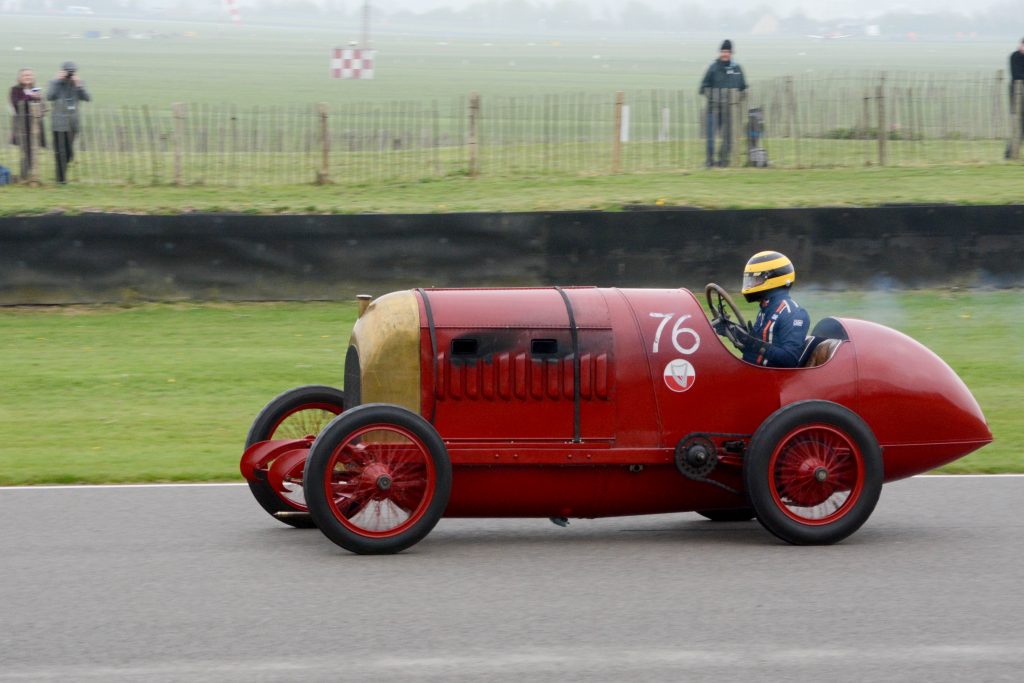
1911 Fiat S76 Land Speed Record car 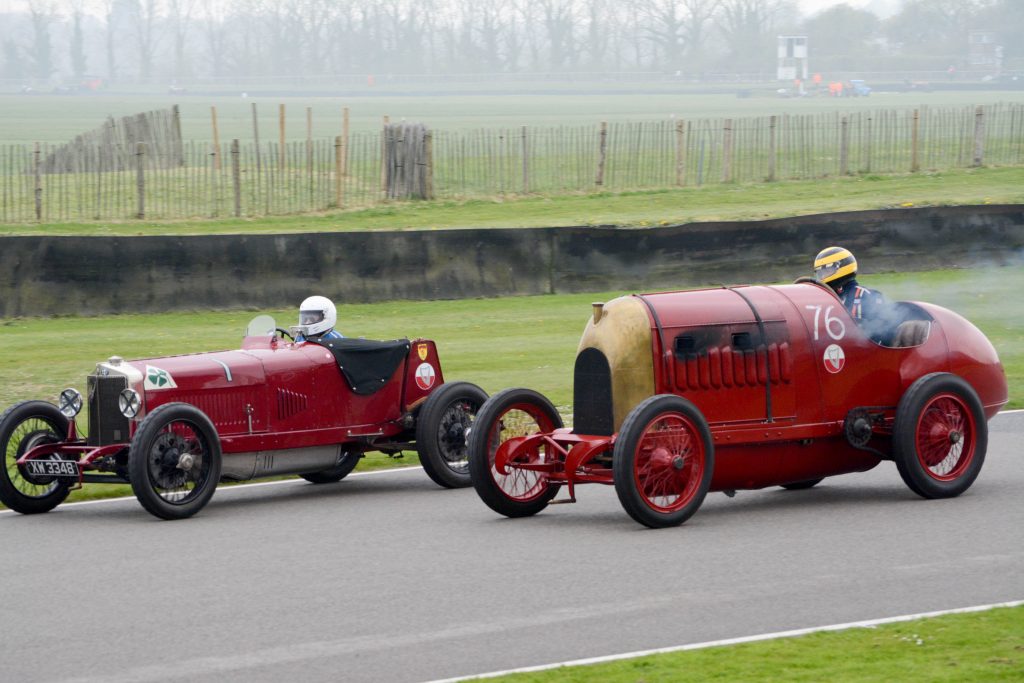
Beauty and the Beast
Ginetta G10
The Ginetta G10 is a curious beast. It dates from 1965 when the original founders of the company (the talented Walklett brothers) were at the helm of this still surviving British specialist car manufacturer.
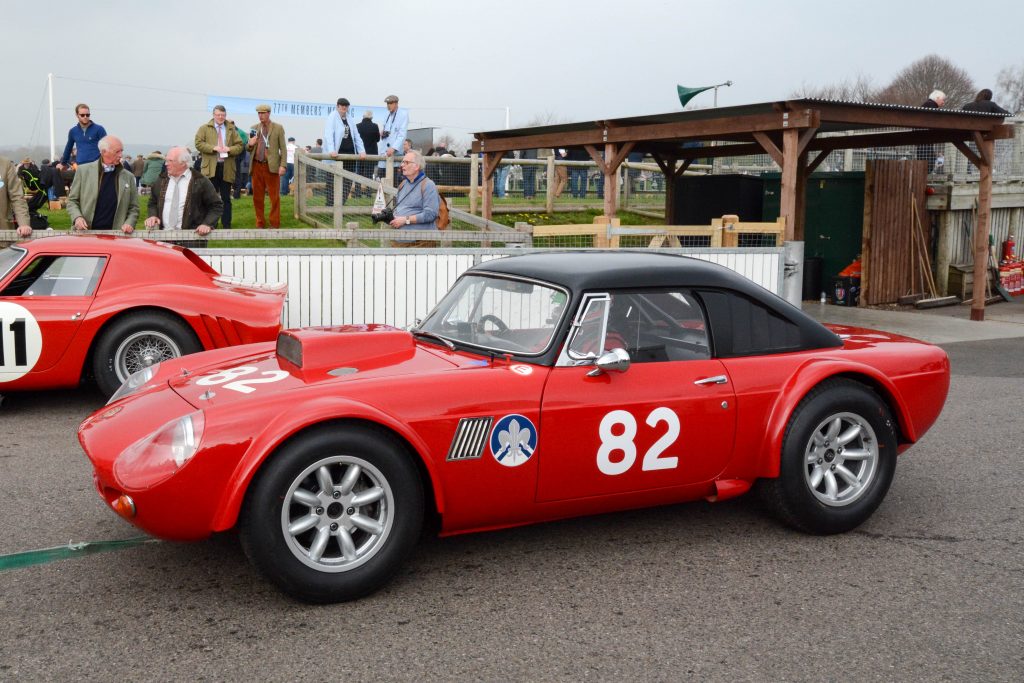
Early Ginetta models (the G2, G3 and G4) utilised small capacity (up to 1500cc) 4-cylinder Ford engines but with the G10 – Ginetta took the rather radical step of fitting a 4.7 Litre V8 from the Ford Mustang into their well crafted chassis and fibreglass body creation.
This big-banger Anglo-American hybrid was meant to be homologated into a US road/race series to fight against Cobra’s, E-Type Jags, Mustangs etc. Failure to achieve homologation meant however that the G10 would need to compete against far more powerful McLaren and Lola sports prototypes. With this fairly pointless prospect, the V8 engined model was effectively abandoned with only 3 or 4 cars being built.
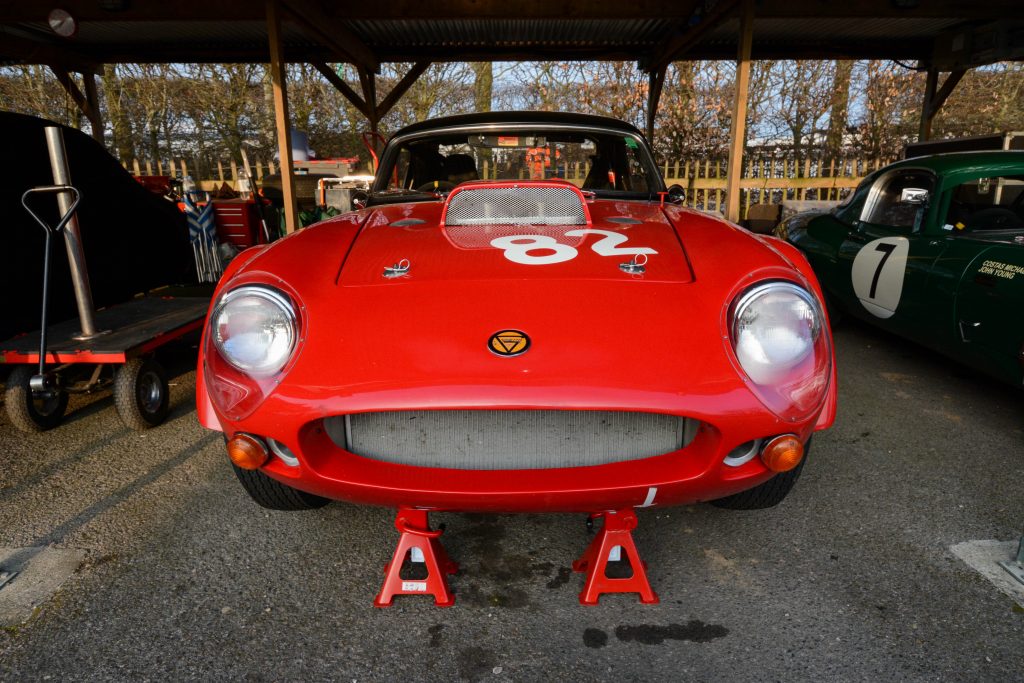
To make some use of the body/chassis design however, Ginetta adapted it to use the MGB 1800cc engine and modified MGB rear suspension. In this form it was marketed as the G11 but this model was also quite short lived.
This very car won its first race outing at Brands Hatch in November 1965 in the capable hands of Chris Meek – beating the quick and slippery Low Drag E-Type of Dick Protheroe.
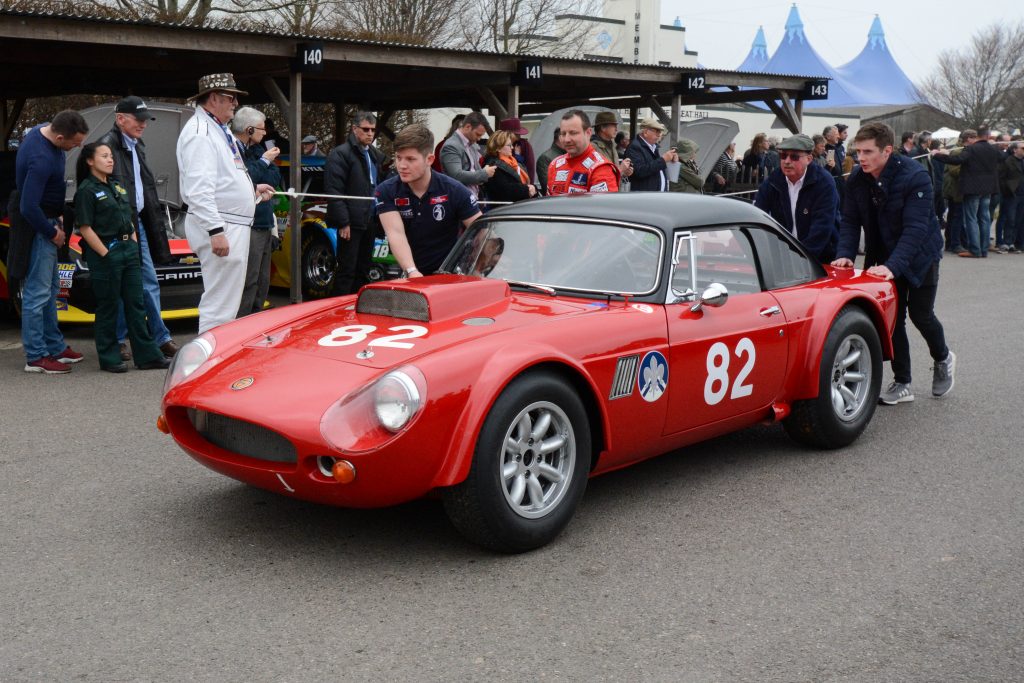
I checked my old photos and I actually saw this same car racing at Donington in the early ’80s when it had maroon and gold bodywork so it was really nice to see it still being campaigned.
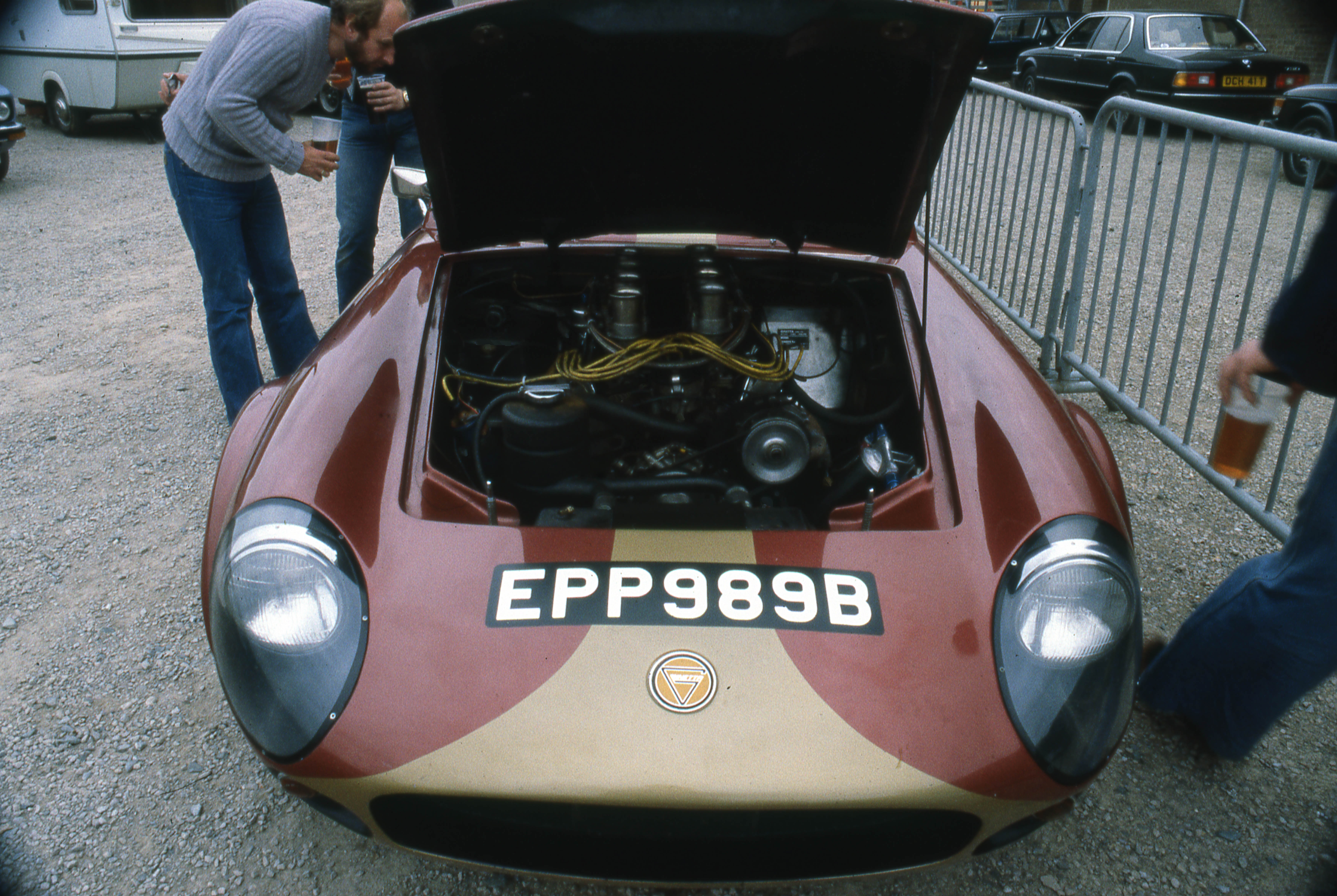
With it’s bonnet up – it was really interesting to how far back the V8 engine is positioned in the chassis to improve front to rear weight distribution and balance. It is an extremely nice well prepared and well presented racing rarity!
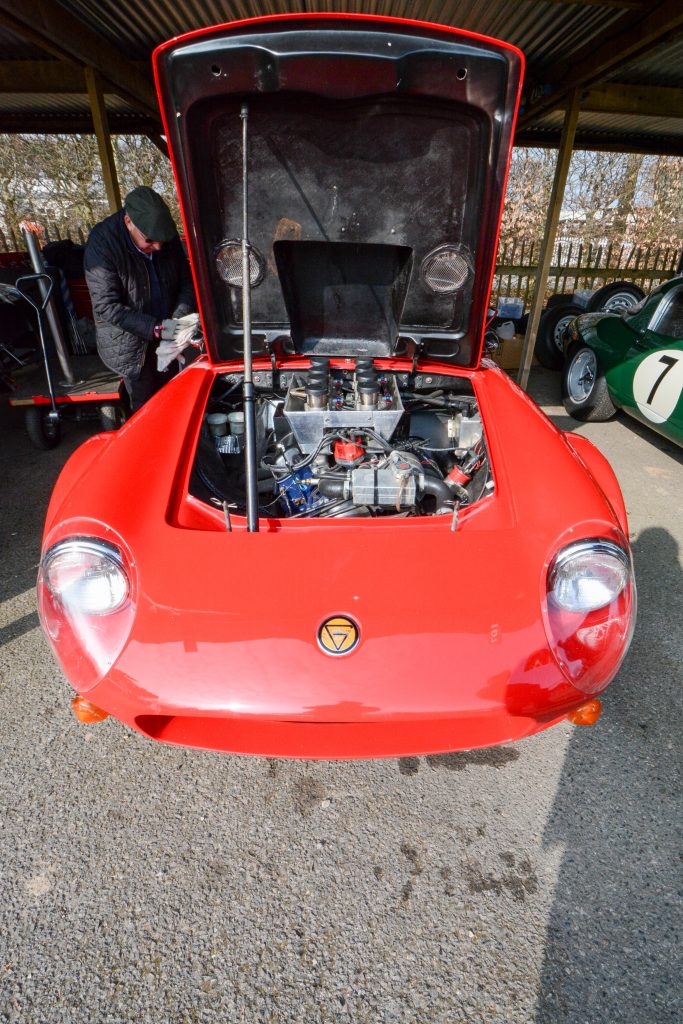
The G10 looks very similar to the MGB Roadster of the same period and this is largely due to the use of MGB Roadster doors and front windscreen but the rather large vented bonnet bulge feeding air to the car’s gulping carburettors is where the similarity ends.
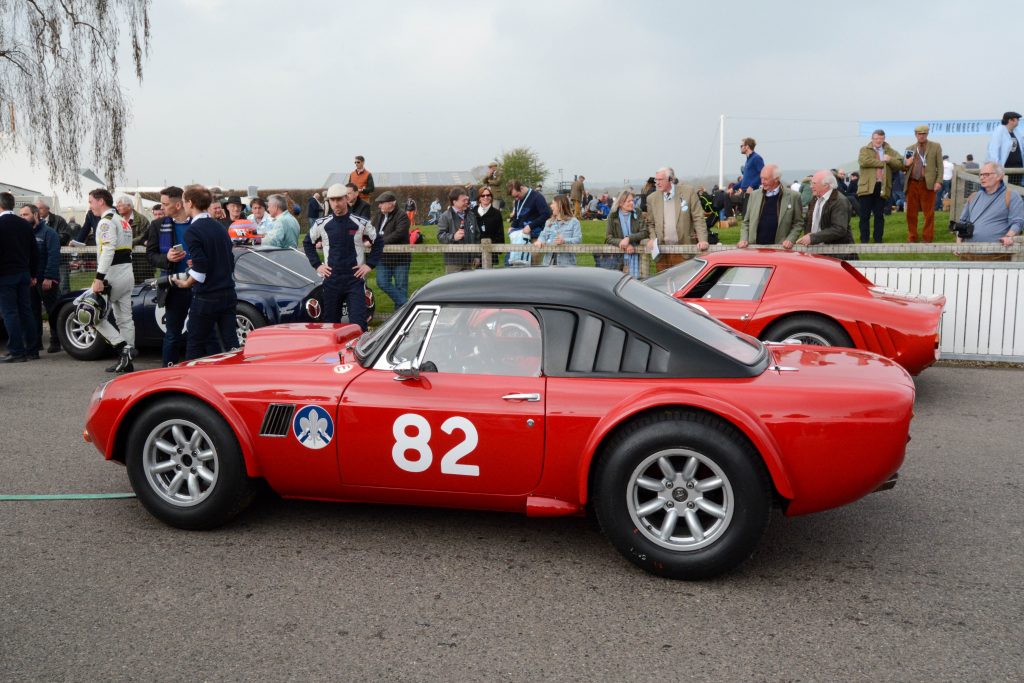
Maserati
I really love early the pre-war Maserati’s which were created by the brothers Maserati (Alfieri, Bindo, Carlo, Ettore and Ernesto) and I also like the post-war cars up until the early ’70s but things went a bit strange after that for the trident badged cars.
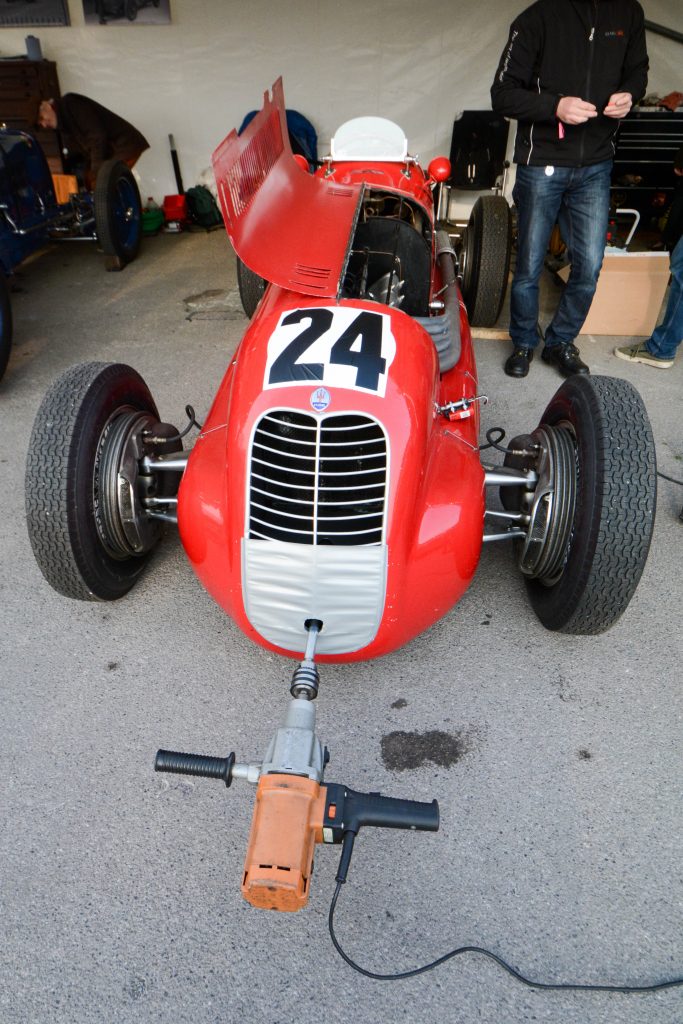
Maserati’s built from the ’30s right through to the ’60s are almost always beautifully stylish cars and this was borne out at Goodwood by a lovely selection of cars clad in Maserati racing red paintwork …… of course.
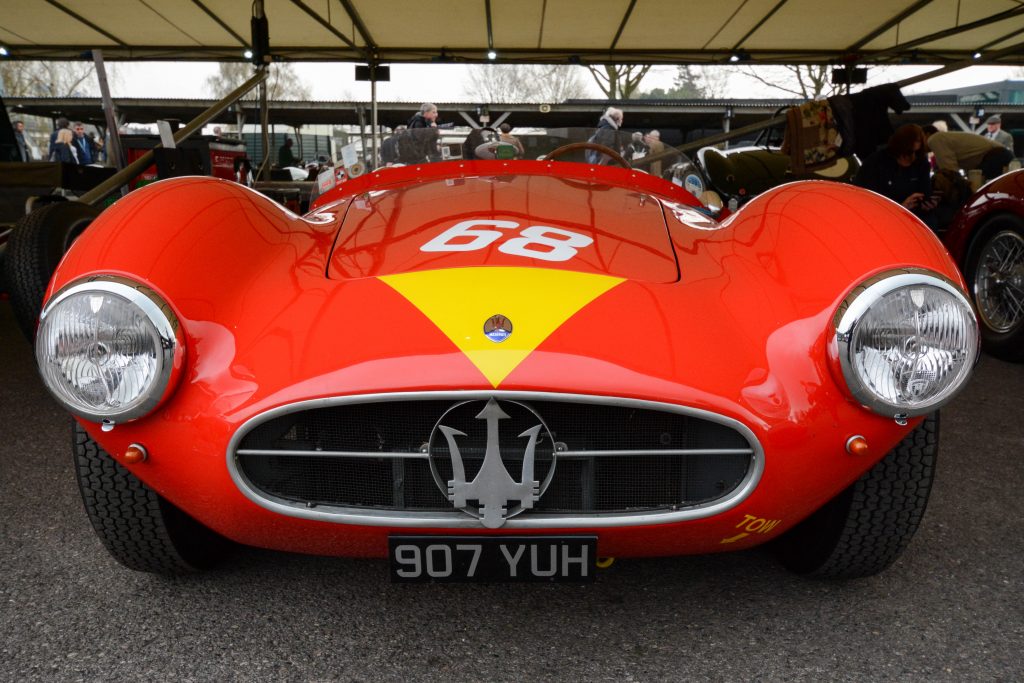
It was lovely to watch the ’38 6CM being spun up using are rather fun looking starting device and hearing it being revved to warm-up the engine ready for action. Unfortunately this did somewhat interrupt the quiet contemplation of the Goodwood Circuit Sunday Morning Service so the marshals were quickly on-hand to politely request that the engine be switched-off until the service ended.
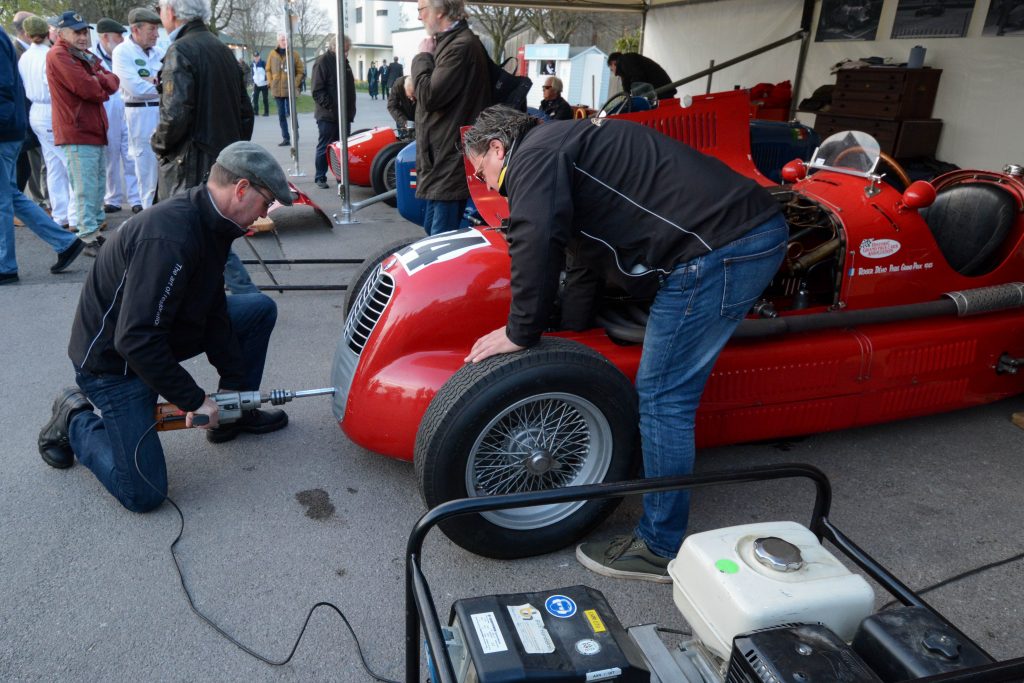
Maserati’s were driven by racing driver royalty including Ascari, Behra, Bonetto, Bonnier, Chiron, Claes, Collins, Fangio, Gonzales, Gregory, Harrmann, Lang, Magioli, Moss, Rosier, Schell, Taruffi and Villoresi …….. to name but a few! The fact that such legends wanted to be associated with these cars is enough to confirm their quality and the driver’s trust in them to deliver racing success.
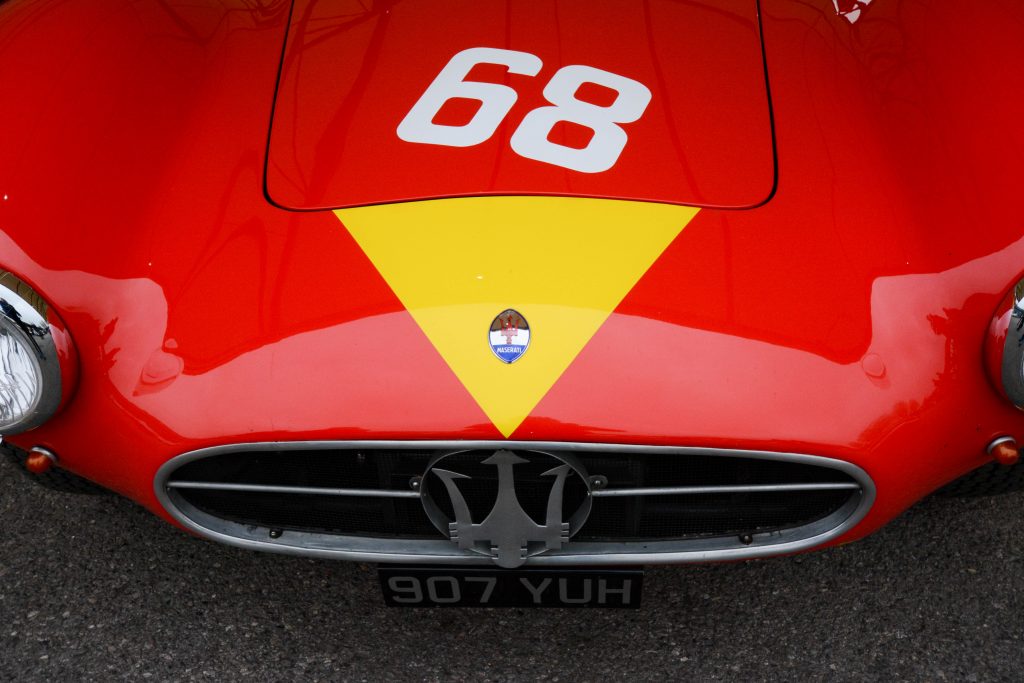
1955 Maserati A6GCS 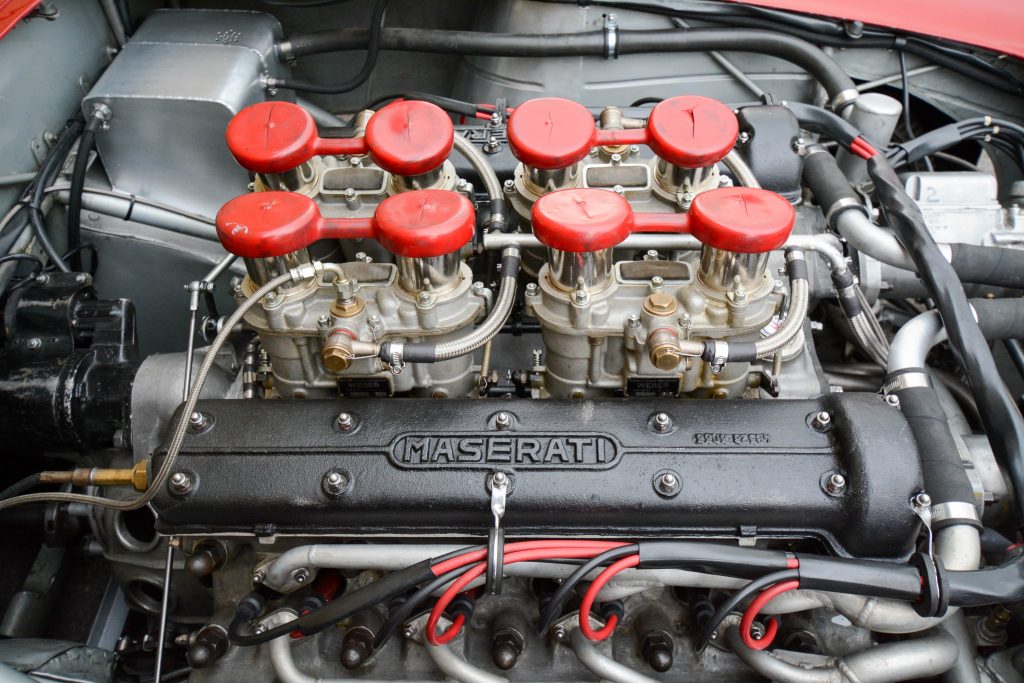
Maserati engine 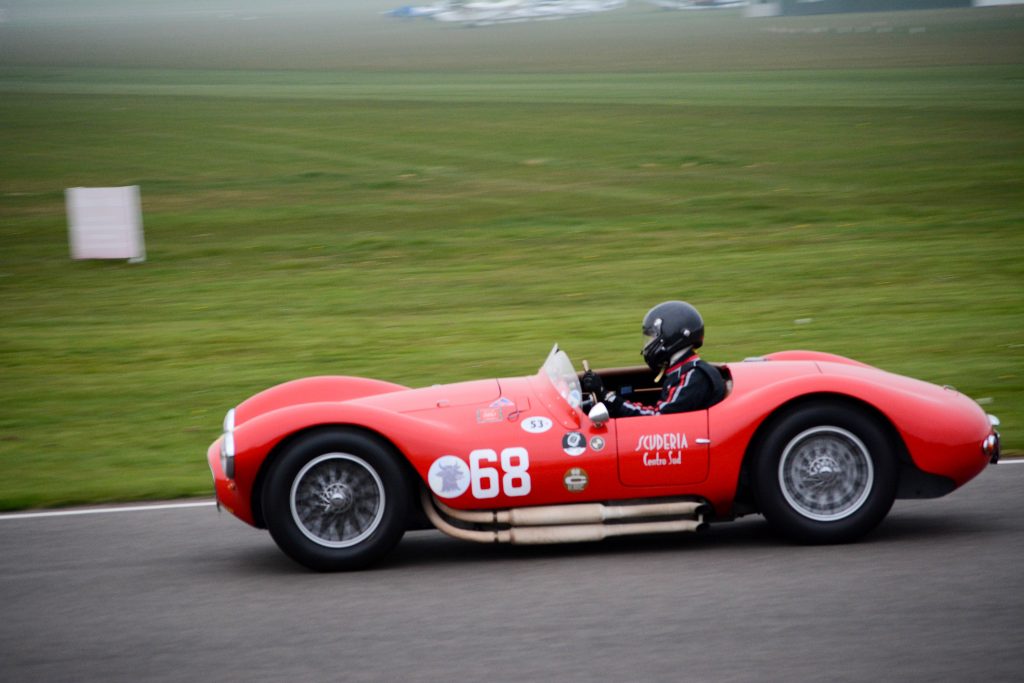
1955 Maserati A6GCS 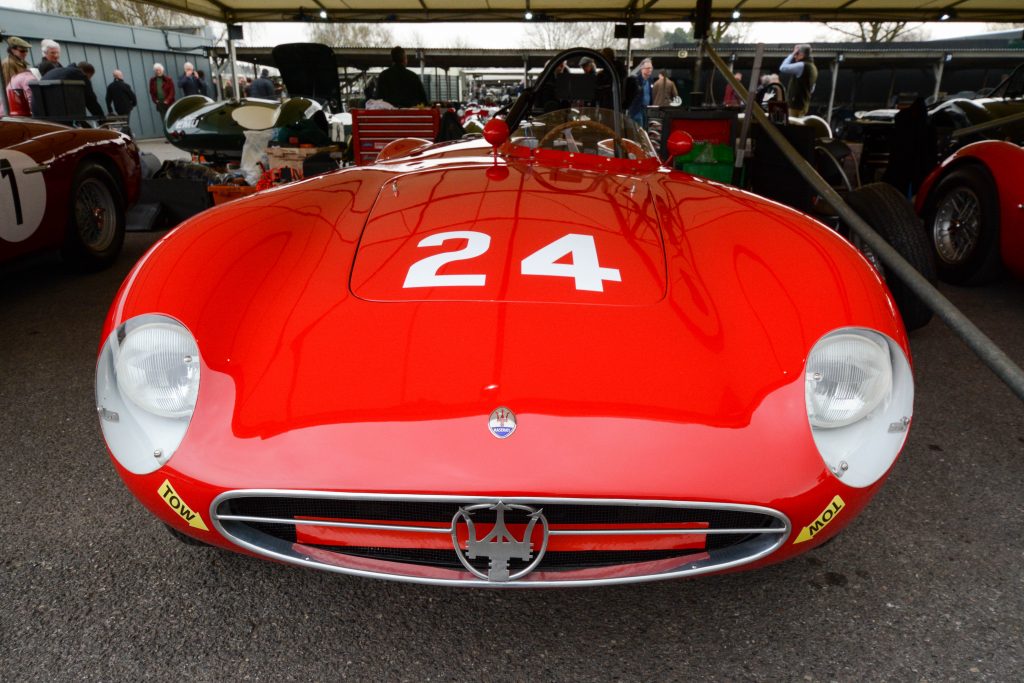
1955 Maserati A6GCS 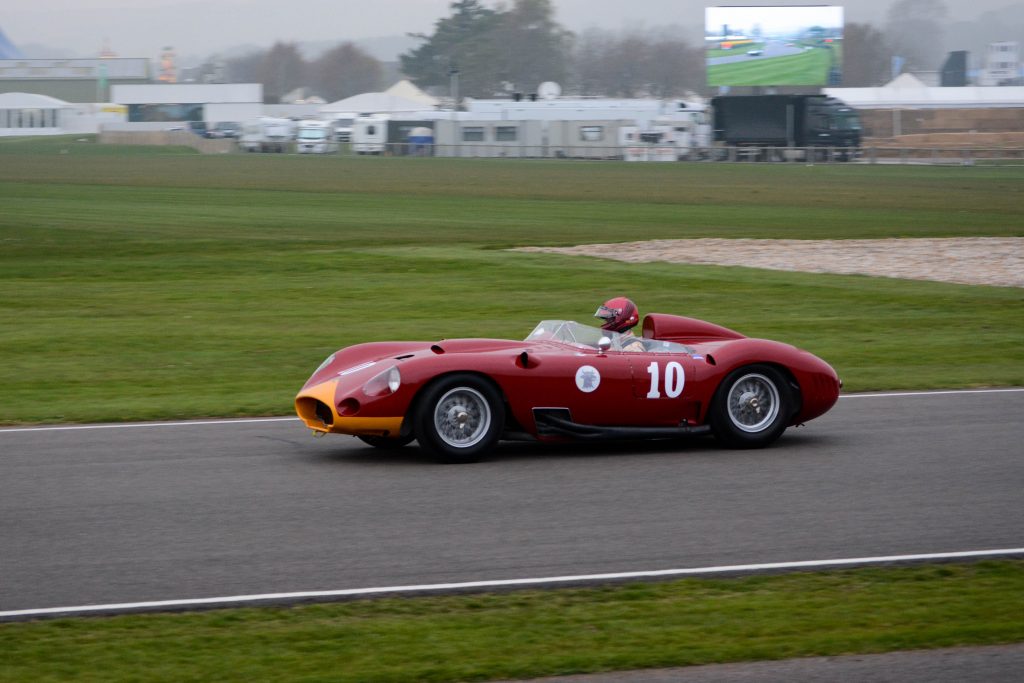
1957 Maserati 450S 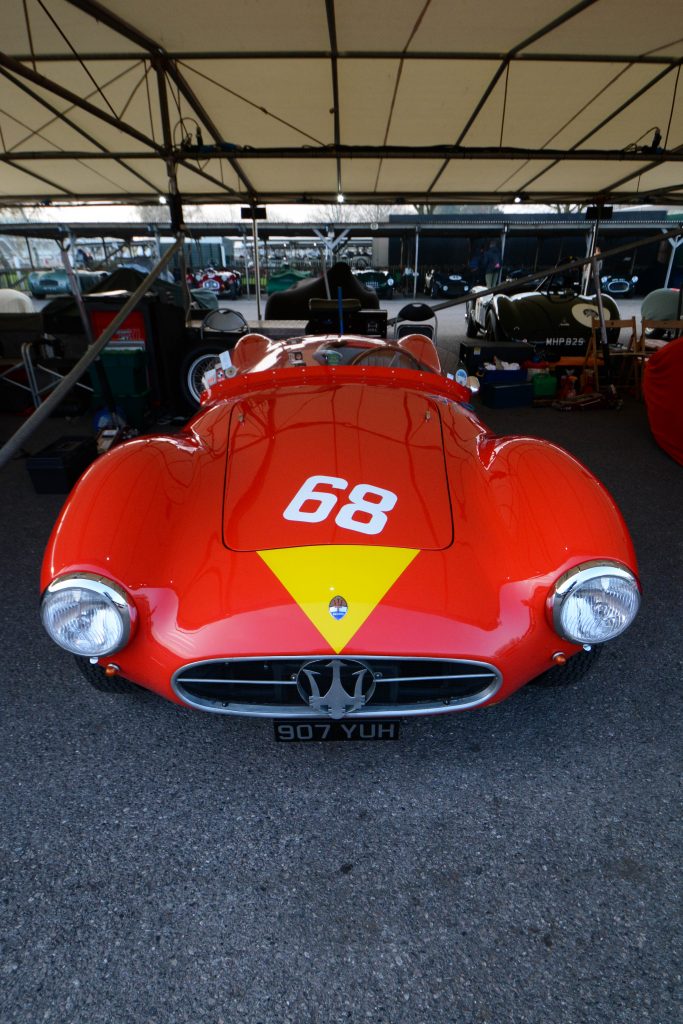
1955 Maserati A6GCS
Porsche 356
Secreted in the corner sheds of of one of the paddocks was a lovely little gaggle of race prepared 356’s including no less than three Speedsters of various ages.
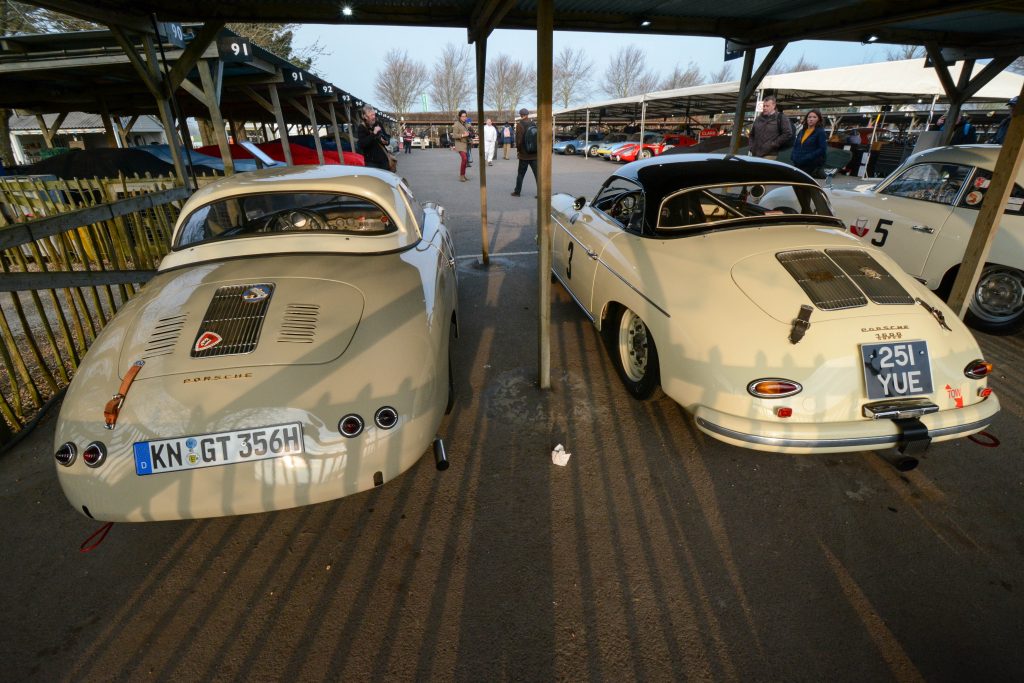
All of the 356’s looked sublime in the early morning sunshine but the two speedsters fitted with detachable hardtops looked particularly pretty and purposeful. A 356 will be mine! ……… One day!
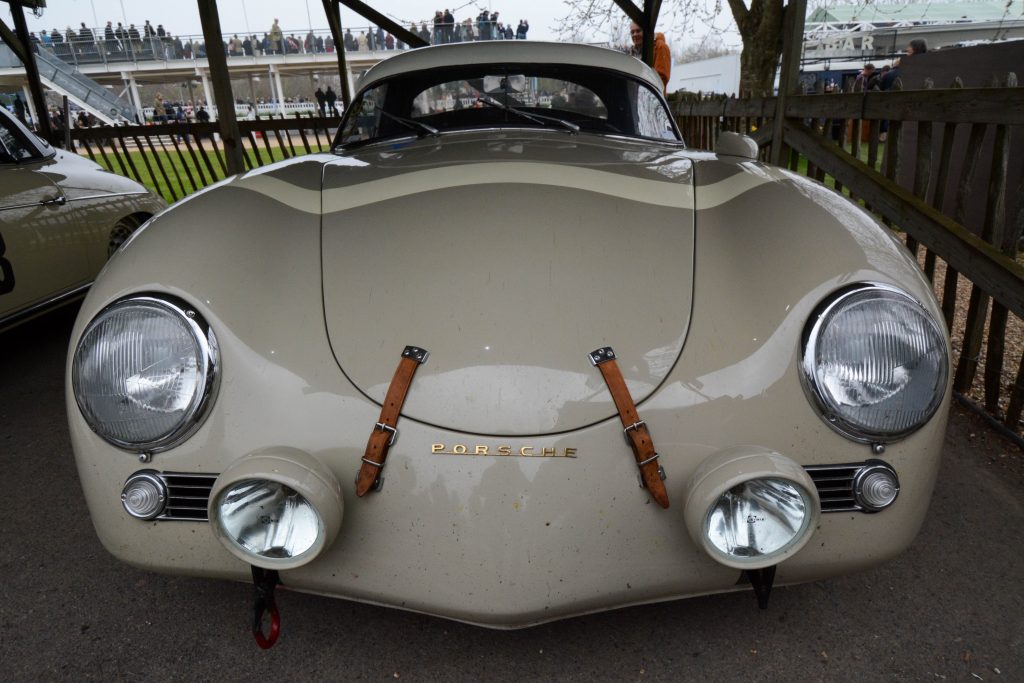
1956 Porsche 356 Speedster 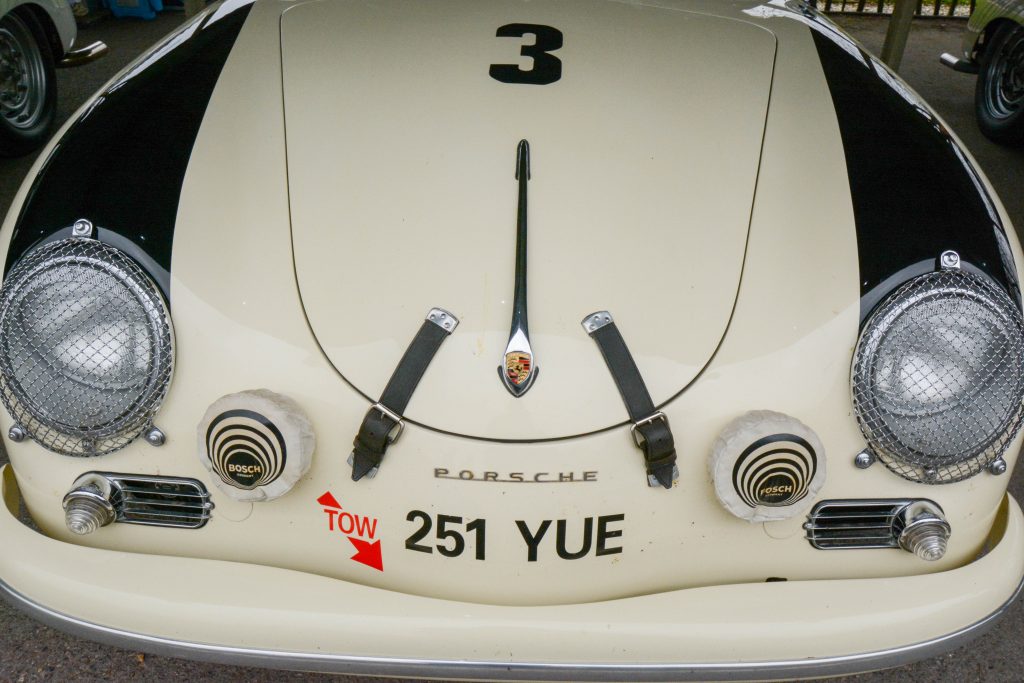
1957 Porsche 356 Speedster 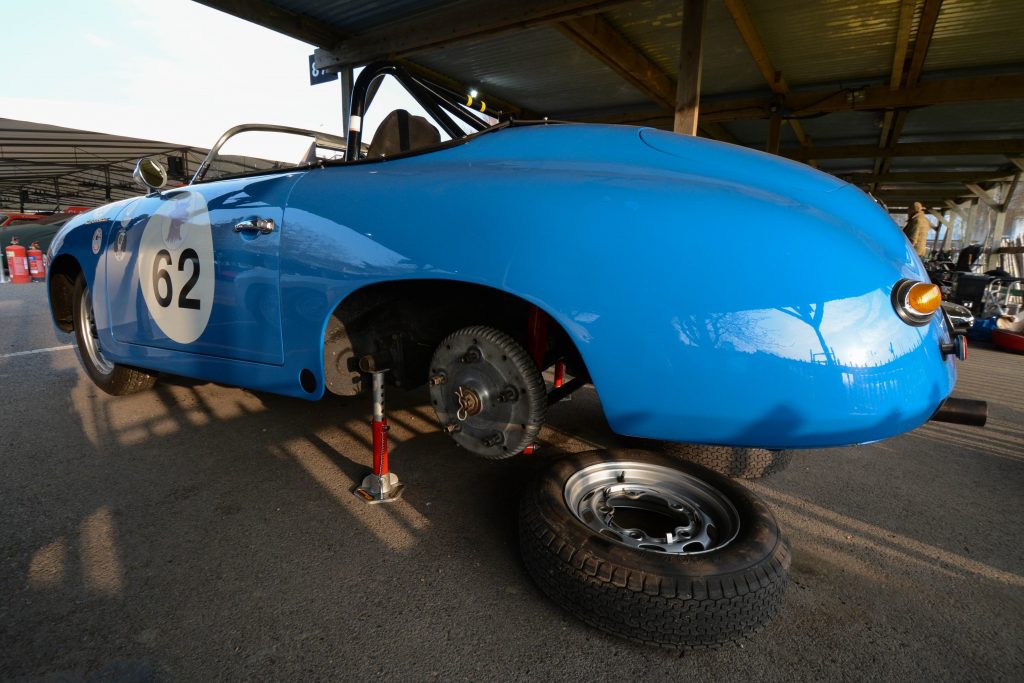
1958 Porsche 356A Speedster 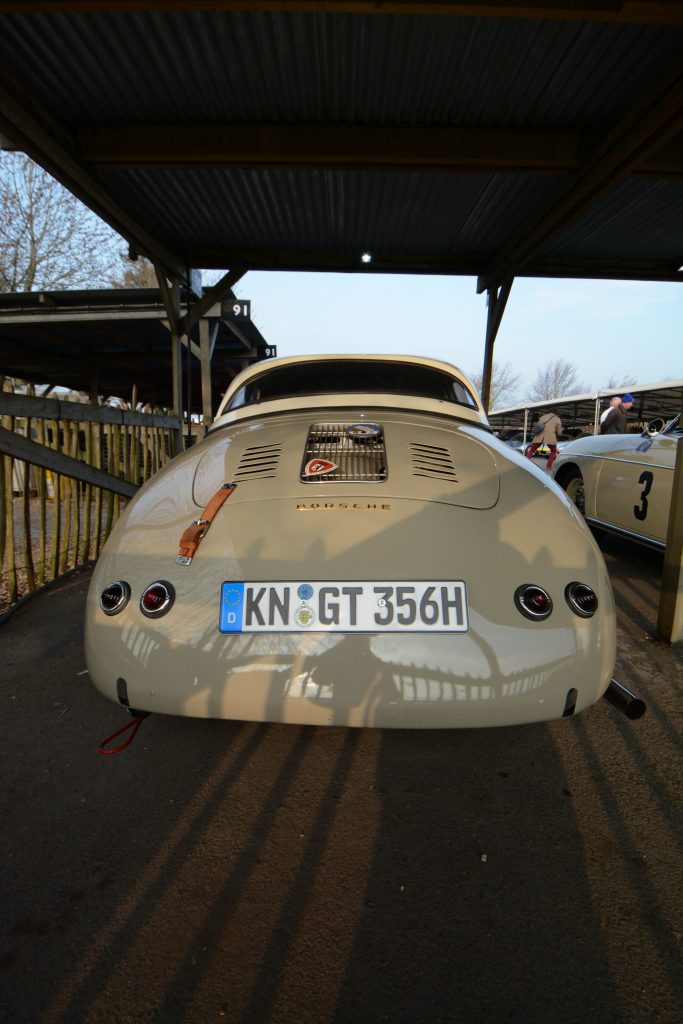
1956 Porsche 356 Speedster 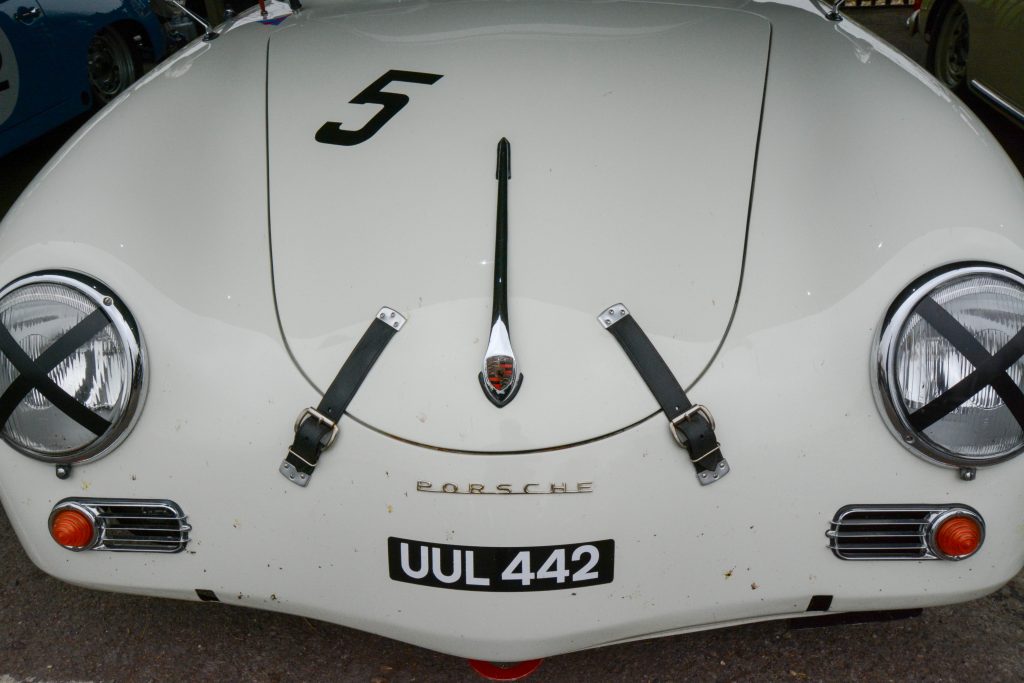
1957 Porsche 356 Coupe 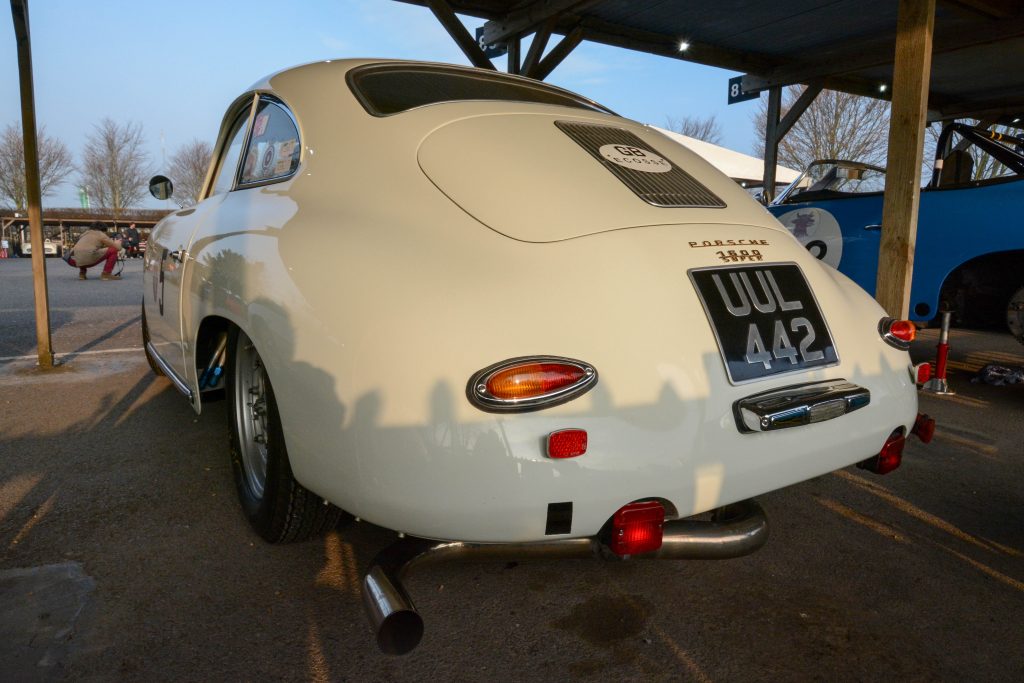
1957 Porsche 356 Coupe 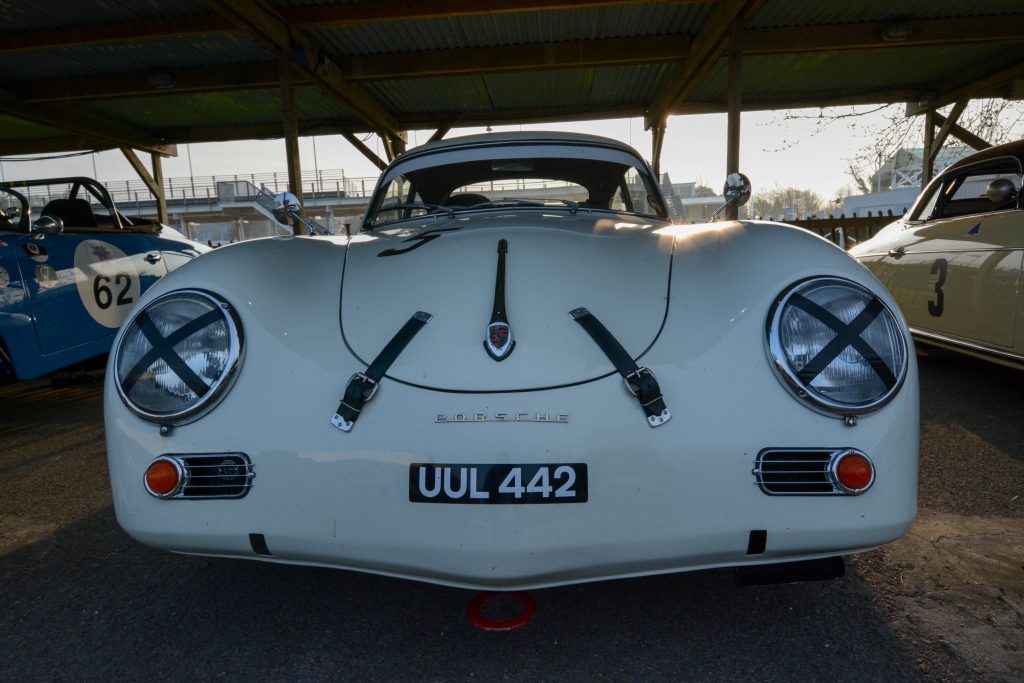
1957 Porsche 356 Coupe 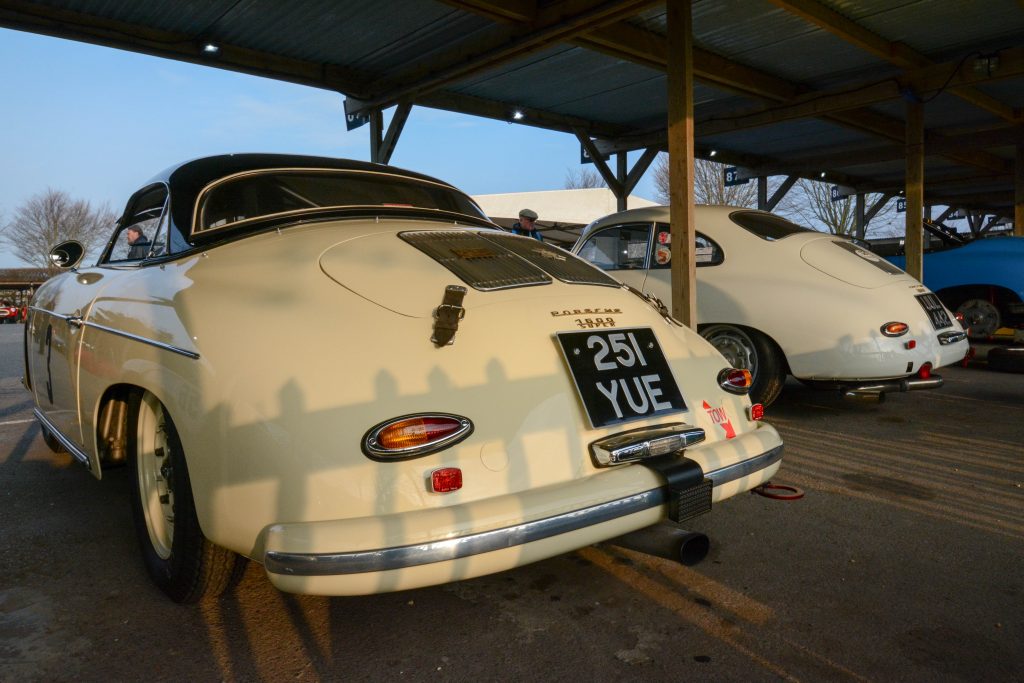
1957 Porsche 356 Speedster (left) and 1957 Porsche 356 Coupe (right) 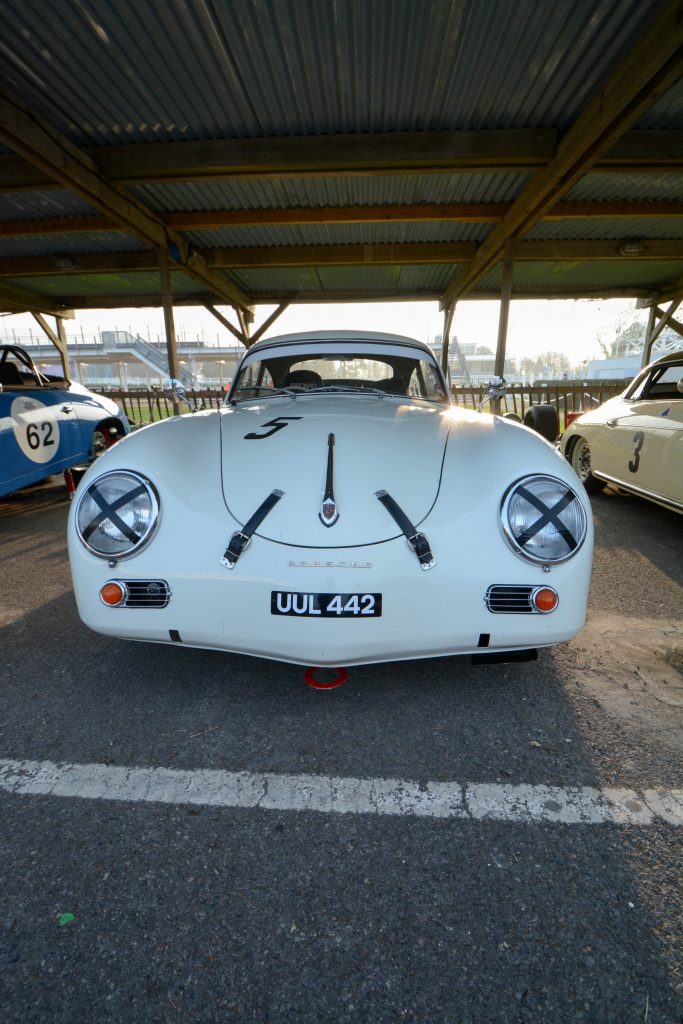
1957 Porsche 356 Coupe 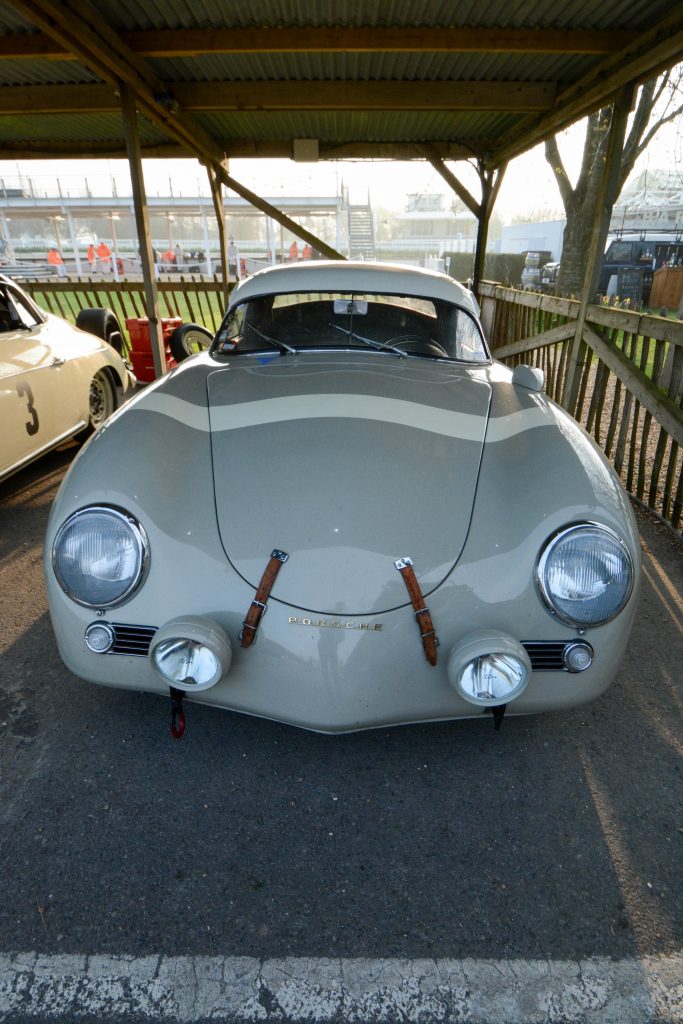
1956 Porsche 356 Speedster 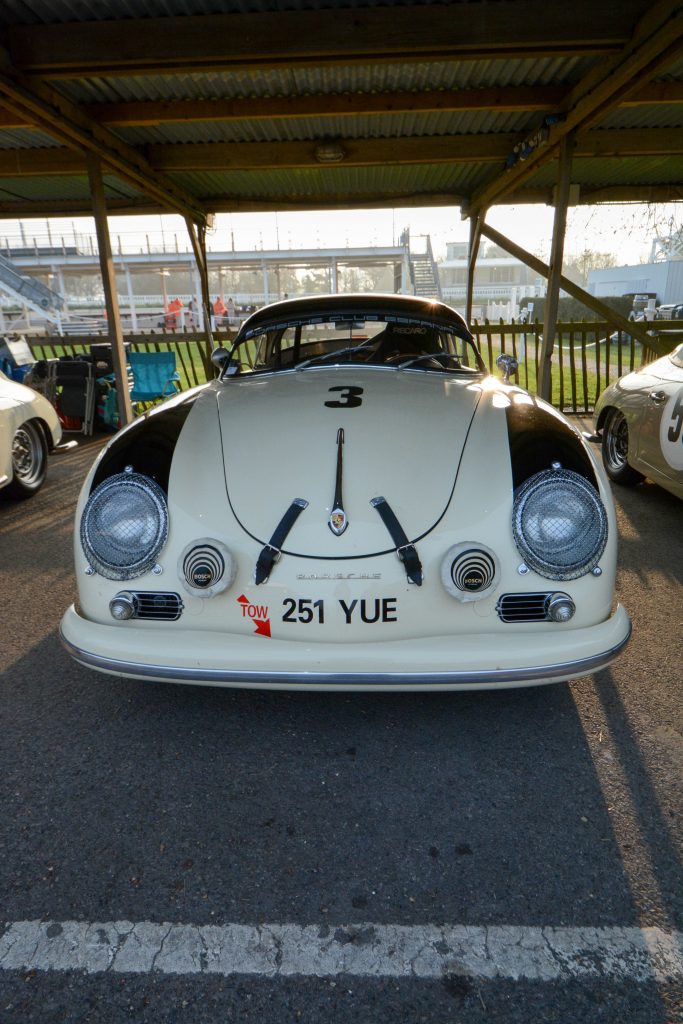
1957 Porsche 356 Speedster
Porsche 904
The Porsche 904 also known as the Carrera GTS had an all too short two year production run during 1964 and 1965. A total of one hundred and six cars were produced with most being powered by the Ernst Fuhrmann designed 356 Carrera four-cam engine as the 2.0 Litre flat-six (built to power the new 911) wasn’t available until 1965.
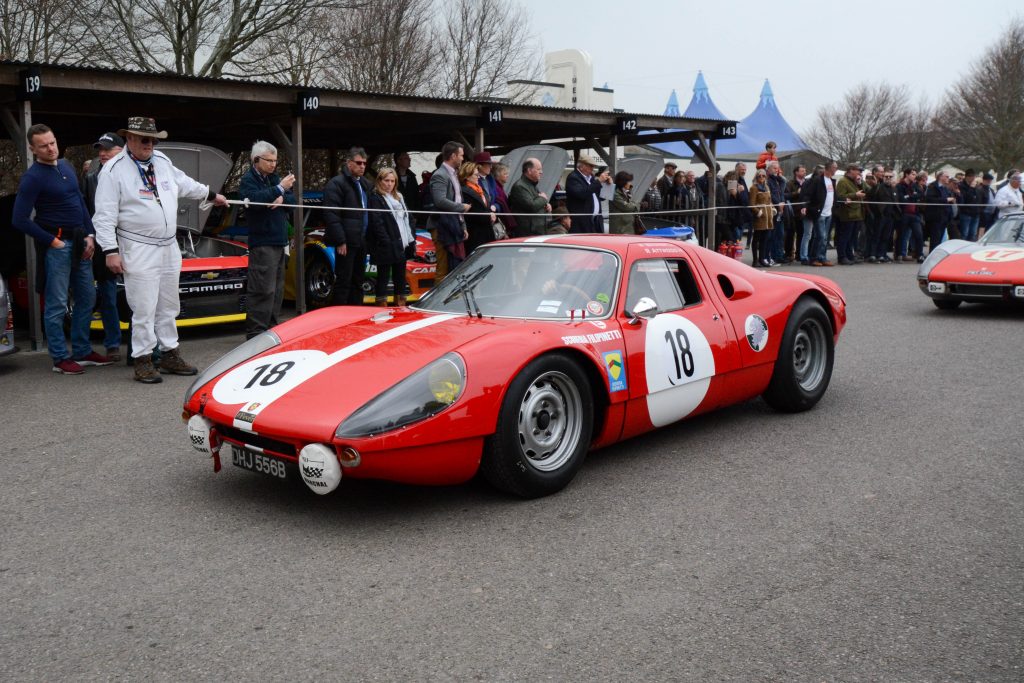
The 904 really is one of the most beautiful cars that Porsche ever made but that should hardly be surprising as it was designed by Ferdinand Alexander “Butzi” Porsche around the same time as he designed the 911.
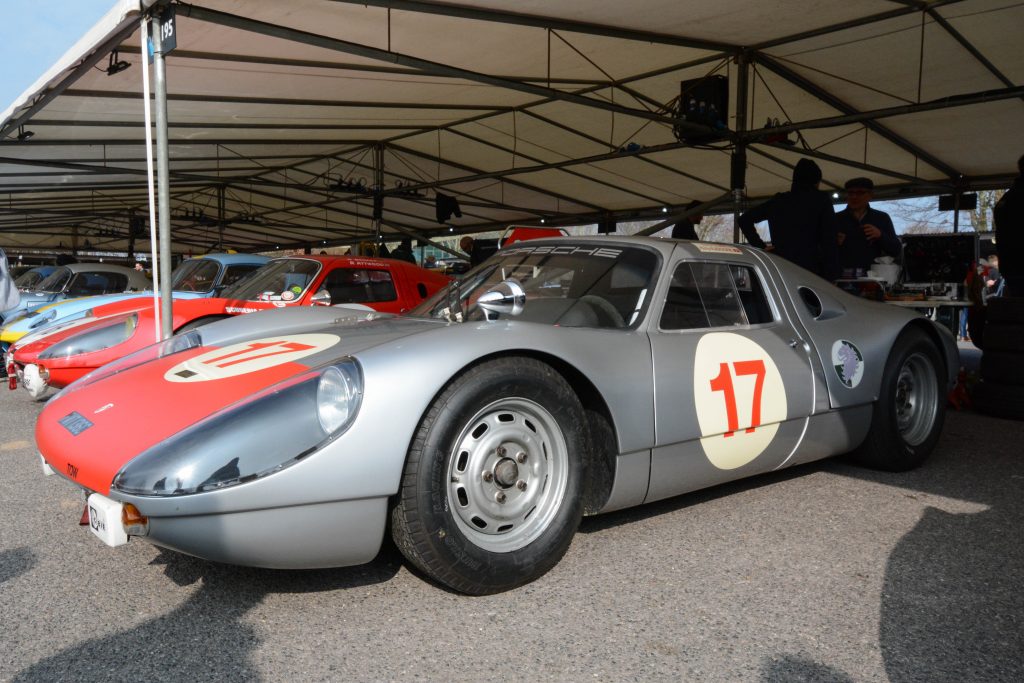
Although there were road going versions built for homologation purposes – the 904 was really designed to race so the need for light weight (just 655kg in race trim), nimble handling and good power to weight ratio were of paramount importance. This led to some rather unusual (for Porsche) construction innovations. A ladder chassis was used for the first time, this was bonded to a very lightweight fibreglass body shell and the engine was mid-mounted.
There were also a couple of experimental flat-eight versions of the 904 which must have been fantastic and the design innovations of this model provided the foundations for the next stage or Porsche race car evolution – the 906.
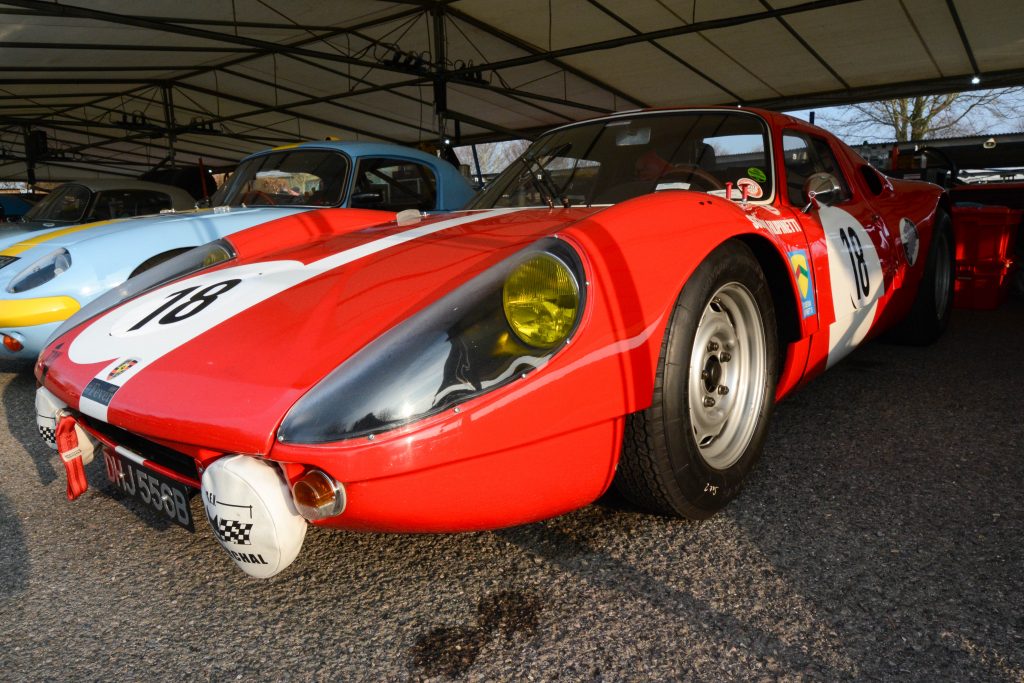
1964 Porsche 904 Carrera GTS 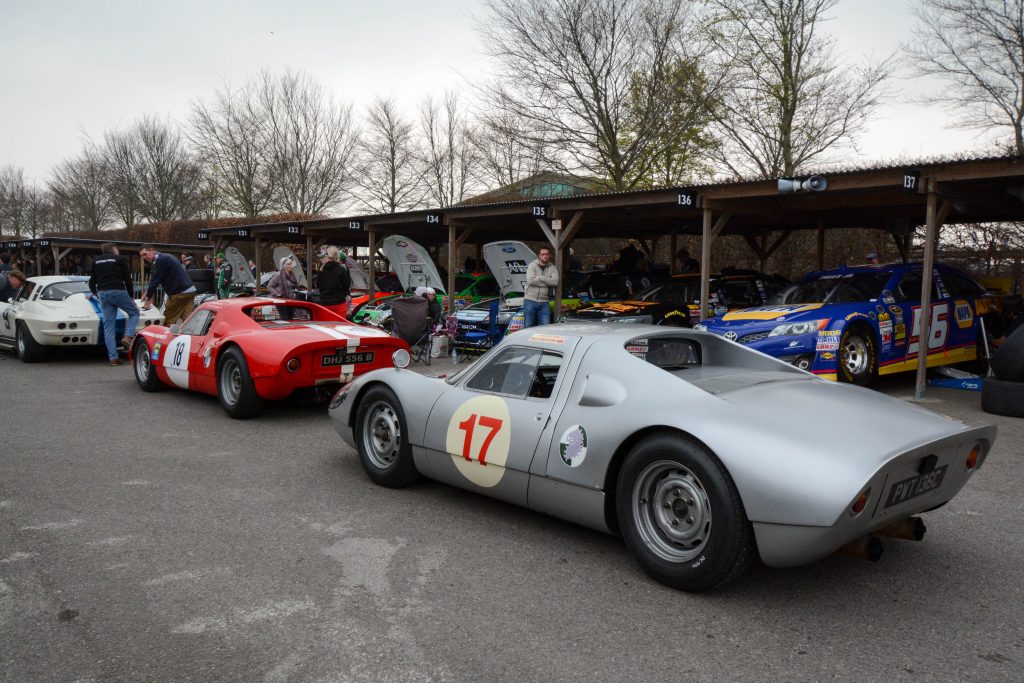
1964 Porsche 904 Carrera GTS (left) and 1965 Porsche 904 Carrera GTS (right) 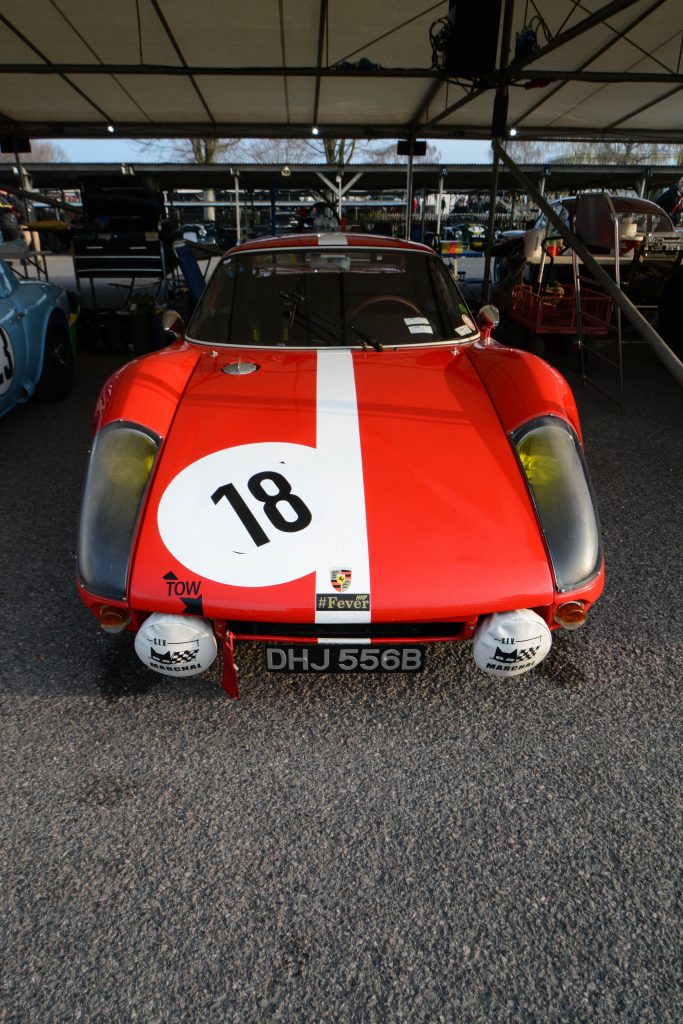
1964 Porsche 904 Carrera GTS 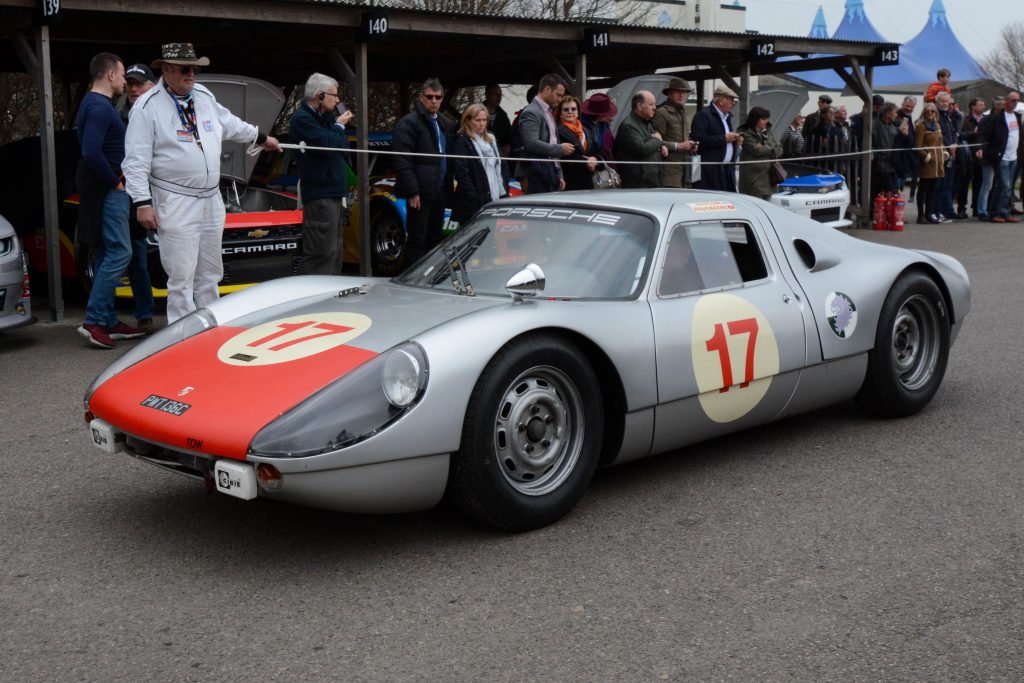
1965 Porsche 904 Carrera GTS 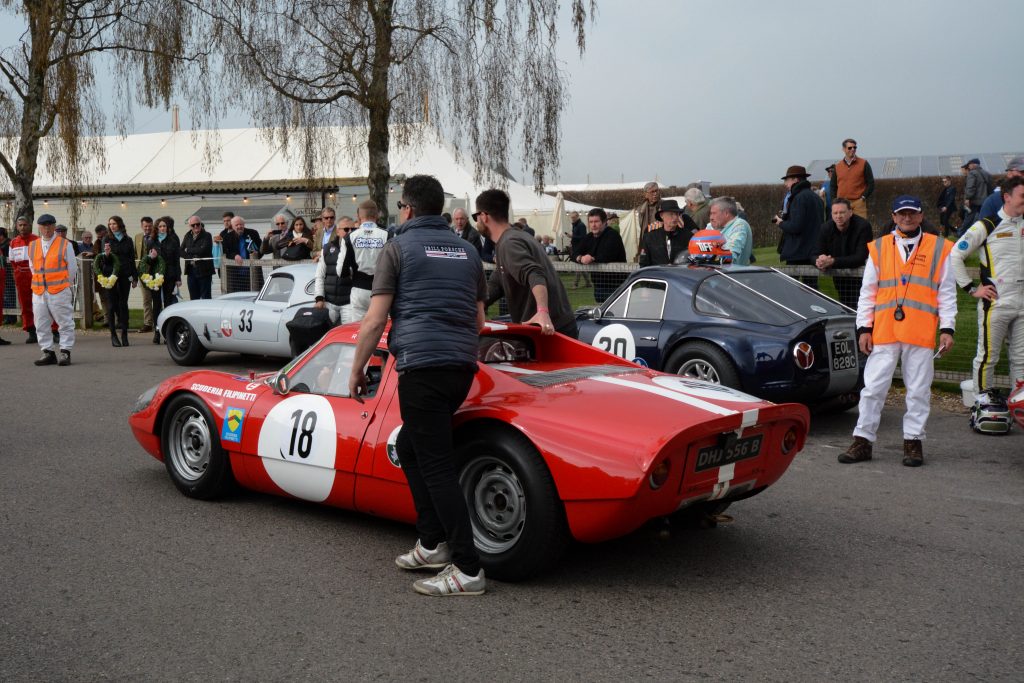
1964 Porsche 904 Carrera GTS 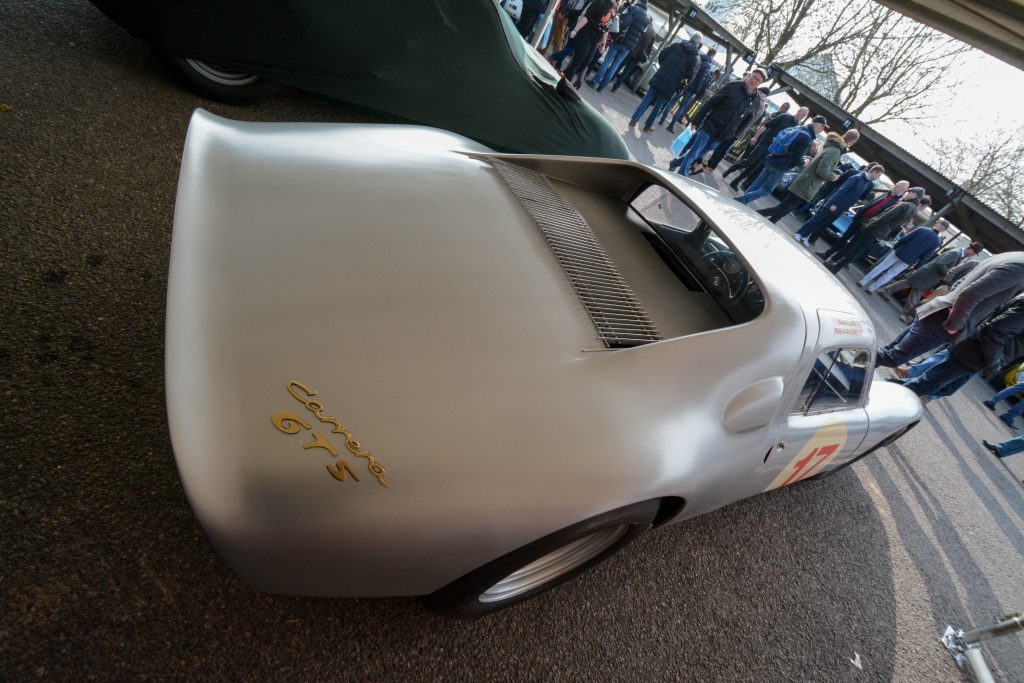
1965 Porsche 904 Carrera GTS 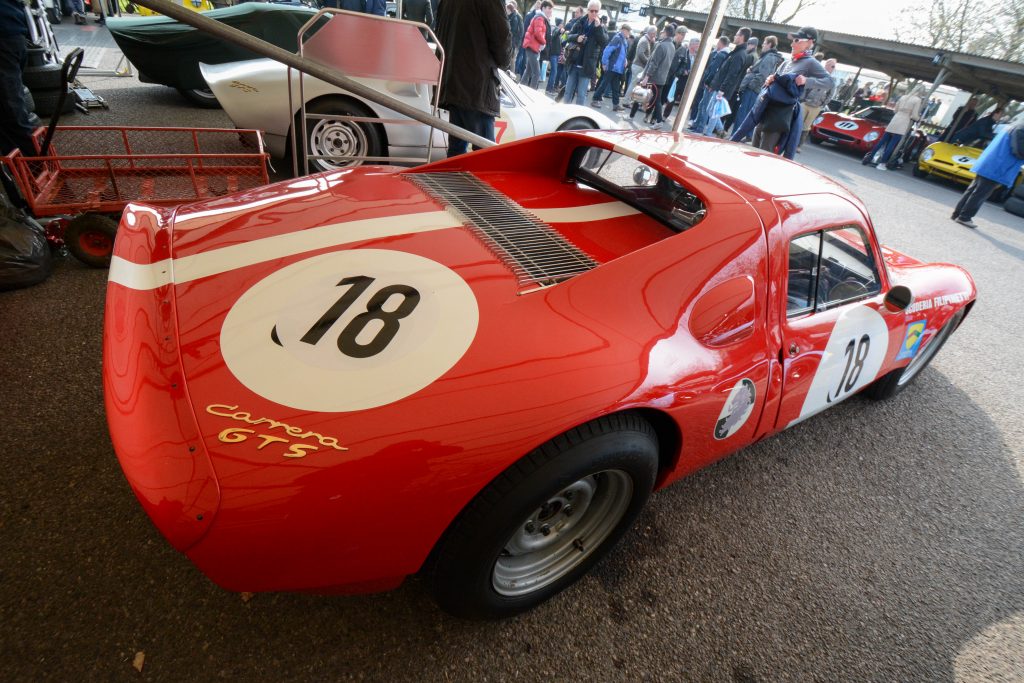
1964 Porsche 904 Carrera GTS 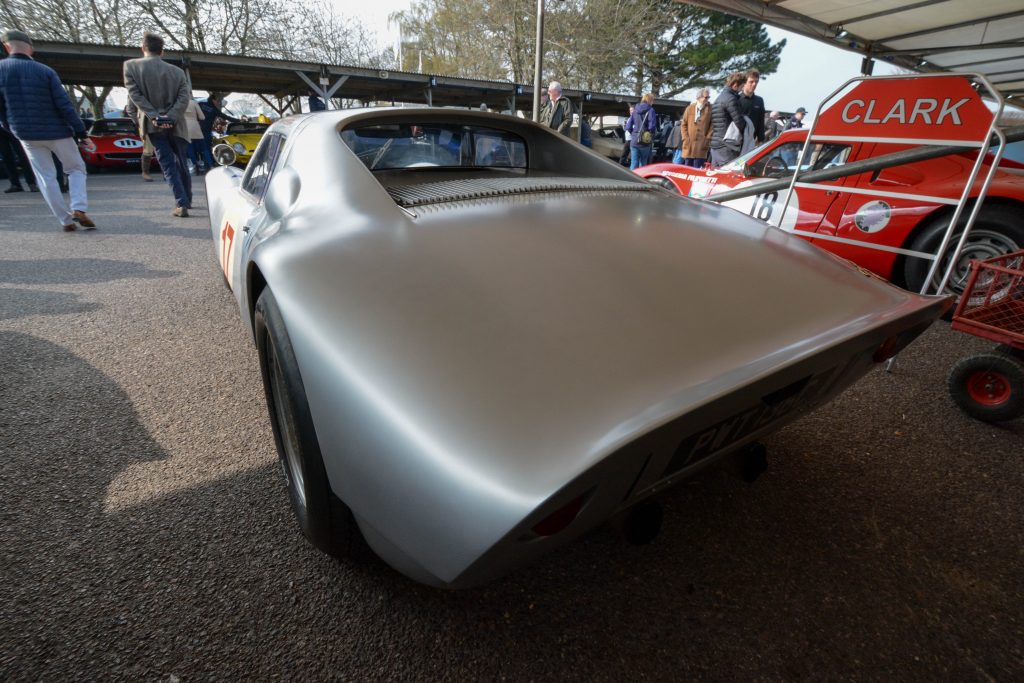
1965 Porsche 904 Carrera GTS
Porsche 906/910
These two models from Porsche date from 1966 and 1967 and as there are so few differences between them – they are best looked together. Historically – they filled the gap between the 904 and the 917 and they clearly demonstrated the continued line of development that Porsche progressed to eventually achieve domination of the sport.
The 906 or Carrera 6 was built in 1966 with fifty cars constructed in order to meet the homologation quota to qualify for the Group 4 Sports Car racing category. It built upon the lessons learned on the 904 but the ladder chassis concept was swapped for an even lighter tubular space frame with unstressed lightweight fibreglass bodywork.
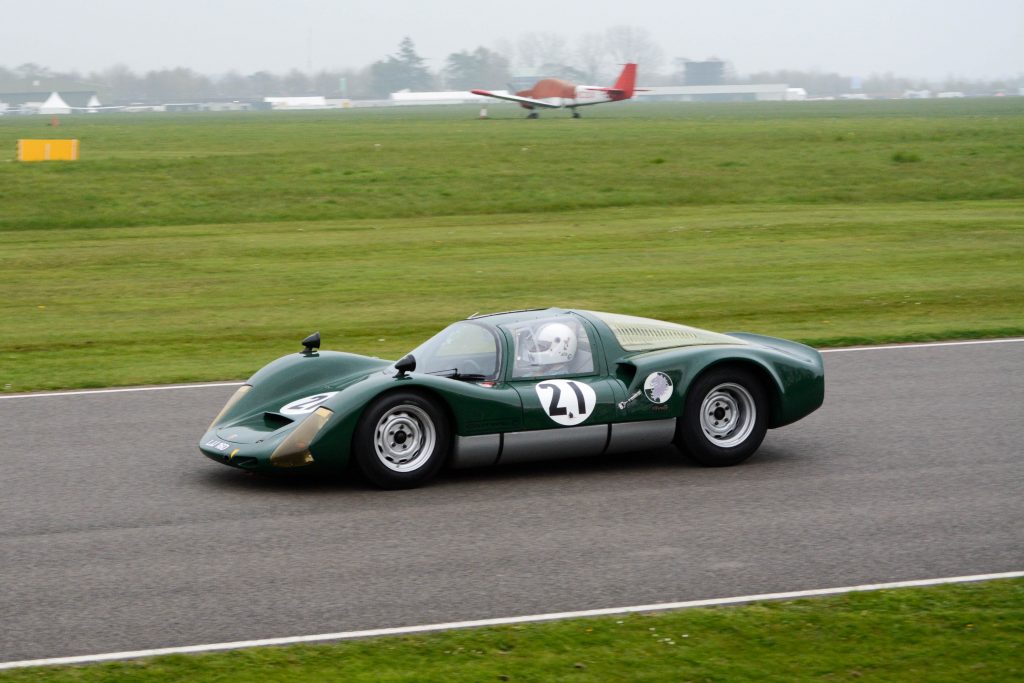
The 906 performed extremely well in classic races of the period achieving a number of class wins and even achieving 4th, 5th, 6th and 7th positions in the 1966 running of the Le Mans 24-Hour Race, beaten only by the all conquering and much more powerful Ford GT40’s.
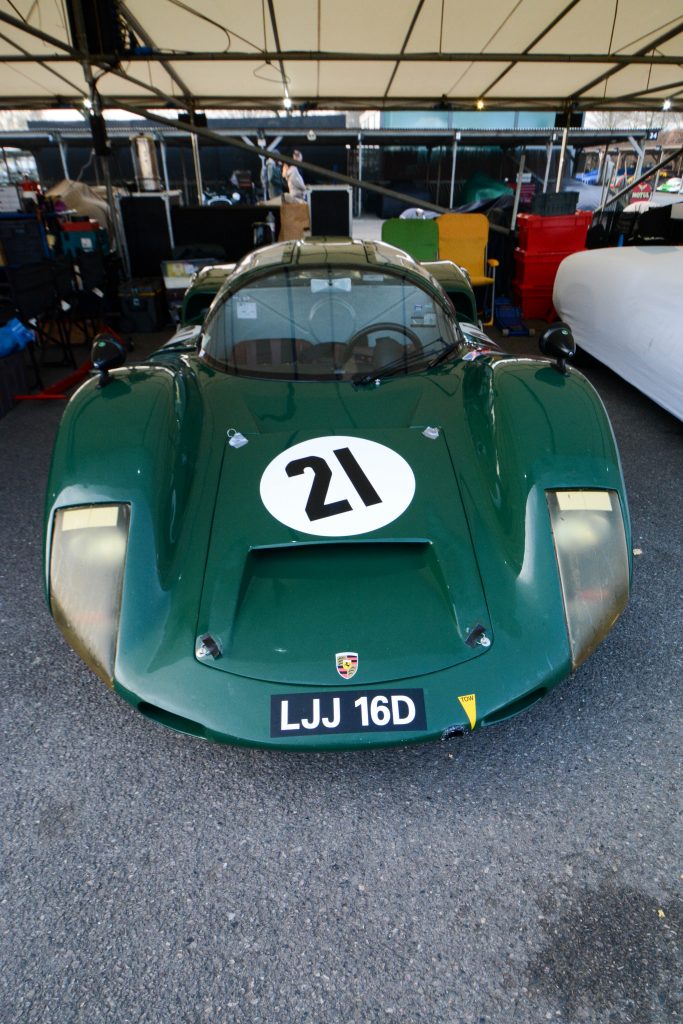
Thanks to its lightweight construction and powered by its 901/20 2.0 Litre 220bhp flat-six engine the car weighed in at a paltry 580kg giving it a phenomenally good power to weight ratio.
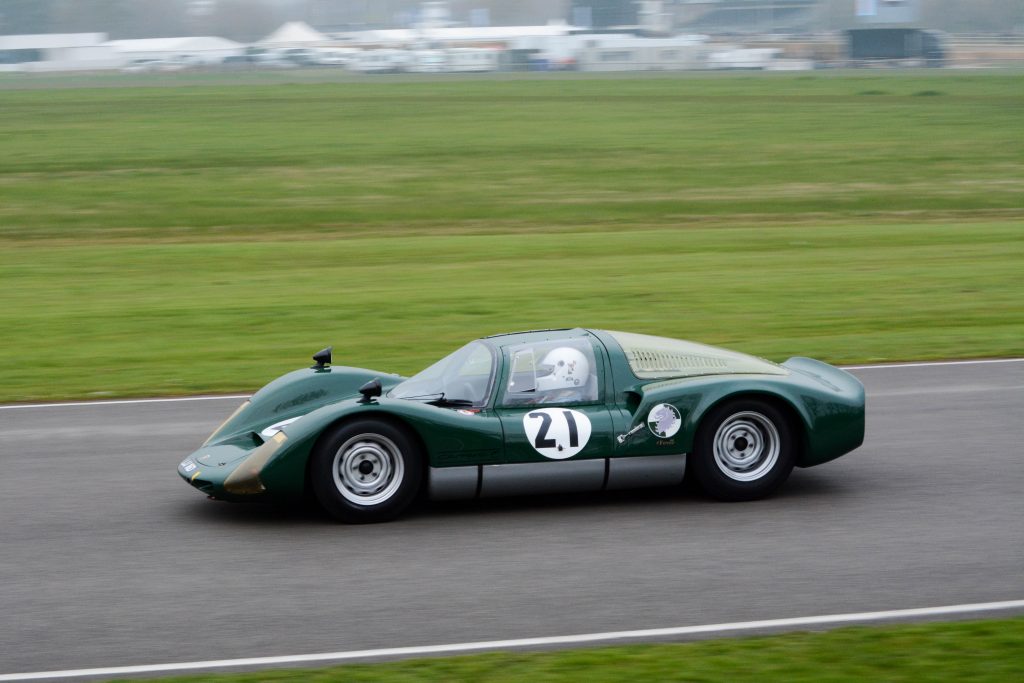
The 910 was really a minor variation on the 906 theme with smaller wheels, slightly shortened overall length and a further reduction in weight.
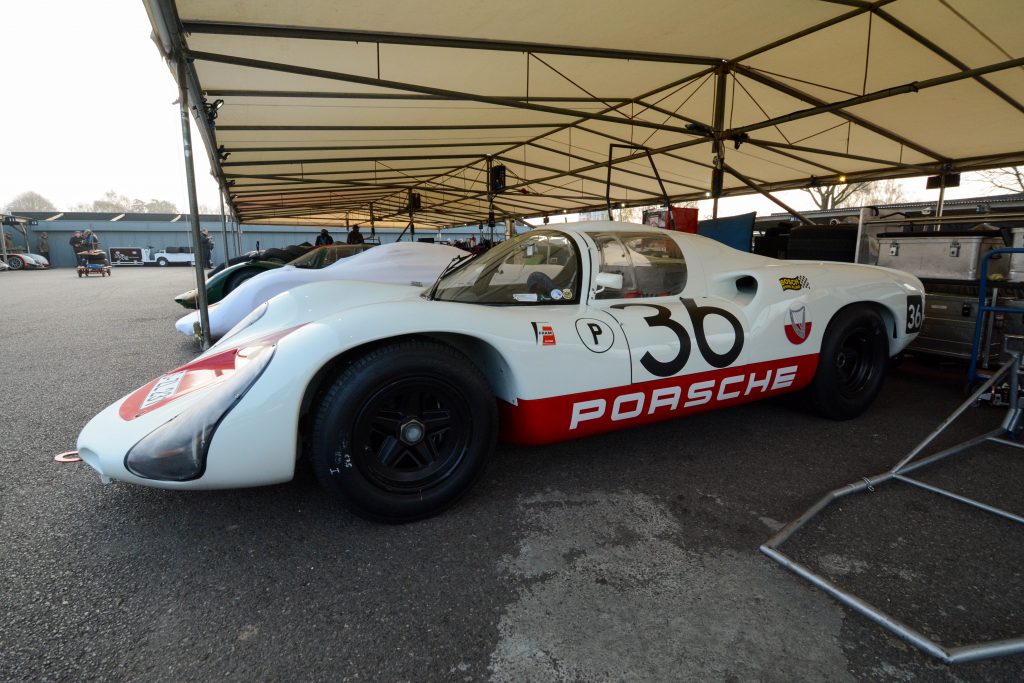
Similar to the earlier 904 – both the 906 and 910 occasionally utilised Flat-eight engines especially for use in European Hill Climb events. These cars must have been amazing.
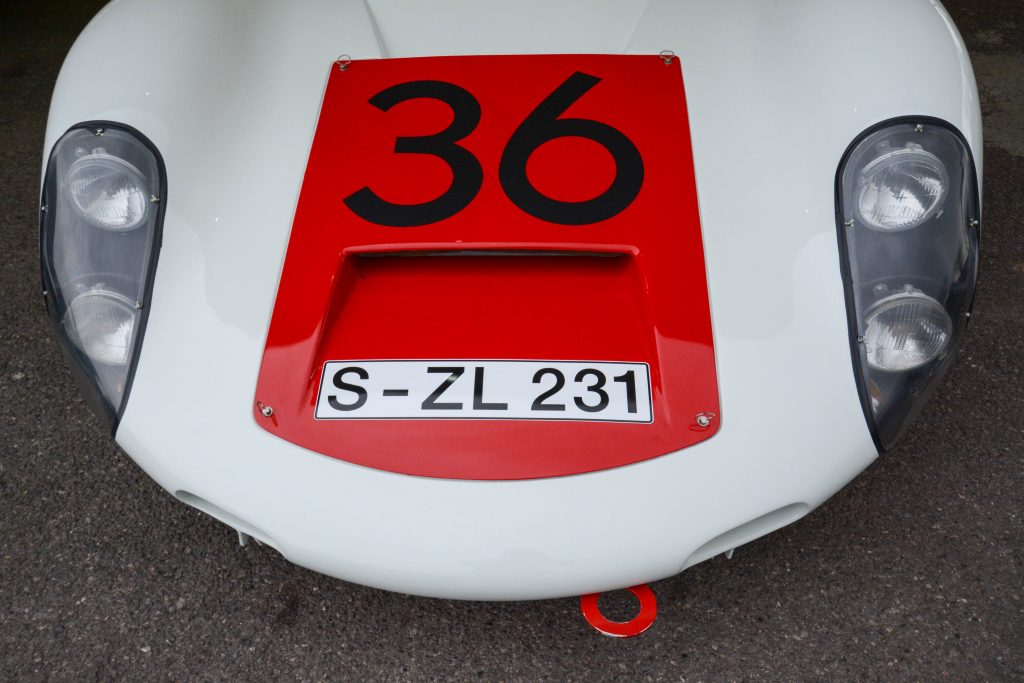
1967 Porsche 910 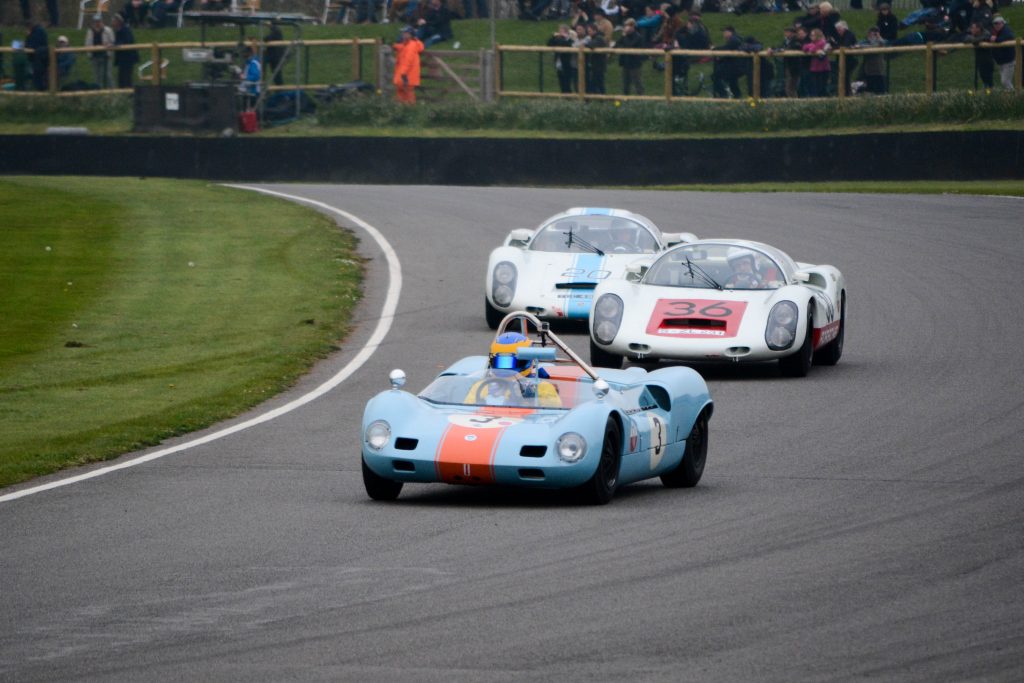
1963 Elva-BMW Mk7S followed by two Porsche 910’s 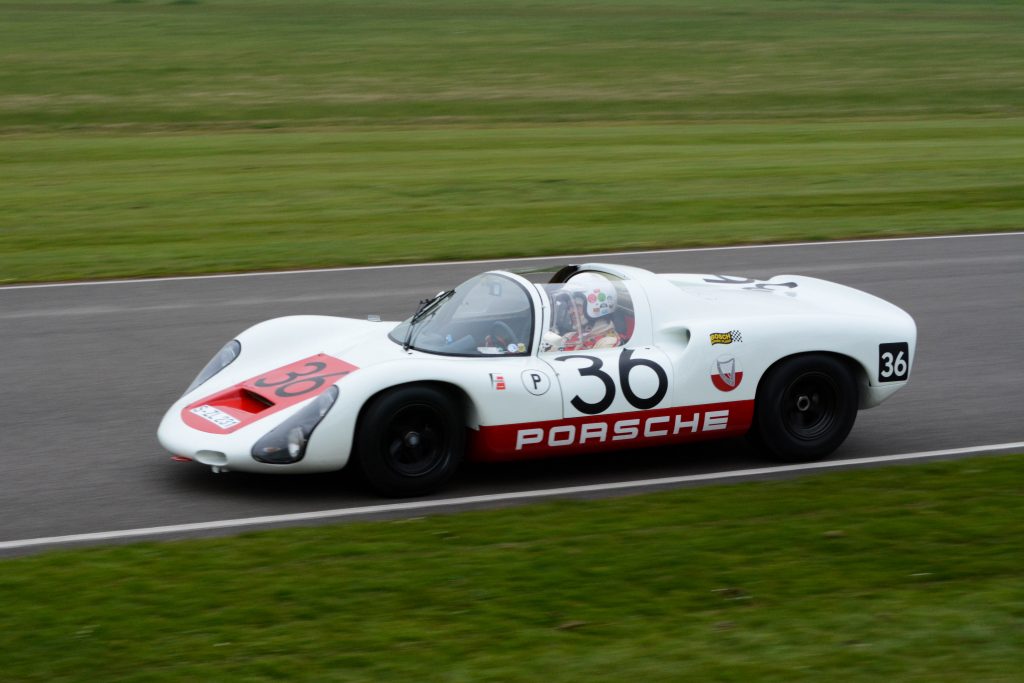
1967 Porsche 910 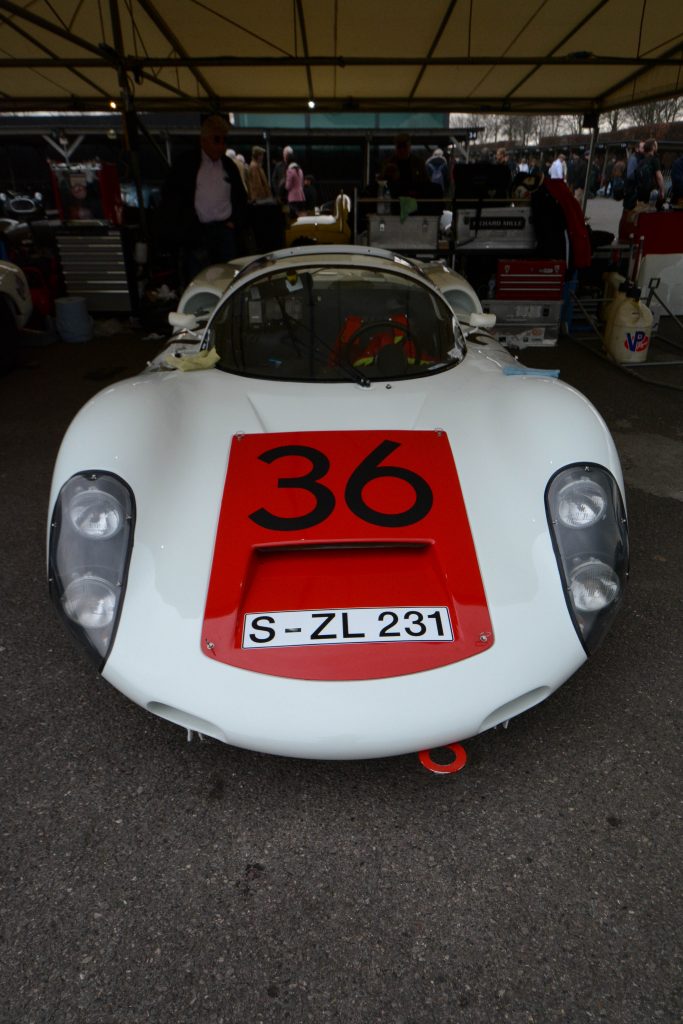
1967 Porsche 910 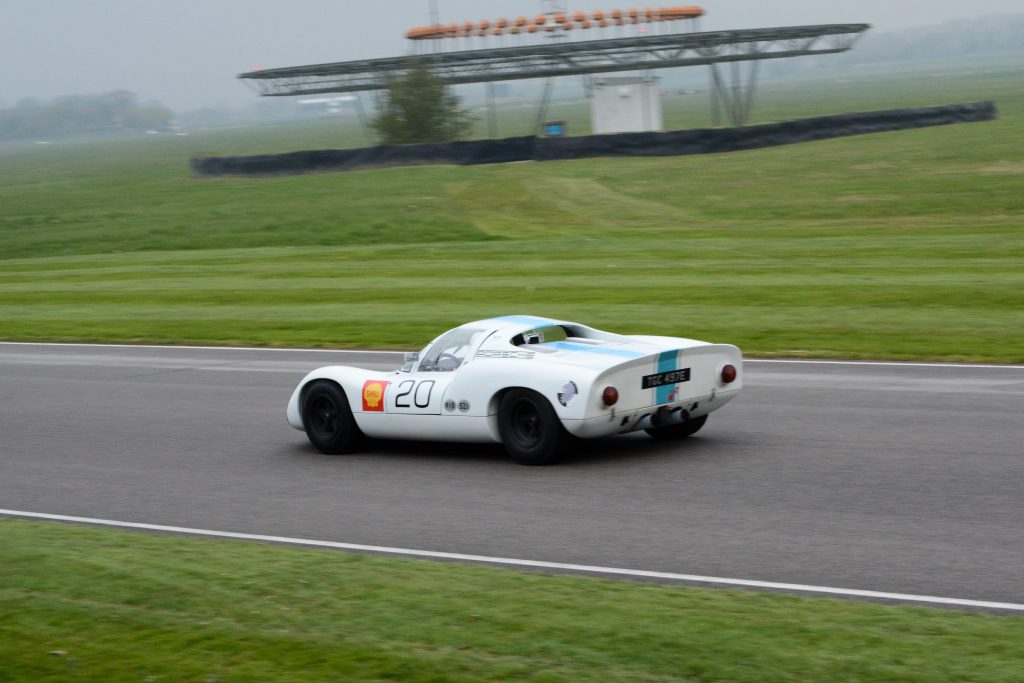
1968 Porsche 910 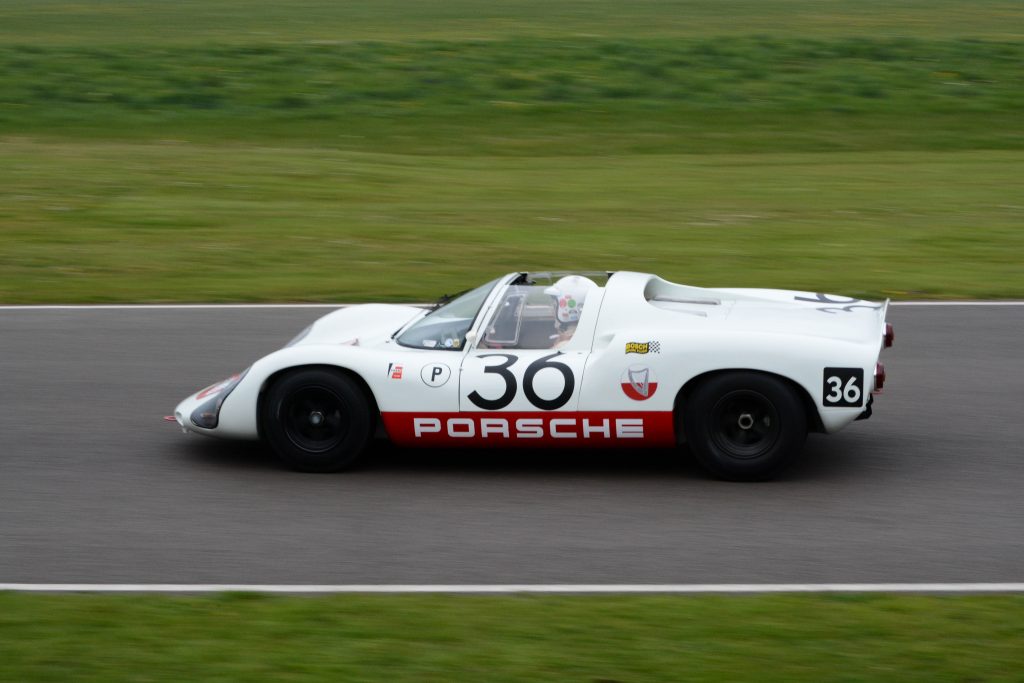
1967 Porsche 910 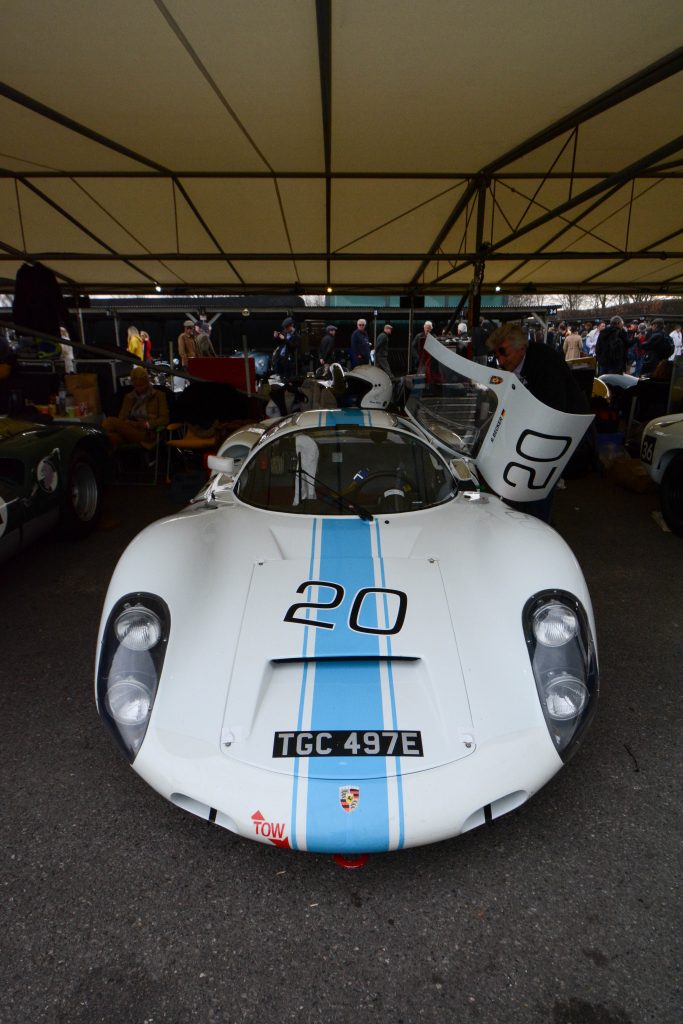
1968 Porsche 910 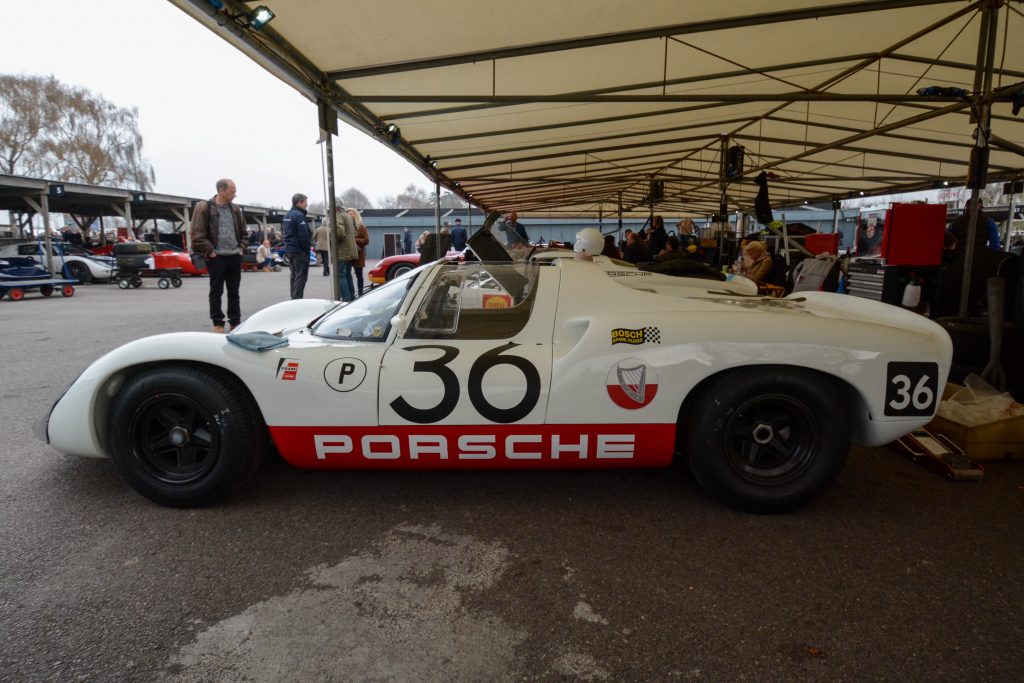
1967 Porsche 910 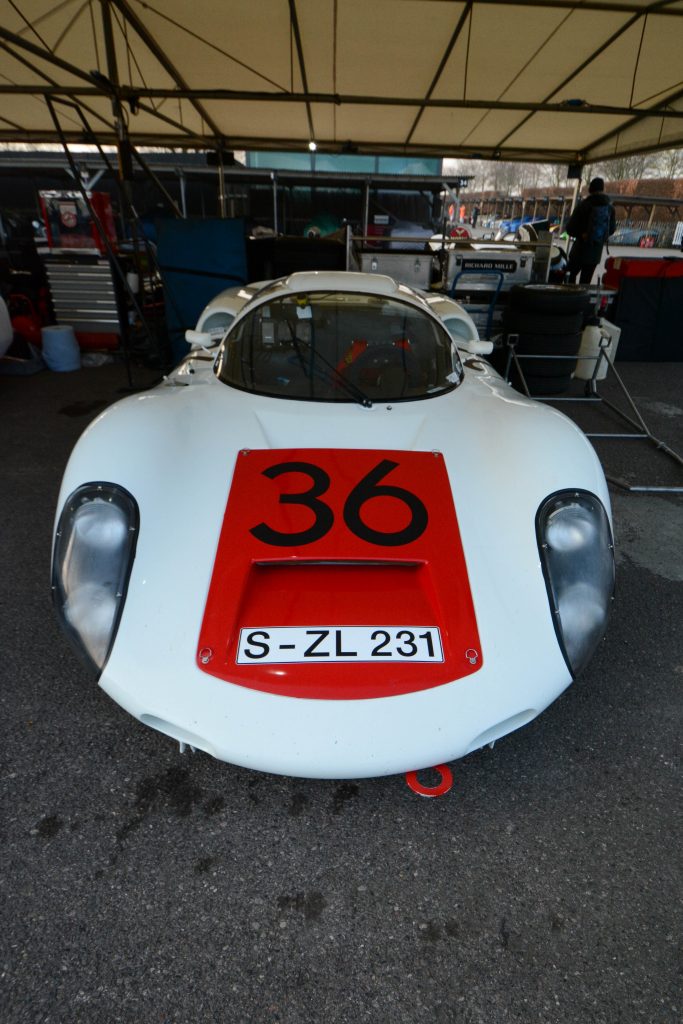
1967 Porsche 910 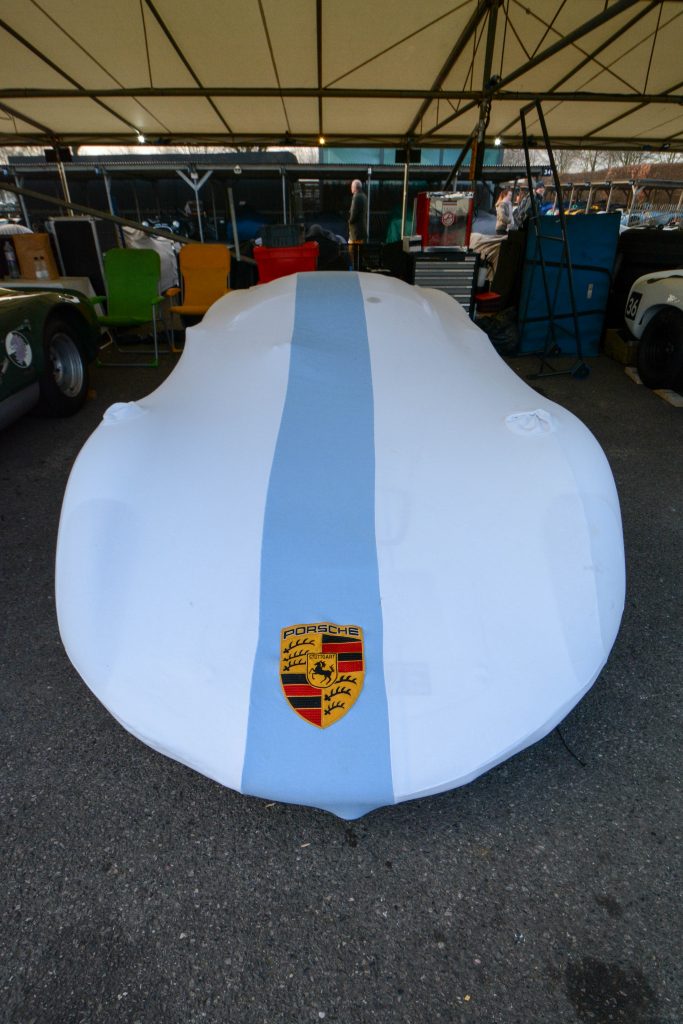
1968 Porsche 910
Porsche 917
To celebrate the 50th birthday of the fabulous Porsche 917, the Porsche Museum had brought along no less than four examples from their collection ranging from a sinuously elegant white Langheck (long-tail), a classically Gulf liveried Kurzheck (short-tail) and two ferocious fire breathing twin-turbo 917/30 cars.
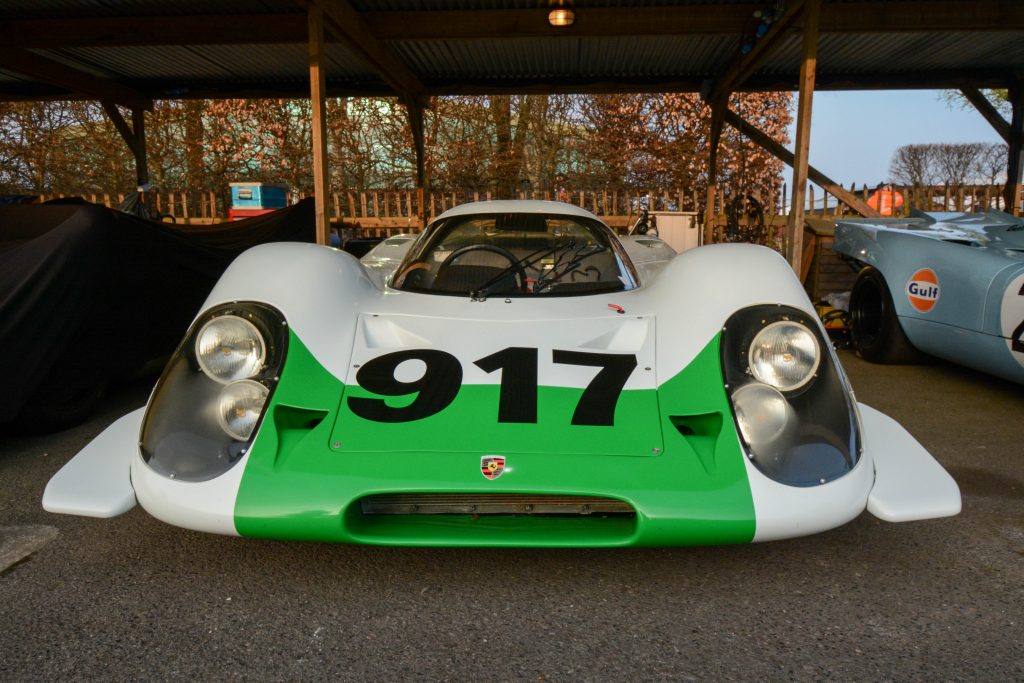
These cars were brilliantly conceived and incredibly quickly constructed to exploit a rule change impacting top-flight sports cars used in endurance racing. Not only did Porsche recognise and build the right car to exploit the rule change – they rapidly churned the car out in sufficient numbers to gain the prerequisite homologation.
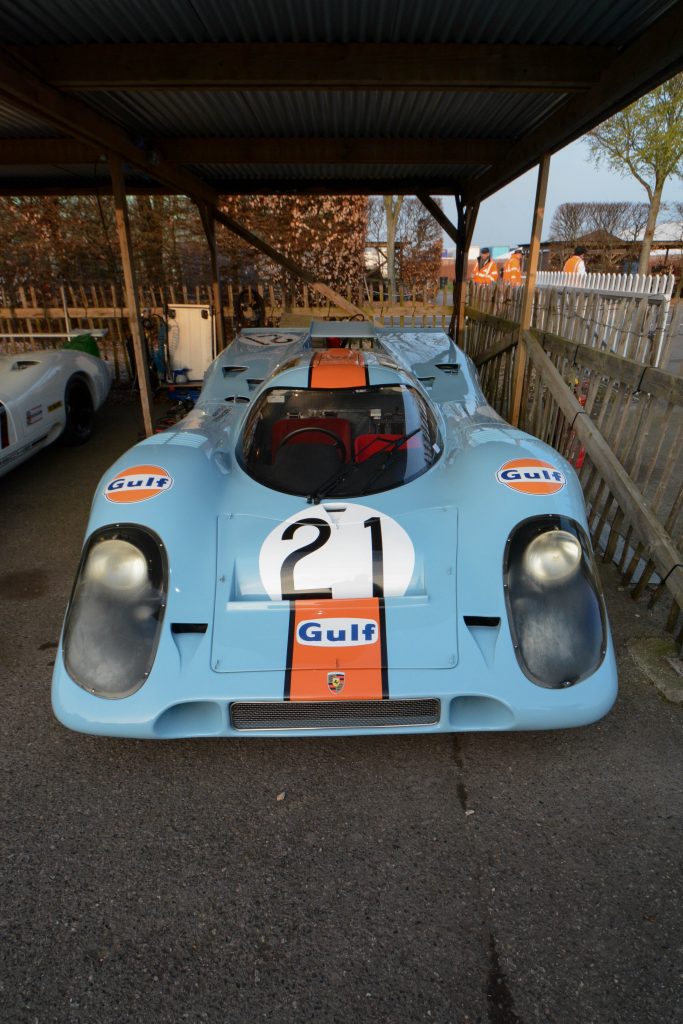
Through their bold step of building twenty five 917’s before they had even turned a wheel in anger, Porsche knew that there were plenty of privateer teams who would buy the surplus cars and help develop them to the benefit of Porsche as well as the individual teams. This resulted in Porsche finally securing an outright win at Le Mans in 1970 with the Porsche Salzburg 917 Kurzheck driven by Hans Hermann and Richard Attwood.
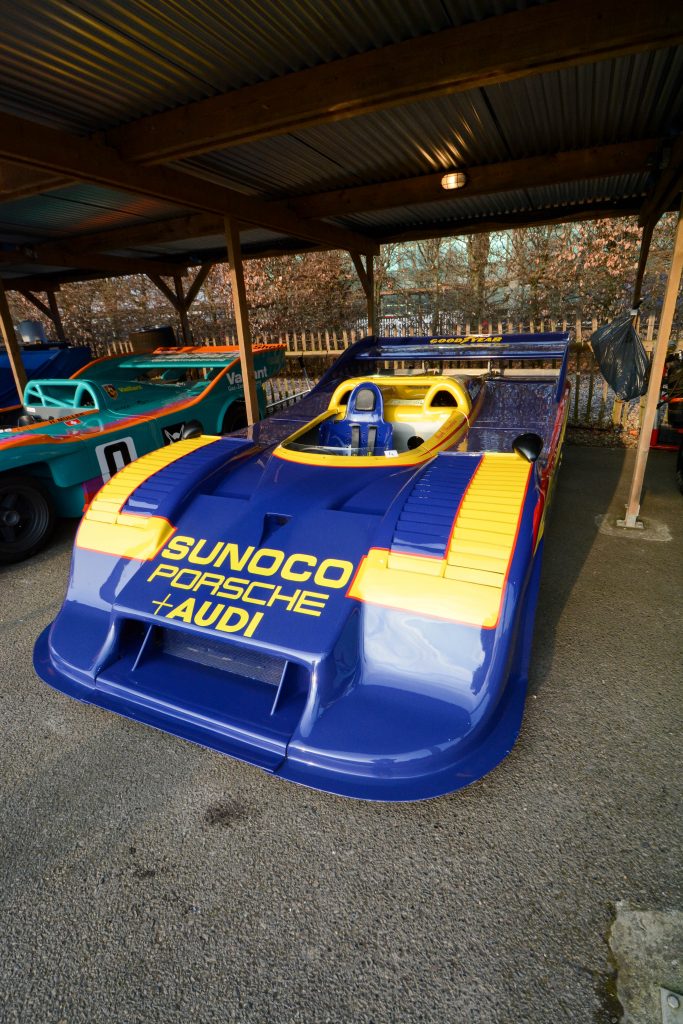
Coming back to the event – at one point in the morning I stood mesmerised at the back of the sheds housing the 917s, watching in awe as the Porsche Museum mechanics methodically tried to coax the flat-twelve engines of the two mighty 917/30 cars into life. This was no mean feat after an evening of chilly slumber (a chilly night’s slumber for the cars in the sheds I mean …. not the mechanics).

I’d previously read long and complicated instructions on how to start a 917 which involves a lengthy sequence of turning various switches on and off, cranking the engine over without fuel pumps on to build-up oil pressure, turning the fuel pumps back on to prime the fuel system etc. etc.
As I looked on – I recognised some elements of the starting sequence but what I’d not read about or seen before was hot air blowers (of the paint stripper variety) being used to warm the inside and outside of the manifolds. Unfortunately – even this still wasn’t enough to coax the engines of the two 917/30 cars immediately into life so the mechanics had to laboriously remove all 12 plugs from each engine to clean them of unburnt fuel/carbon etc. and re-fit them into the cylinder heads to try again.
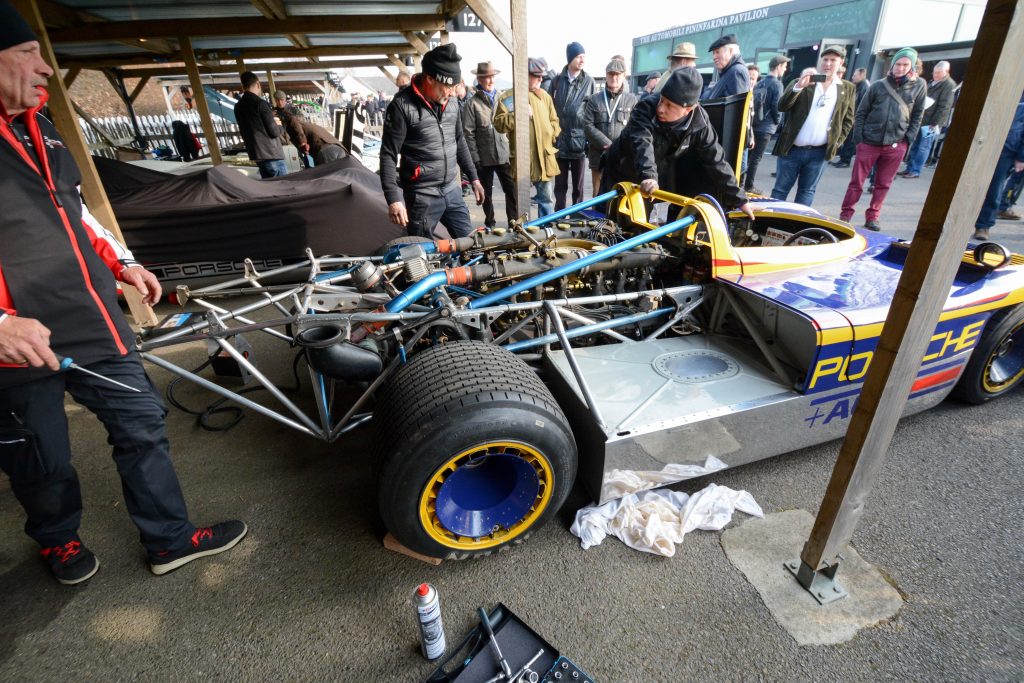
Plug removal is not an easy task on a 917 due to the close proximity of each bank of cylinder heads to the chassis tubes (which are filled with pressurised gas to make it easier to detect stress cracks or damage). The mechanics working on each side of the engine had to use an eclectic mix of articulated ratchet extensions to fiddle between chassis tubes to remove, clean and replace each and every plug.
Anyhoo – a point was eventually reached when it was all systems go and starter buttons could be depressed to finally fire-up all 12 cylinders of these glorious 917/30 engines and finally everyone within earshot felt like they’d died and gone to Porsche heaven!
One can forgive a degree of cold-starting truculence when, once fired-up and warmed through, these engines deliver a reliable 1,000bhp for racing and (with a tweak of turbo boost) 1,500bhp to guarantee pole-position in qually!
See more about the 917 here:- A-Z of Car Stuff: P is for Porsche 917
TVR Griffith
The original TVR Griffith is a really chunky and chuckable little car. It’s diminutive size conceals the fact that the same 4.7 Litre Ford V8 that powered the contemporary AC Cobra is lurking beneath the forward folding bonnet.
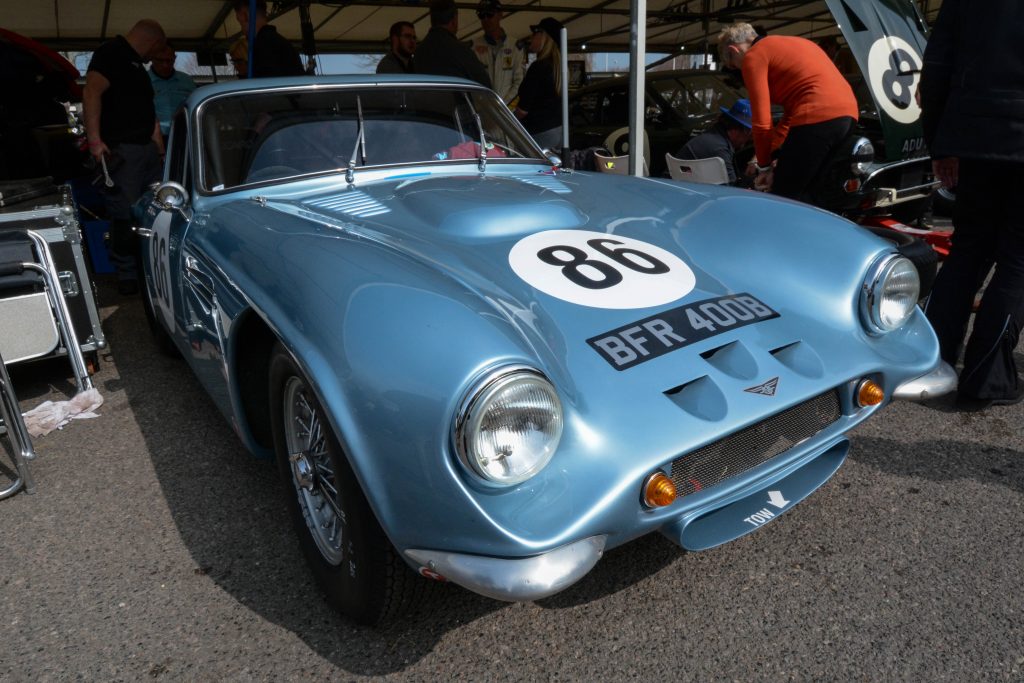
The flared arches to accommodate wide wheels and tyres give the game away to a degree as smaller MGB, Ford or A-Series engines that were also used by TVR would never require such a large amounts of rubber to transmit power to the road or to scrabble for grip on the bendy bits.
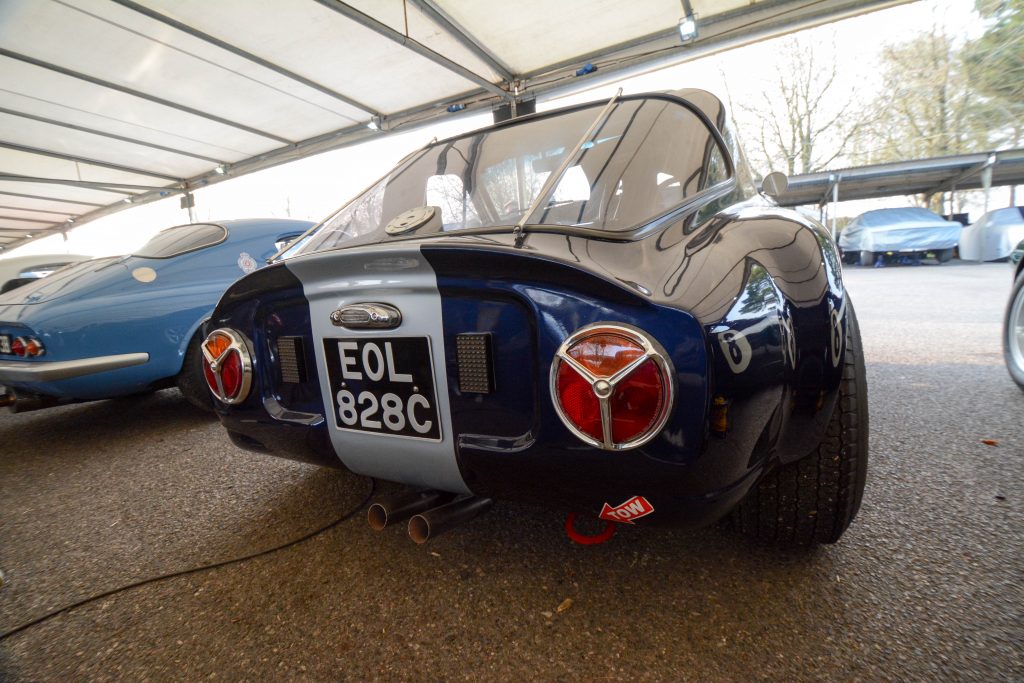
The Number 86 Griffith 400 (400 signifying 400bhp) was absolutely flying in Sunday’s Graham Hill Trophy race until its exhaust tail pipe lost its attachment the rear of the chassis and the driver (eventually) followed frantic race official signals to return to the pits for repairs. Despite his best efforts however (once back on track) the driver was unable to fight his way back to the front before the chequered flag came down.
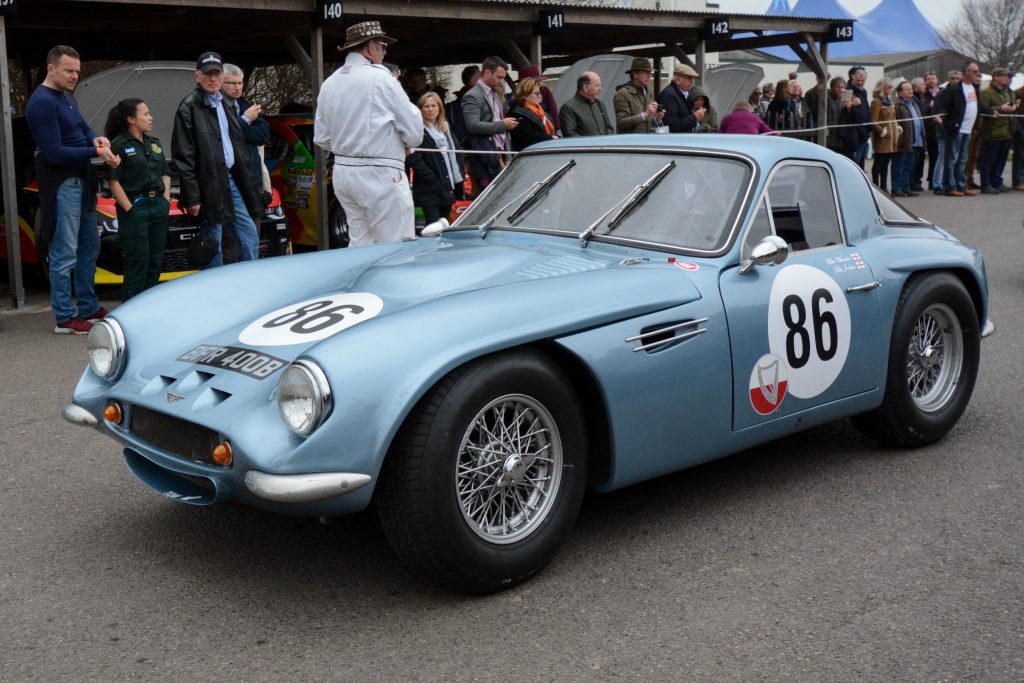
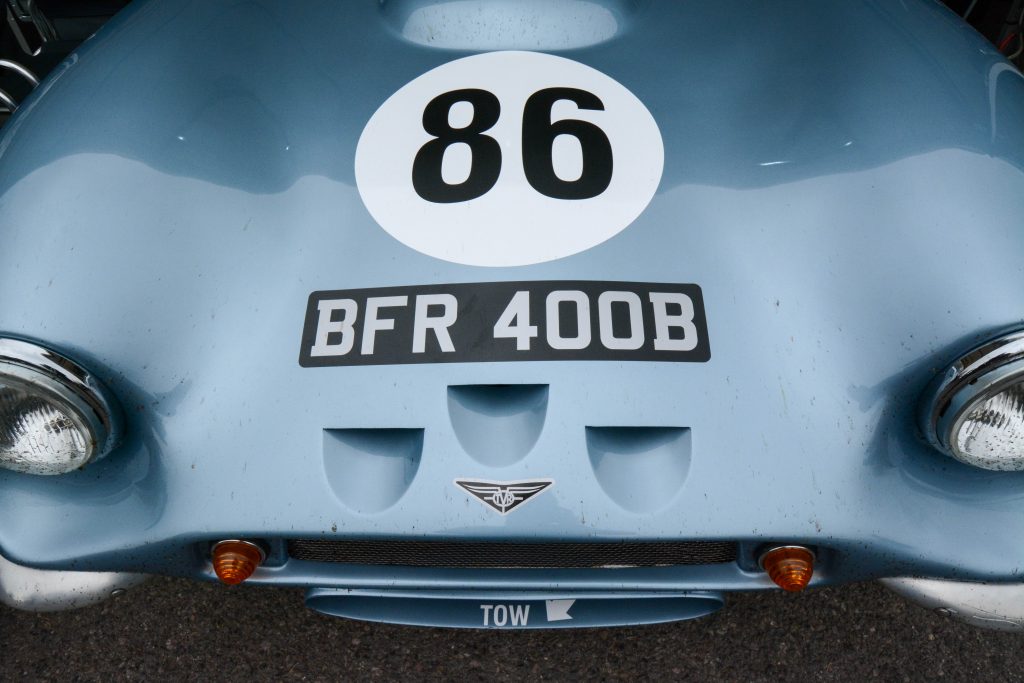
All was not lost however as the other Griffith with Tiff Needell at the helm, crossed the line in third to maintain TVR honour. Hurrah!
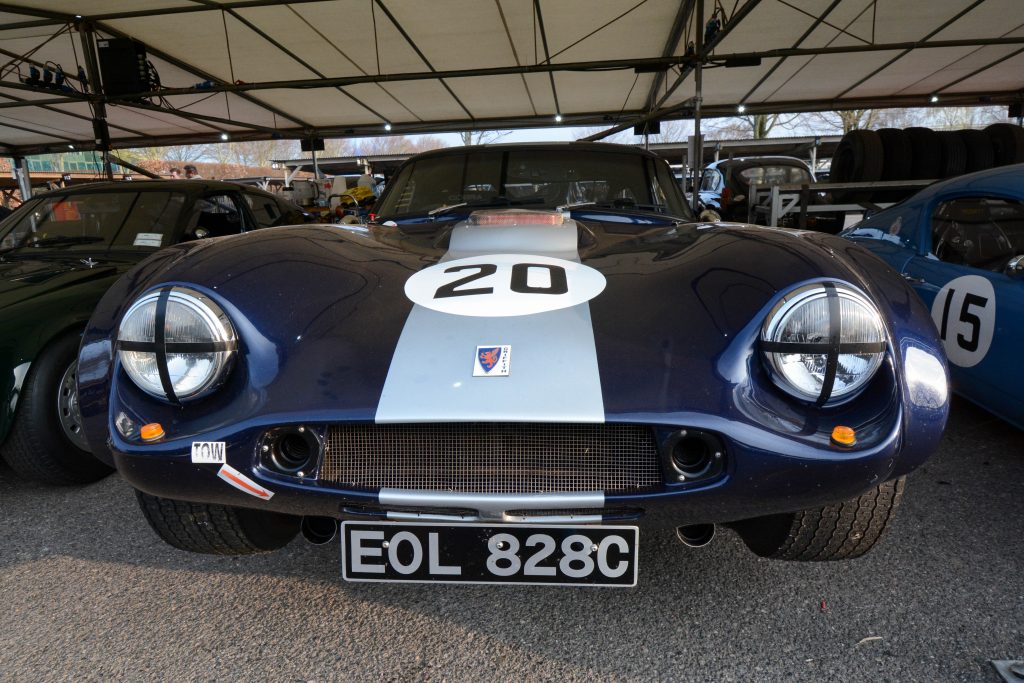
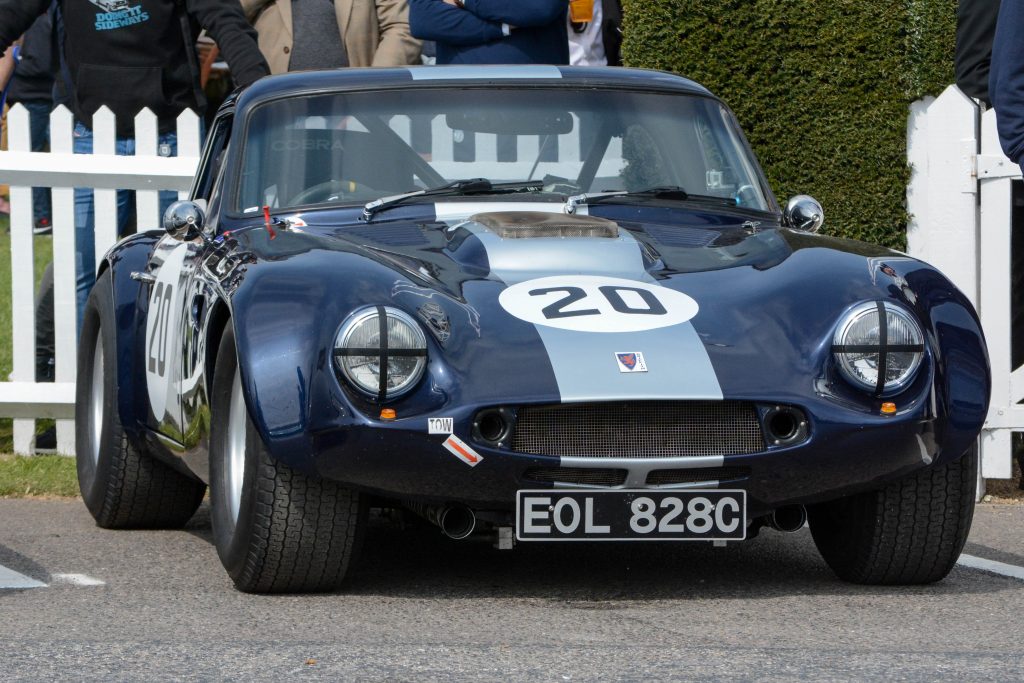
Best Of The Rest
There were many other notable marques and models on display the MM. Here are just a few:-
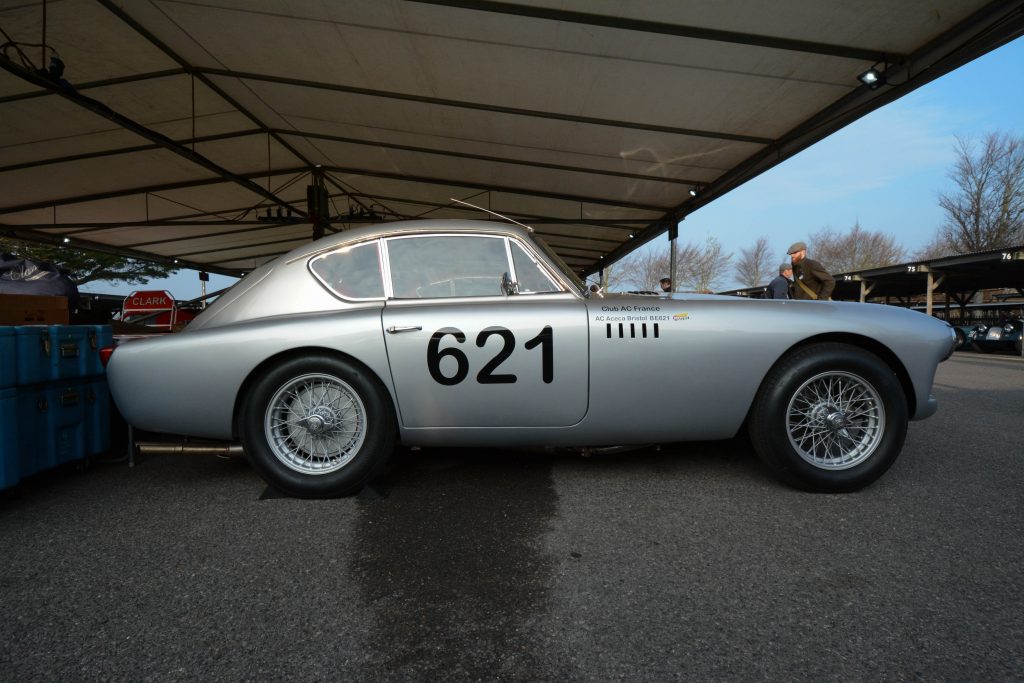
1957 AC Aceca 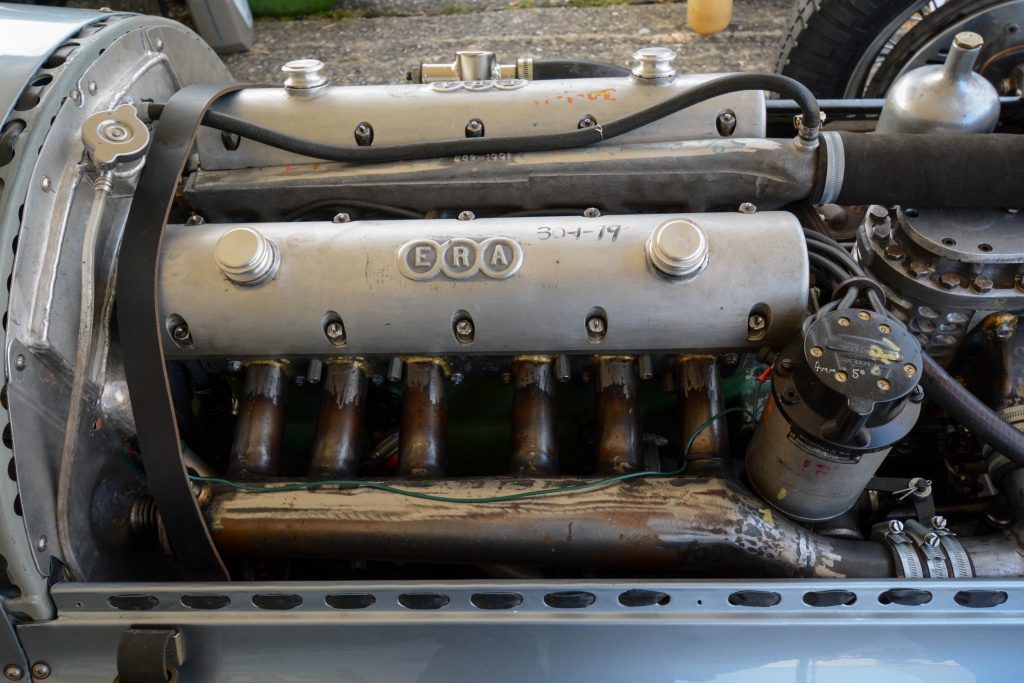
ERA engine 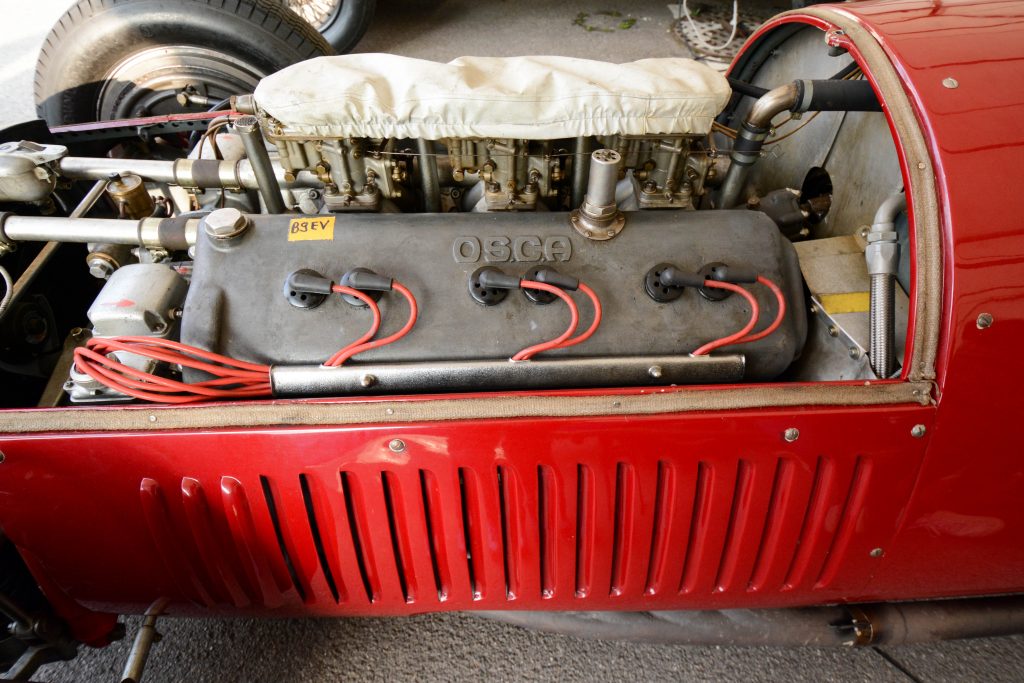
O.S.C.A. engine 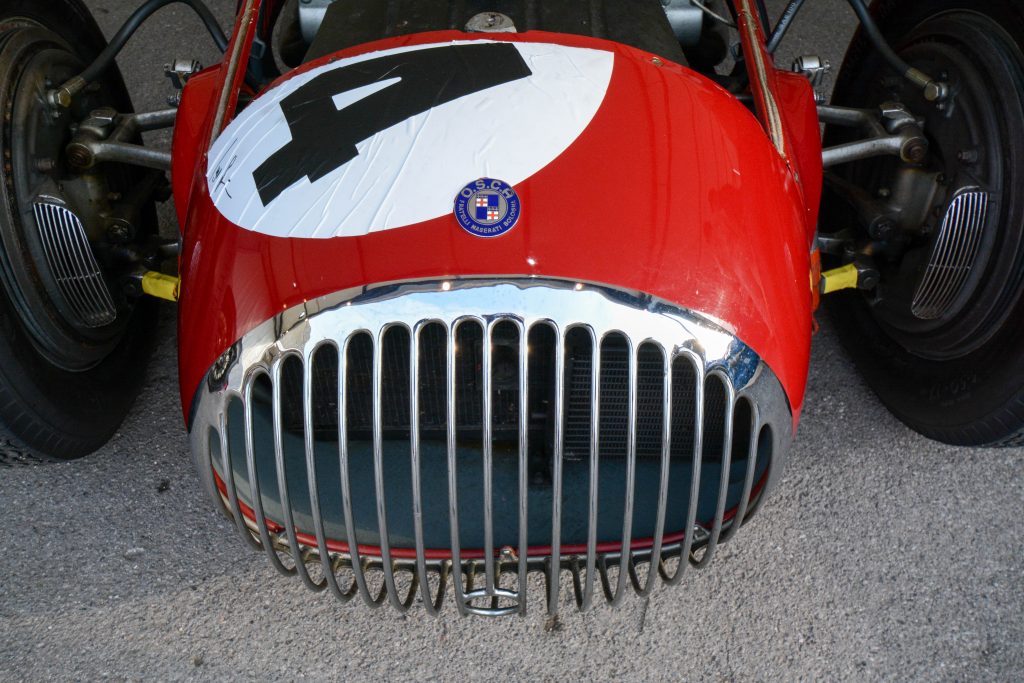
1951 O.S.C.A. Tipo G 4500 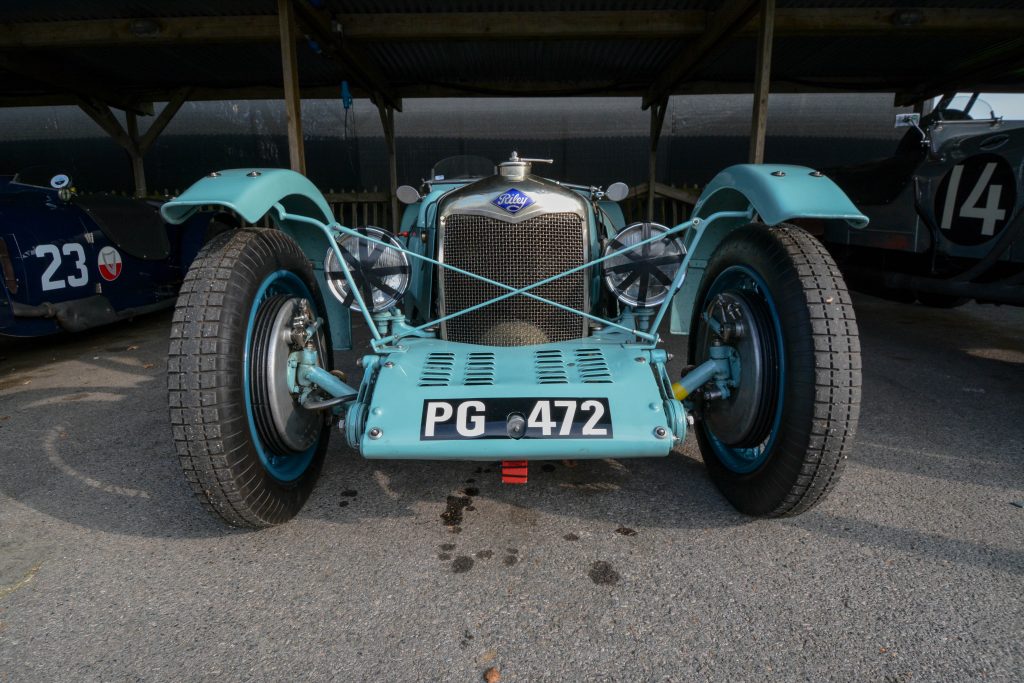
1929 RileyBrooklands 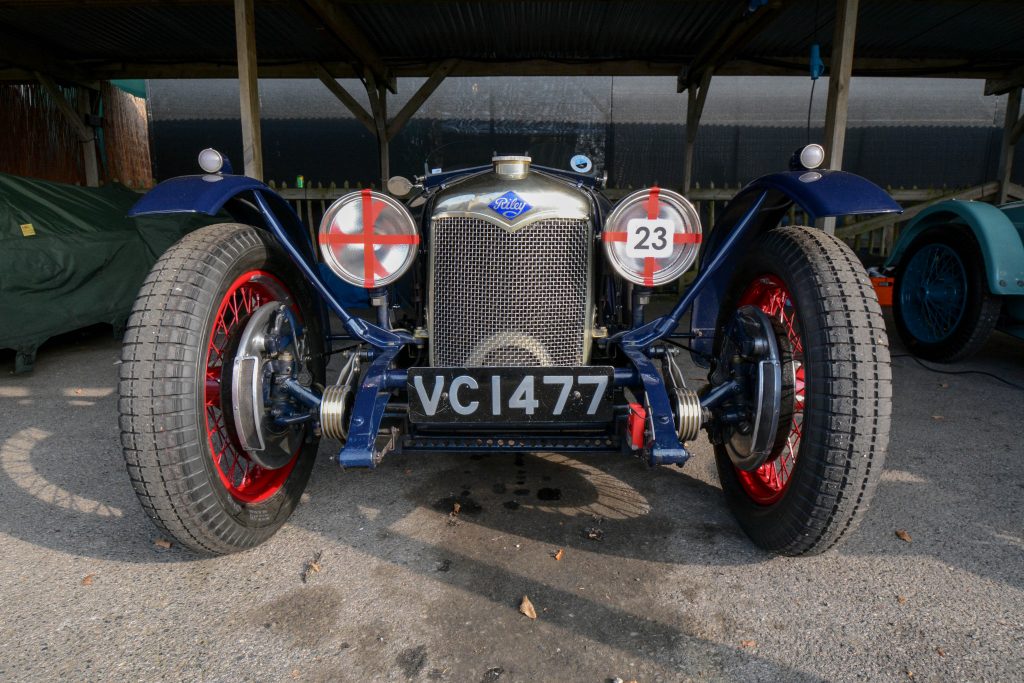
1929 Riley Brooklands 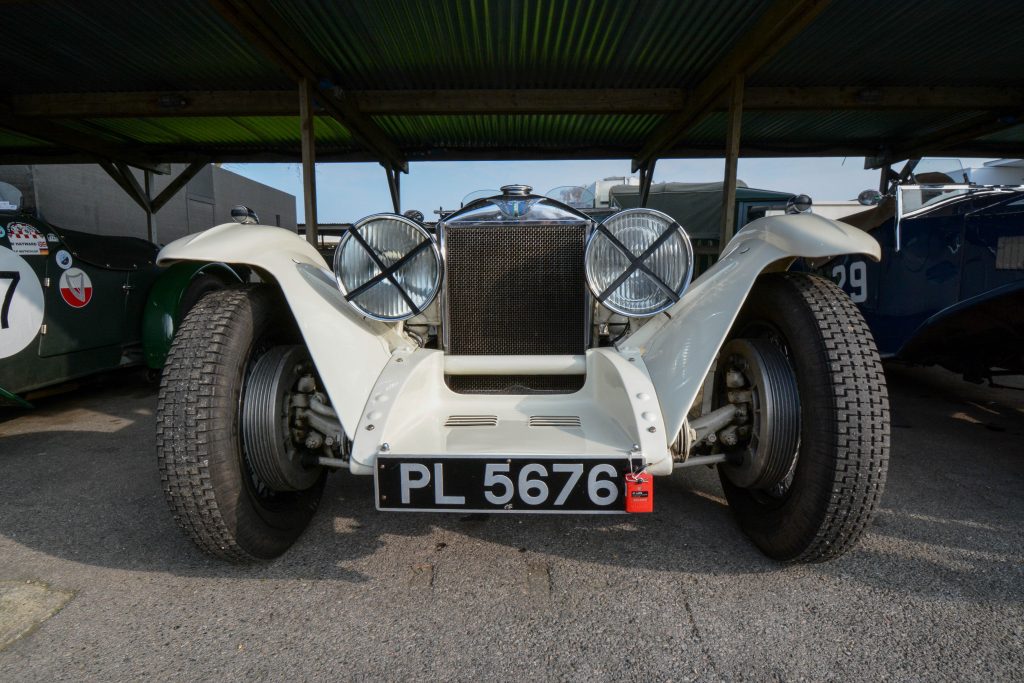
1930 Invicta Low Chassis 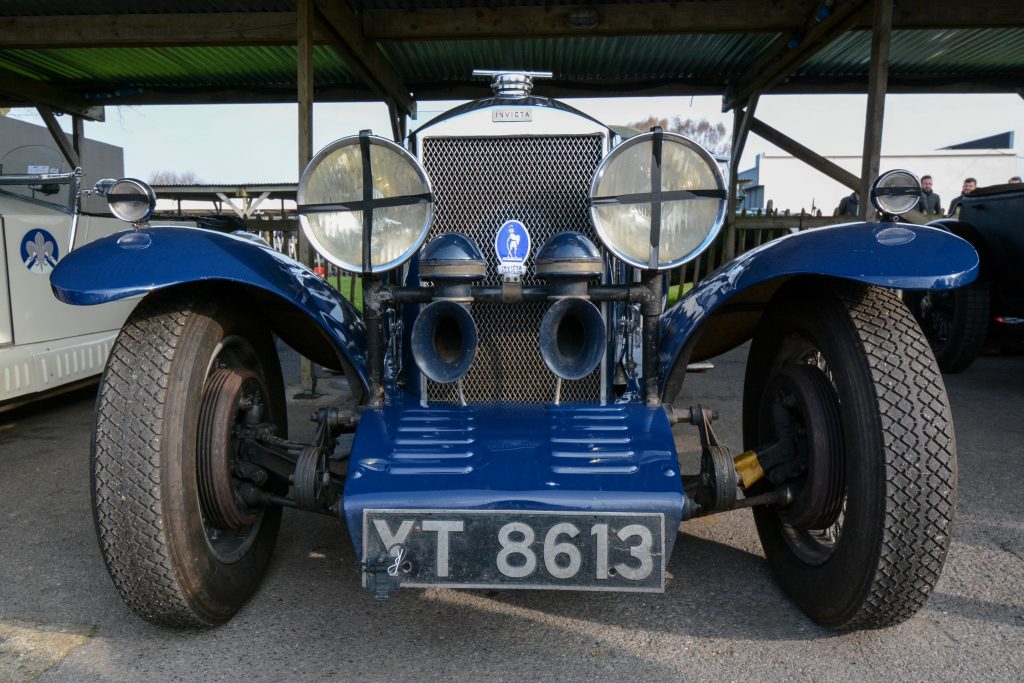
Invicta 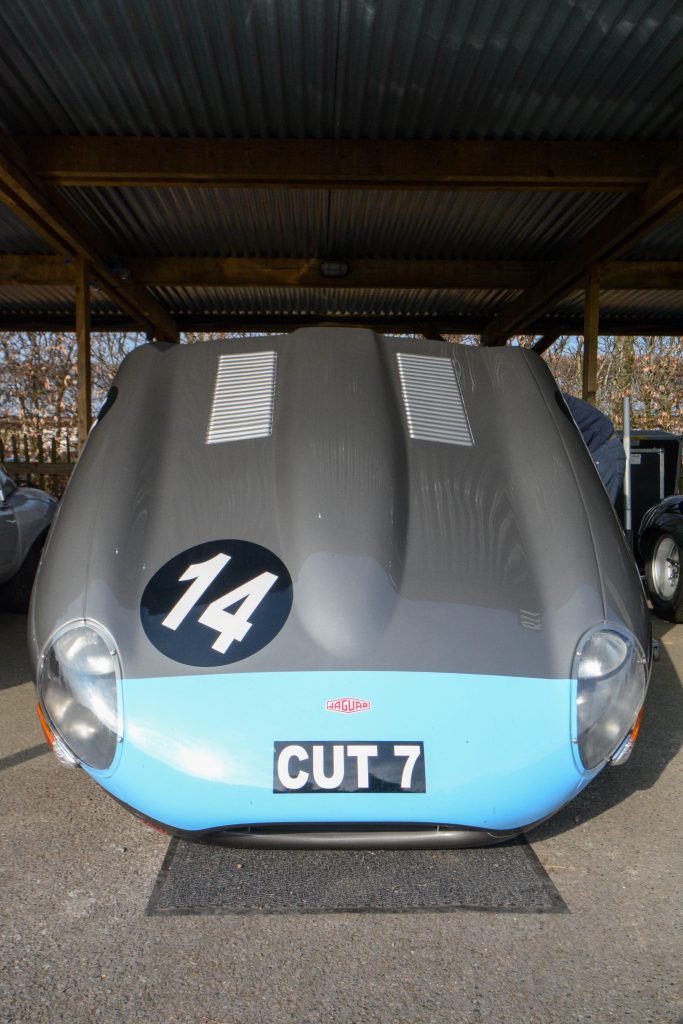
1961 Jaguar E-Type 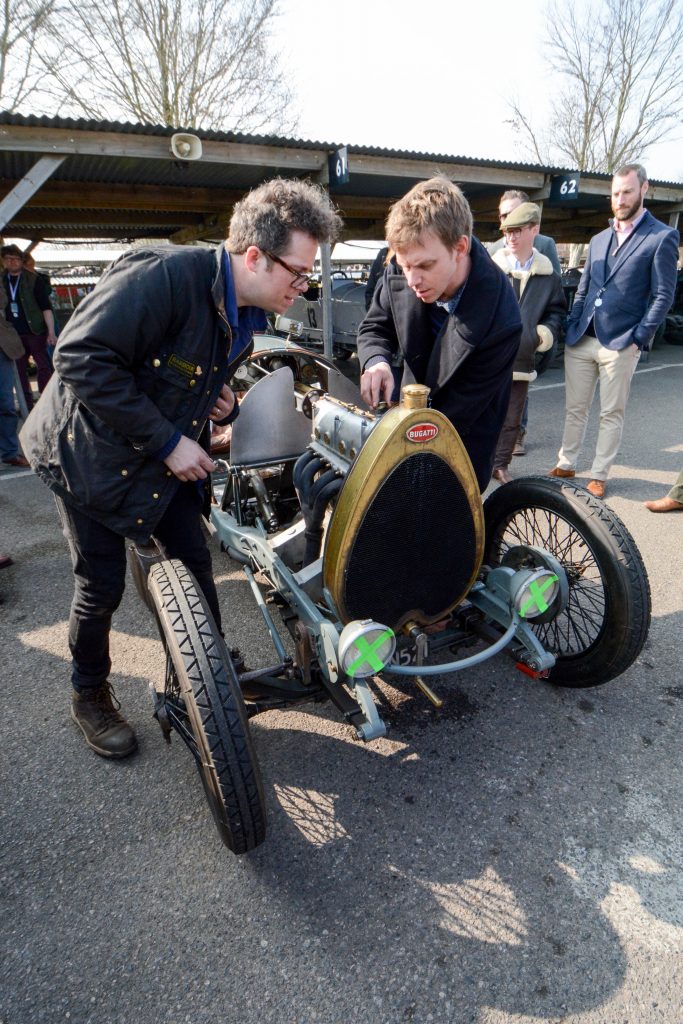
Bugatti 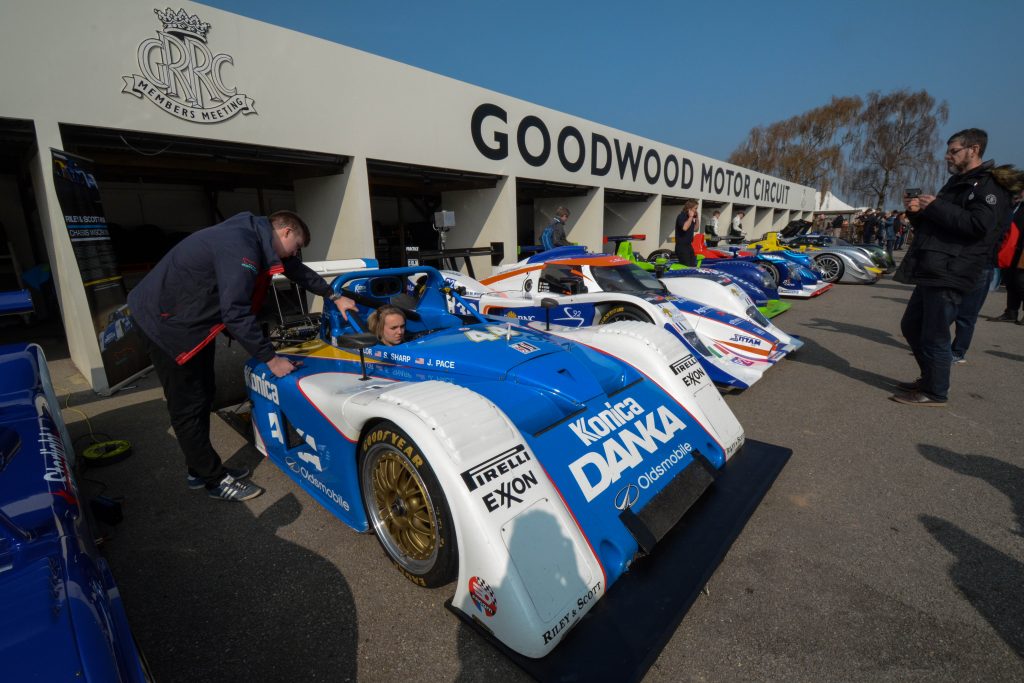
Le Mans Prototypes 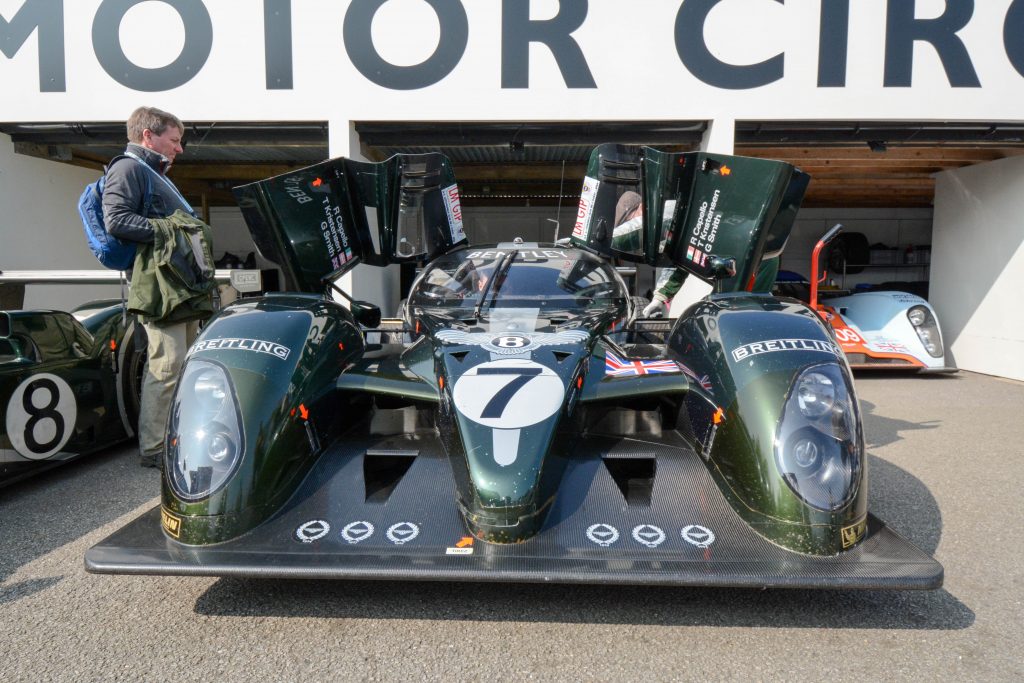
2003 Bentley Speed 8 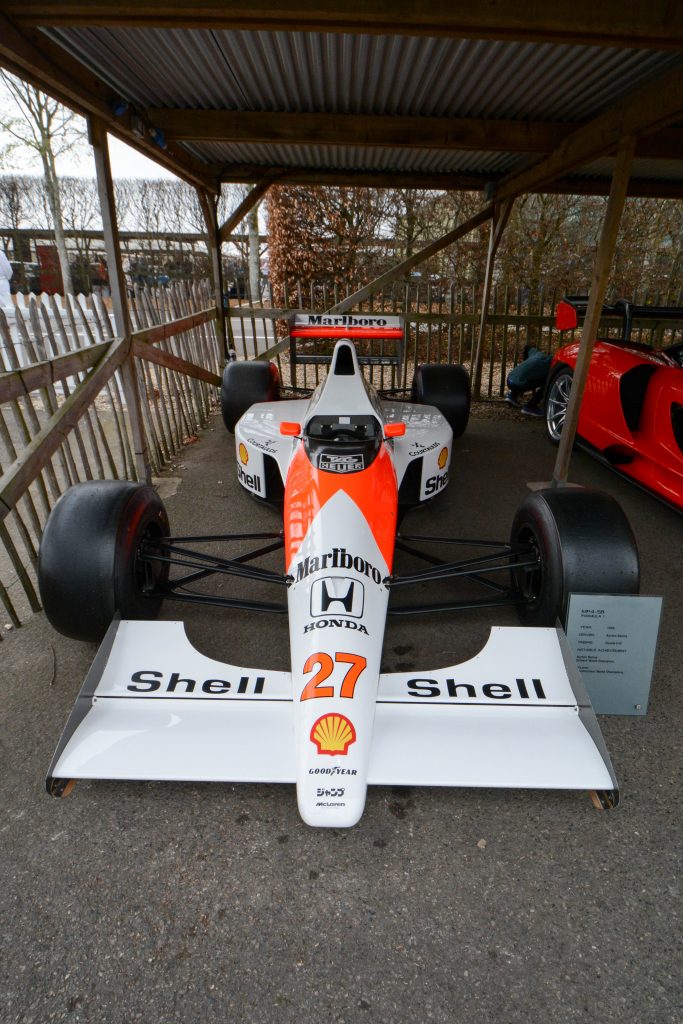
1990 McLaren MP4-58 ex-Senna 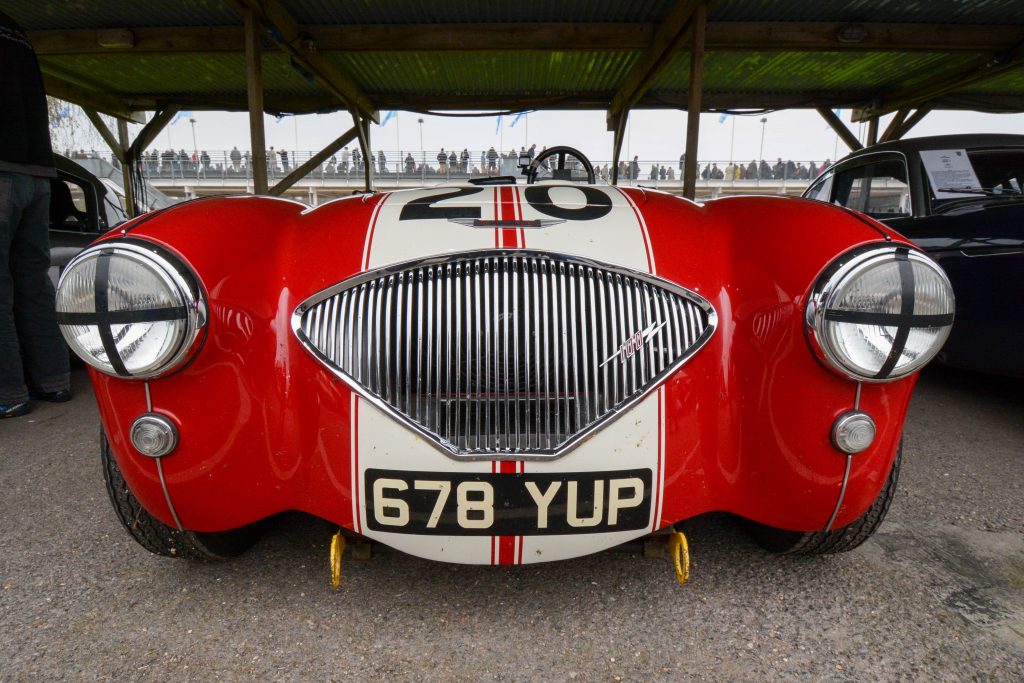
1955 Austin Healey 100/4
In Summary
The 77th MM was a great event. By holding the meeting slightly later in the year it made for a far better experience for competitors and fans alike, conducted as it was in balmy and sometimes sunny Spring weather rather than the Arctic climate of the frozen tundra.
It gave me the opportunity to give the Yellow Peril a much needed blast around the English countryside, meet up and talk cars with old friends and see some great racing cars being driven as they should be:- flat-out and full-on! Roll-on the 78th MM!
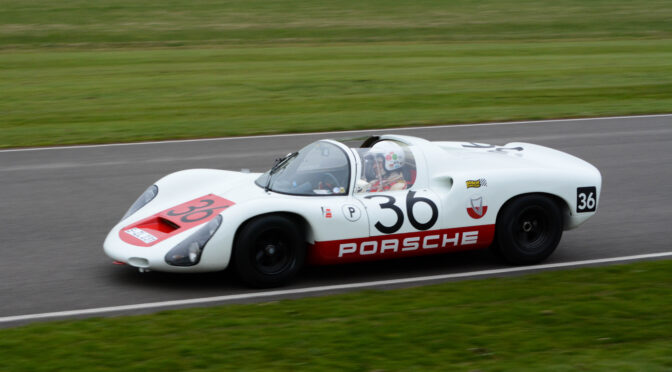
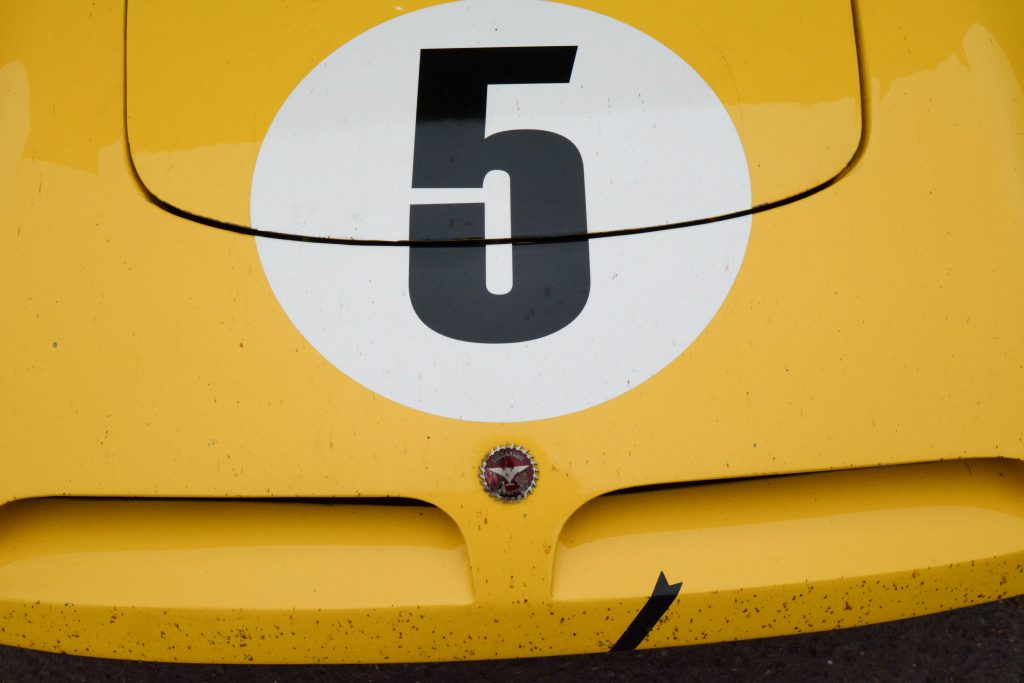
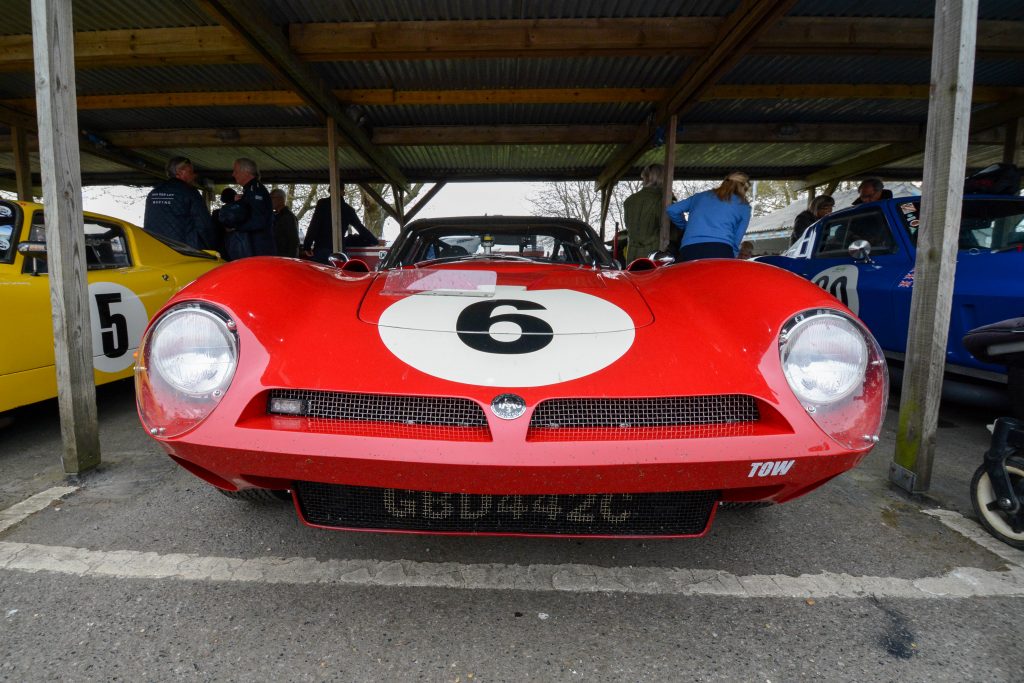
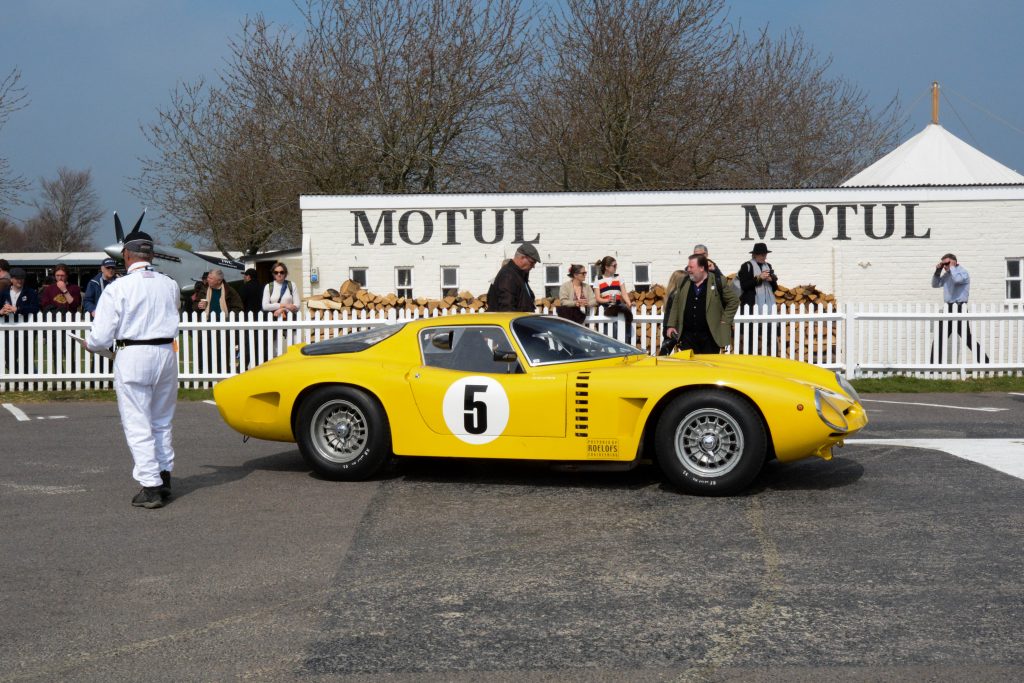
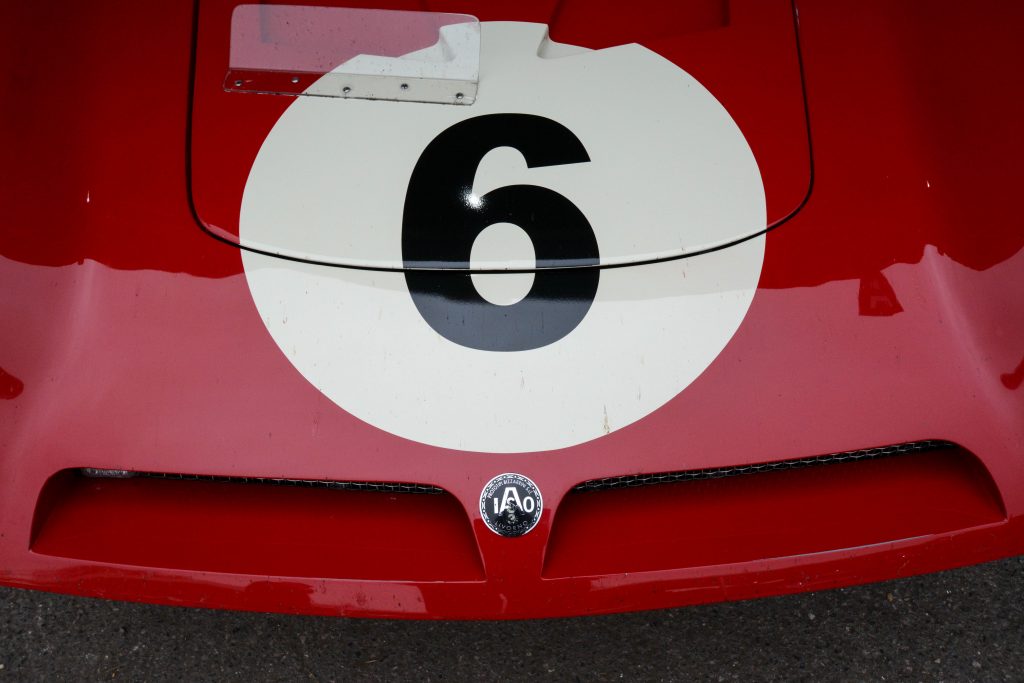
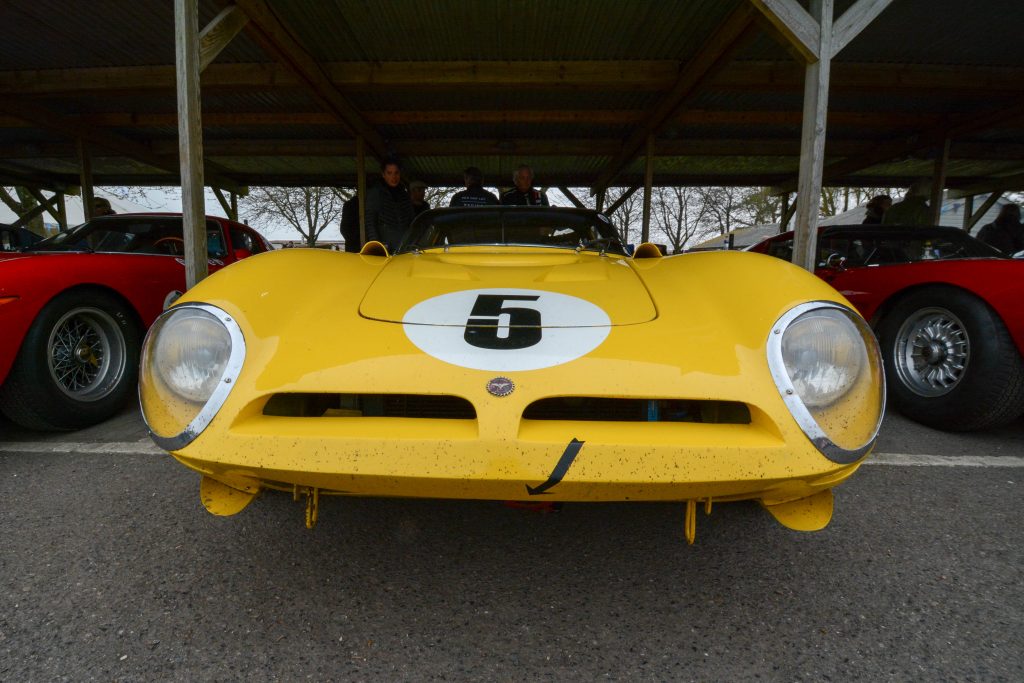
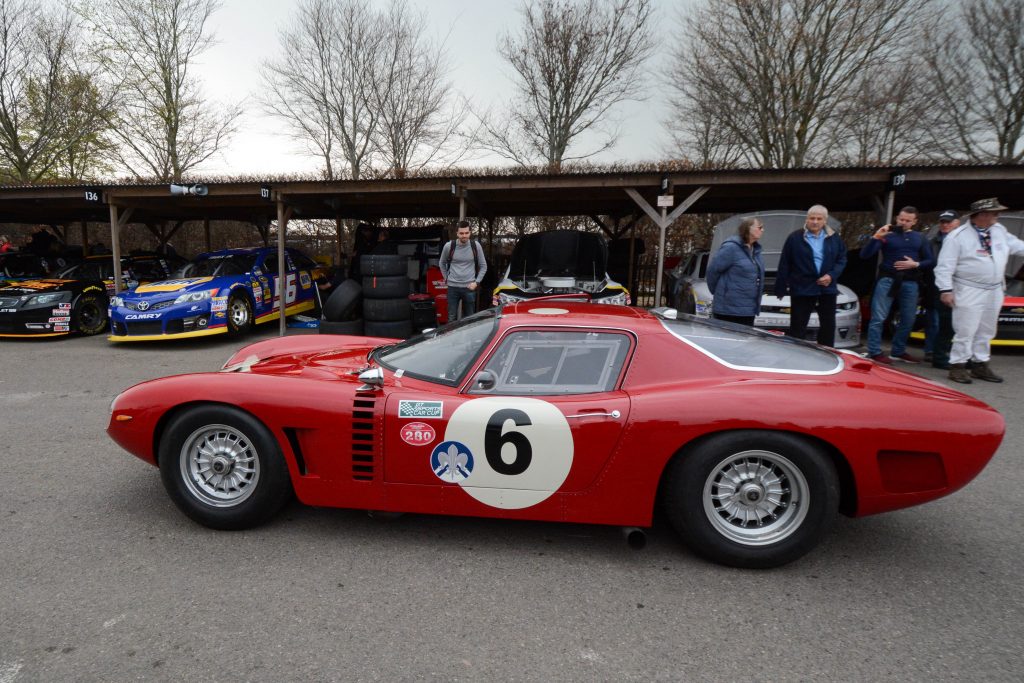
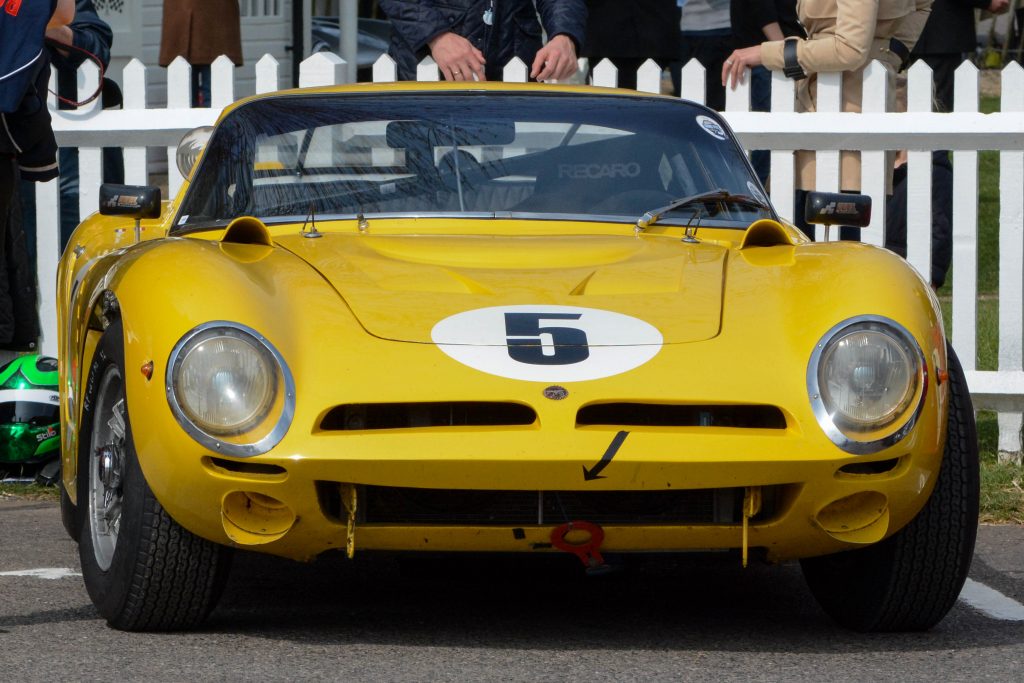
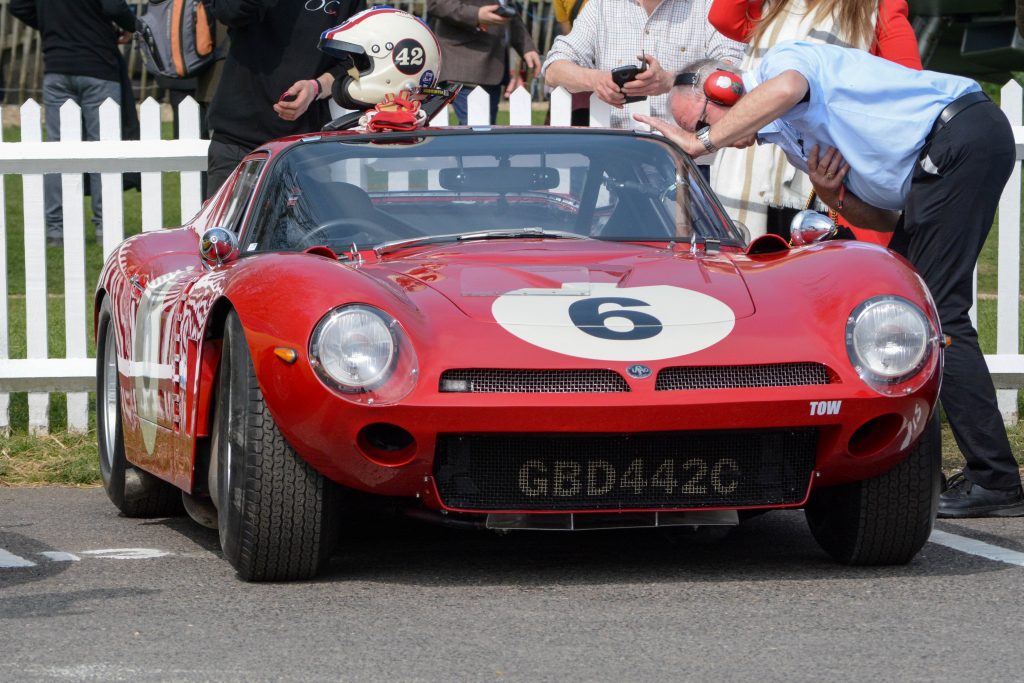
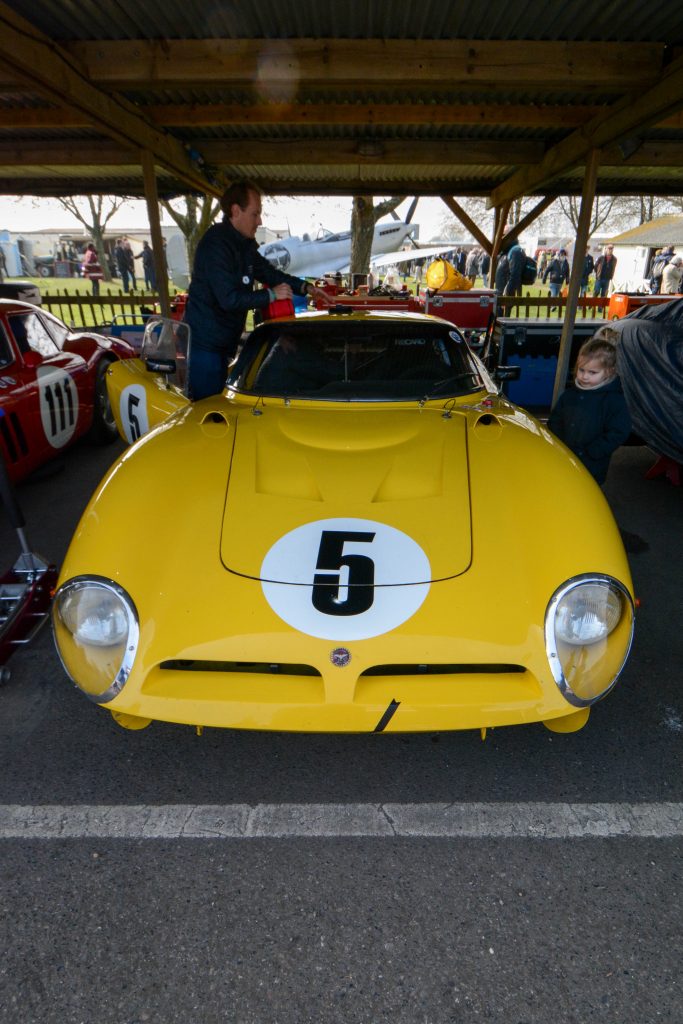
Fantastic as per usual Phil. I wish I could have been there.
It was good – especially without sub-zero temperatures and snow!